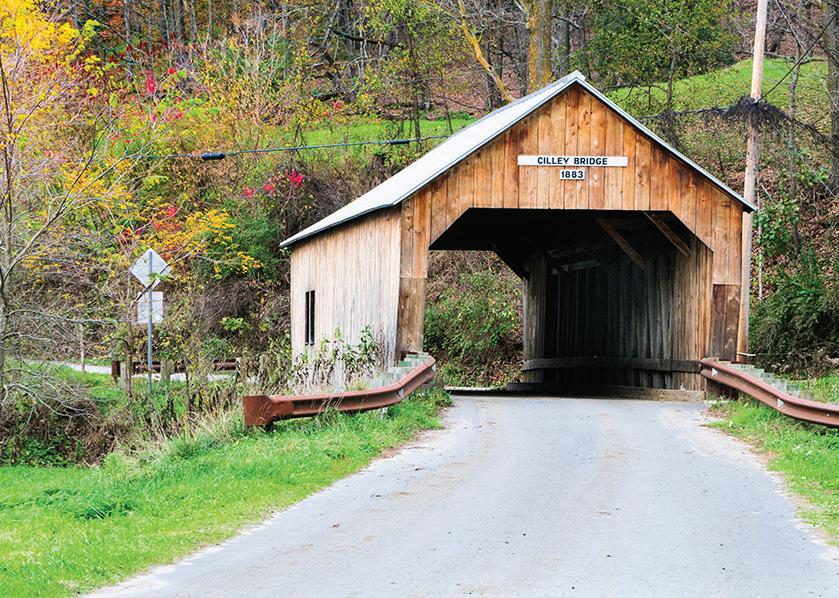






























































































84
From the mountains to the sea, New Hampshire’s historic resort hotels offer gilded-era getaways. By Bill Scheller
110
Retracing George Washington’s 1789 New England tour means bushwhacking through a lot of local myths. By Justin Shatwell
116
A love letter to a soap opera–obsessed grandmother whose immigrant journey was its own tale of drama and woe. By Ann Hood
120
We take a look at (and a little nibble of) the surprisingly fasttrending crop growing off the Maine coast. By Rowan Jacobsen
94
A Hard Life Made Beautiful
Few know what it’s really like to live as a deep-sea fisherman, doing dangerous, backbreaking work out in the elements. But Joel Woods does. He lives it. And because he brings a camera on board, he reveals it to the rest of us with an unforgettable—and almost miraculous—intimacy.
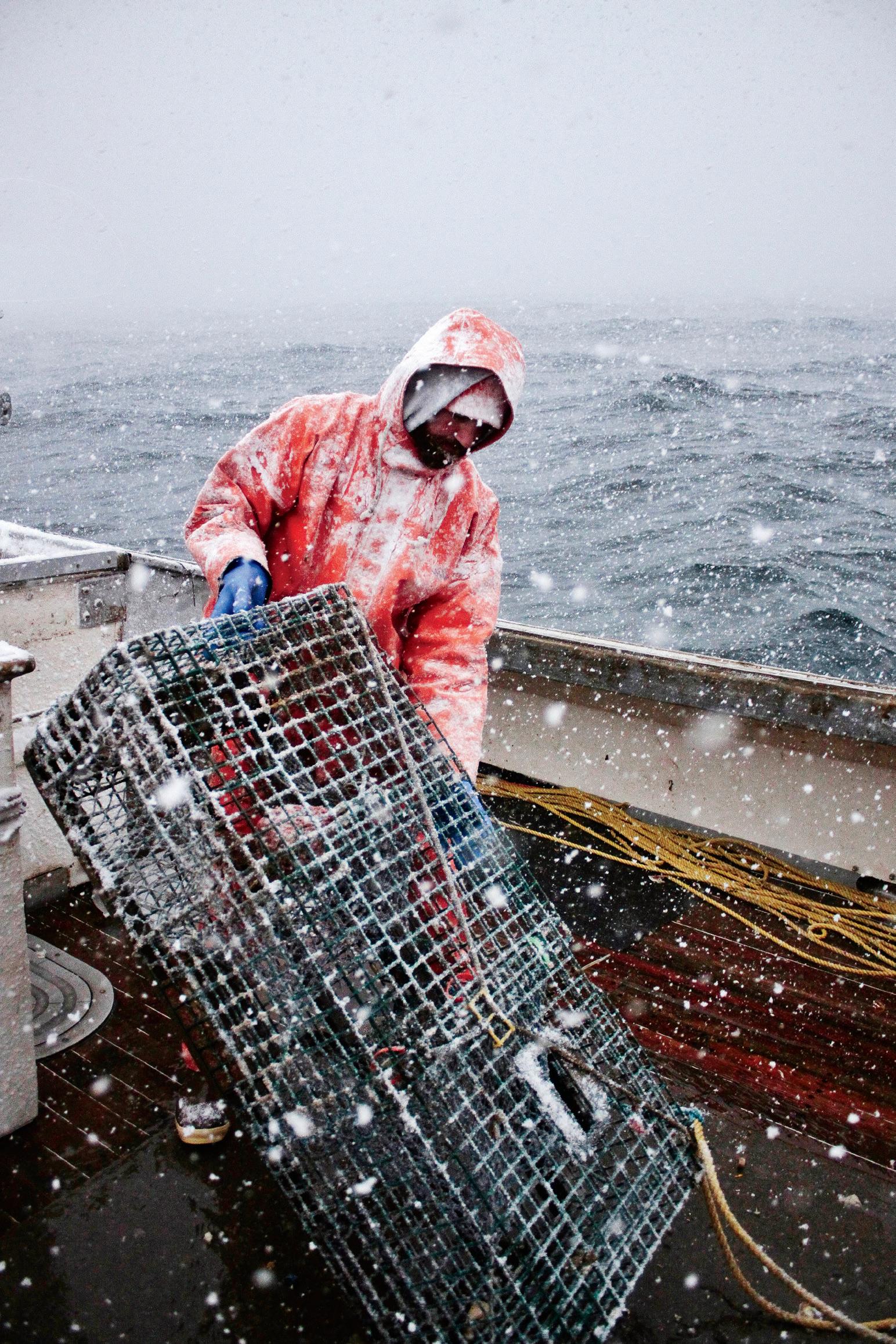
work.
124
As a volunteer fireman, Randi Calderwood always showed up for his neighbors—until the fateful day when they needed to show up for him. By Julia Shipley
“Mount Washington Hotel in Winter,” Lantern Press Artwork


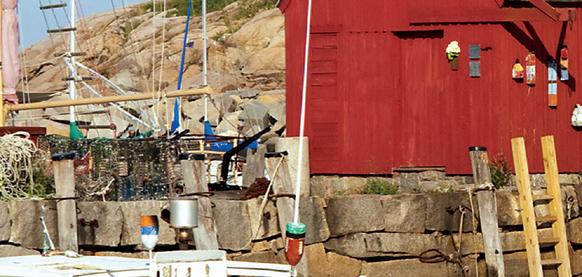

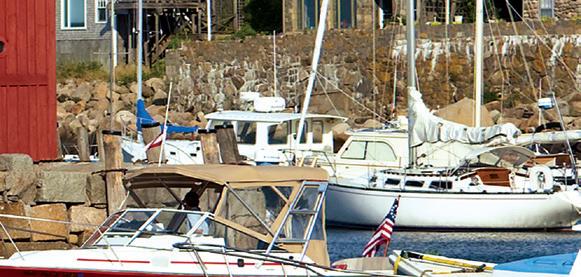



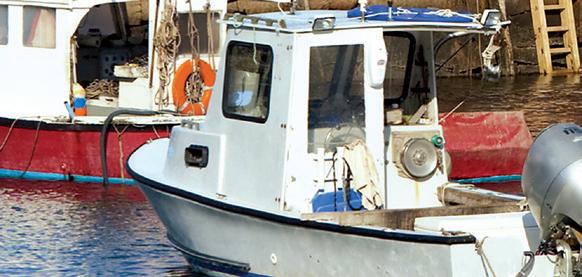







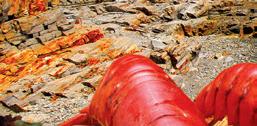
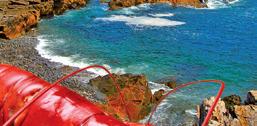


















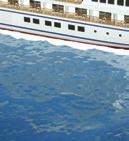





















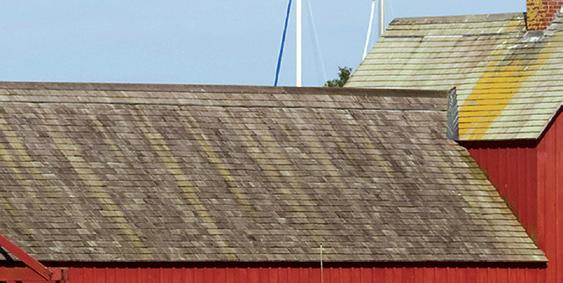
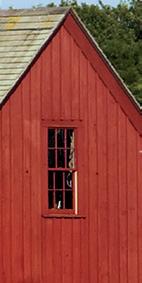







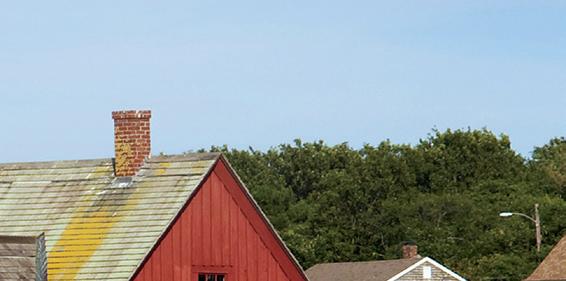
54 /// Sunken Treasure
In New Bedford, Massachusetts, sea scallops enrich the local economy as they enthrall seafood lovers everywhere. Plus: five recipes to make your mouth water. By Jean Kerr
62 /// Local Flavor
For nationally acclaimed breakfast eats with a side of Rhode Island history, pull up a vinyl and chrome stool at the timeless Modern Diner. By Amy Traverso
68 /// Could You Live Here?
Town and gown thrive side by side in Hanover, New Hampshire. By Annie Graves
74 /// The Best 5
Off-season idylls that prove our beaches aren’t just for summer. By Kim Knox Beckius
76 /// Local Treasure
A best-selling author turned bookstore proprietor writes a new ending for a community landmark in Plainville, Massachusetts. By Joe Bills
78 /// Out & About
Battle of the antique sleighs, hanging out at Mark Twain’s, and more. Compiled by Joe Bills
32 Blend the Past with the Present: A 1745 farmhouse bridges the eras with a designer’s flair. By Alexandra Hall
37 Hang On to the “Good Stuff”: Don’t throw out the banister with the bathwater! By Bruce Irving
40 Bring Vintage Windows Back to Life: Meet a restorer who keeps the “eyes” of historic homes sparkling. By Sue Hertz

44 Reimagine the Traditional: With color and creativity, a Vermont artist takes colonial floorcloths to a new level. By Annie Graves
48 Keep That Wrecking Ball at Bay: Our House for Sale column celebrates the rescue of a storied 18th-century gem in Massachusetts.
departments
8 CONNECT WITH NEW ENGLAND
10
DEAR YANKEE, CONTRIBUTORS & POETRY BY D.A.W.
12
INSIDE YANKEE
14
MARY’S FARM
Reflections on the road less taken.
By Edie Clark16
LIFE IN THE KINGDOM
Where there’s a Subaru in every driveway ... and another for parts out back. By Ben
Hewitt20
FIRST LIGHT
Going wild for wolves at a Massachusetts sanctuary. By Laura Marjorie Miller
24 KNOWLEDGE & WISDOM
Keeping the winter brr s at bay, a poet’s musings on happier days, and Arctic explorer Robert E. Peary by the numbers.
28
UP CLOSE
Boston’s Mapparium: a world of wonder. By
Kelsey Liebenson-Morse140
The photographer of a lost valley.
THEPOEMREADS:
THEPOEMREADS:
Dear Reader,
The drawing you see above is called The Promise It is completely composed of dots of ink. After writing the poem, I worked with a quill pen and placed thousands of these dots, one at a time, to create this gift in honor of my youngest brother and his wife.
Dear Reader,
The drawing you see above is called “The Promise.” It is completely composed of dots of ink. After writing the poem, I worked with a quill pen and placed thousands of these dots, one at a time, to create this gift in honor of my youngest brother and his wife.
Now, I have decided to offer The Promise to those who share and value its sentiment. Each litho is numbered and signed by hand and precisely captures the detail of the drawing. As a wedding, anniversary or Valentine’s gift or simply as a standard for your own home, I believe you will find it most appropriate.
Now, I have decided to offer “The Promise” to those who share and value its sentiment. Each litho is numbered and signed by hand and precisely captures the detail of the drawing. As a wedding, anniversary or Valentine’s gift or simply as a standard for your own home, I believe you will find it most appropriate.
Dear Reader,
Measuring 14" by 16", it is available either fully-framed in a subtle copper tone with hand-cut double mats of pewter and rust at $145*, or in the mats alone at $105*. Please add $16.95 for insured shipping and packaging. Your satisfaction is completely guaranteed.
My best wishes are with you.
Measuring 14" by 16", it is available either fully framed in a subtle copper tone with hand-cut mats of pewter and rust at $110, or in the mats alone at $95. Please add $14.50 for insured shipping and packaging. Your satisfaction is completely guaranteed.

My best wishes are with you.
The Art of Robert Sexton • P.O. Box 581 • Rutherford, CA 94573
The drawing you see above is called “The Promise.” It is completely composed of dots of ink. After writing the poem, I worked with a quill pen and placed thousands of these dots, one at a time, to create this gift in honor of my youngest brother and his wife.
The Art of Robert Sexton, 491 Greenwich St. (at Grant), San Francisco, CA 94133
All major credit cards are welcomed. Please send card name, card number, address and expiration date, or phone (415) 989-1630 between 10 a.m.-6 p.m. PST, Monday through Saturday. Checks are also accepted. Please allow up to 5 to 10 business days for delivery. *California residents- please include 8.0% tax
MASTERCARD and VISA orders welcome. Please send card name, card number, address and expiration date, or phone (415) 989-1630 between noon-8 P.M.EST. Checks are also accepted. Please allow 3 weeks for delivery.
Now, I have decided to offer “The Promise” to those who share and value its sentiment. Each litho is numbered and signed by hand and precisely captures the detail of the drawing. As a wedding, anniversary or Valentine’s gift or simply as a standard for your own home, I believe you will find it most appropriate.
Please visit my Web site at www.robertsexton.com
Measuring 14" by 16", it is available either fully framed in a subtle copper tone with hand-cut mats of pewter and rust at $110, or in the mats alone at $95. Please add $14.50 for insured shipping
“The Promise” is featured with many other recent works in my book, “Journeys of the Human Heart.” It, too, is available from the address above at $12.95 per copy postpaid. Please visit my Web site at www.robertsexton.com

“Across the years I will walk with you— in deep, green forests; on shores of sand: and when our time on earth is through, in heaven, too, you will have my hand.”
“Across the years I will walk with you— in deep, green forests; on shores of sand: and when our time on earth is through, in heaven, too, you will have my hand.”
1121 Main St., P.O. Box 520, Dublin, NH 03444. 603-563-8111; editor@YankeeMagazine.com
EDITORIAL
EDITOR Mel Allen
ART DIRECTOR Lori Pedrick
DEPUTY EDITOR Ian Aldrich
MANAGING EDITOR Jenn Johnson
SENIOR EDITOR/FOOD Amy Traverso
PHOTO EDITOR Heather Marcus
SENIOR PHOTOGRAPHER Mark Fleming
DIGITAL EDITOR Aimee Tucker
DIGITAL ASSISTANT EDITOR Cathryn McCann
ASSOCIATE EDITOR Joe Bills
HOME & GARDEN EDITOR Annie Graves
INTERN Montana Rogers
CONTRIBUTING EDITORS Kim Knox Beckius, Edie Clark, Ben Hewitt, Julia Shipley
CONTRIBUTING
PHOTOGRAPHERS Julie Bidwell, Kindra Clineff, Sara Gray, Corey Hendrickson, Joe Keller, Joel Laino, Jarrod McCabe, Michael Piazza, Heath Robbins, Carl Tremblay
PRODUCTION
PRODUCTION DIRECTORS David Ziarnowski, Susan Gross
SENIOR PRODUCTION ARTISTS Jennifer Freeman, Rachel Kipka
DIGITAL
VP NEW MEDIA & PRODUCTION Paul Belliveau Jr.
DIGITAL MARKETING MANAGER Amy O’Brien
YANKEE PUBLISHING INC.
established 1935
PRESIDENT Jamie Trowbridge
EDITOR-IN-CHIEF Judson D. Hale Sr.
VICE PRESIDENTS Paul Belliveau Jr., Jody Bugbee, Judson D. Hale Jr., Brook Holmberg, Sherin Pierce
CHIEF FINANCIAL OFFICER Ken Kraft
CORPORATE STAFF Mike Caron, Linda Clukay, Sandra Lepple, Nancy Pfuntner, Bill Price, Christine Tourgee
BOARD OF DIRECTORS
CHAIRMAN Judson D. Hale Sr.
VICE CHAIRMAN Tom Putnam
DIRECTORS Andrew Clurman, H. Hansell Germond, Daniel Hale, Judson D. Hale Jr., Joel Toner, Cor Trowbridge, Jamie Trowbridge
FOUNDERS
ROBB & BEATRIX SAGENDORPH
PUBLISHER Brook Holmberg
ADVERTISING: PRINT/DIGITAL
VICE PRESIDENT/SALES Judson D. Hale Jr.
SALES IN NEW ENGLAND
TRAVEL, NORTH Kelly Moores (NH North, ME) KellyM@yankeepub.com
TRAVEL, SOUTH Dean DeLuca (NH South, CT, RI, MA) DeanD@yankeepub.com
TRAVEL, WEST David Honeywell (NY, VT) Dave_golfhouse@madriver.com
DIRECT RESPONSE Steven Hall SteveH@yankeepub.com
SPECIAL PROJECTS Rebekah Valberg, 617-733-2768 Rebekah@maxradius.net
CLASSIFIED Christine Anderson Yankee.MyAdPortal.com
SALES OUTSIDE NEW ENGLAND
NATIONAL Susan Lyman, 646-221-4169 Susan@selmarsolutions.com
CANADA Alex Kinninmont, Françoise Chalifour, Cynthia Jollymore, 416-363-1388
AD COORDINATOR Janet Selle
For advertising rates and information: 800-736-1100, ext. 149 NewEngland.com/adinfo
MARKETING
CONSUMER
MANAGERS Kate McPherson, Kathleen Rowe
ASSOCIATE Kirsten O’Connell
ADVERTISING
DIRECTOR Joely Fanning
ASSOCIATE Valerie Lithgow
PUBLIC RELATIONS
BRAND MARKETING DIRECTOR Kate Hathaway Weeks
NEWSSTAND
VICE PRESIDENT Sherin Pierce
DIRECT SALES
MARKETING MANAGER Stacey Korpi

SALES ASSOCIATE Janice Edson
SUBSCRIPTION SERVICES
To subscribe, give a gift, or change your mailing address, or for other questions, please contact our customer service department: Online: NewEngland.com/contact
Phone: 800-288-4284
Mail: Yankee Magazine Customer Service
P.O. Box 422446
Palm Coast, FL 32142-2446 Printed
These gems are pure magic, old New England winter scenes Here captured in a field of white are frozen ponds and streams, snow hills and valleys, and snow-covered open fields They are winter-white-perfect, over the river and through the woods, trees in black lace silhouetted against a wintergray sky Think ice-covered grasses, Queen Anne’s Lace, black crows on the wing, twilight winter ’s sleep, and stars in the sky.
“Snow Opal”* Pendants.................$195.00 to $495.00
18" sterling silver chain
Visit us on-line or give us a call They really are magic
*“Snow opal” is its name.


The gem material is a natural agatized quartz
He loves me a little
He loves me a lot.
He loves me passionately
He loves me madly.
He loves me not at all



All sterling silver, 18" chain X2541 $165.00
Sterling silver, 14K yel gold center, 18" silver chain (shown) X2542............................$345.00

All 14K yellow gold, 18" gold chain X2543 $1, 525.00
2,000 MORE

Great gift ideas on-line
You know what it feels likes to have a friend, and you know what it feels like to have a true friend The talks, the deep soul-felt conversations A cup of coffee, some time, and you know how good you feel after you’ve spent the morning together
Our two little birds, together on a branch, are exquisitely hand-pierced by Caroline Golden Handmade design, front and back magically shows the two birds in different seasons

Front: spring - summer (tree with leaves)
Back: fall - winter (leaves on the ground)

Seasons Pass The Friendship Remains
Sterling silver ..................X3967 ..................$175.00


14K yellow gold X3968 $750.00

Born of a song of the sea and longing hearts
Two strands of gold
Two lives side by side
Follow with the eye

Over, under, around and through
Returning to the beginning
Eternal like love
Necklace with 18" chain
14K yel gold X1225 $ 775.00
sterling silver X2456 $95.00
Earrings
14K yel gold X1079 $545.00 sterling silver......X2460 ........$175.00 H
Seasons: 10 Prettiest Winter Mountain Towns
Move over, summer!

These lofty locales are well worth a snowy visit.
NEWENGLAND.COM/ WINTERMOUNTAINTOWNS

Recipes: New England Chowder Favorites
From clam to corn, our can’t-miss chowder recipes to warm you up.
NEWENGLAND.COM/ CHOWDERFAVORITES
































Travel: Kennebunkport Without the Crowds
Exploring the romantic side of a Maine getaway in the off-season.
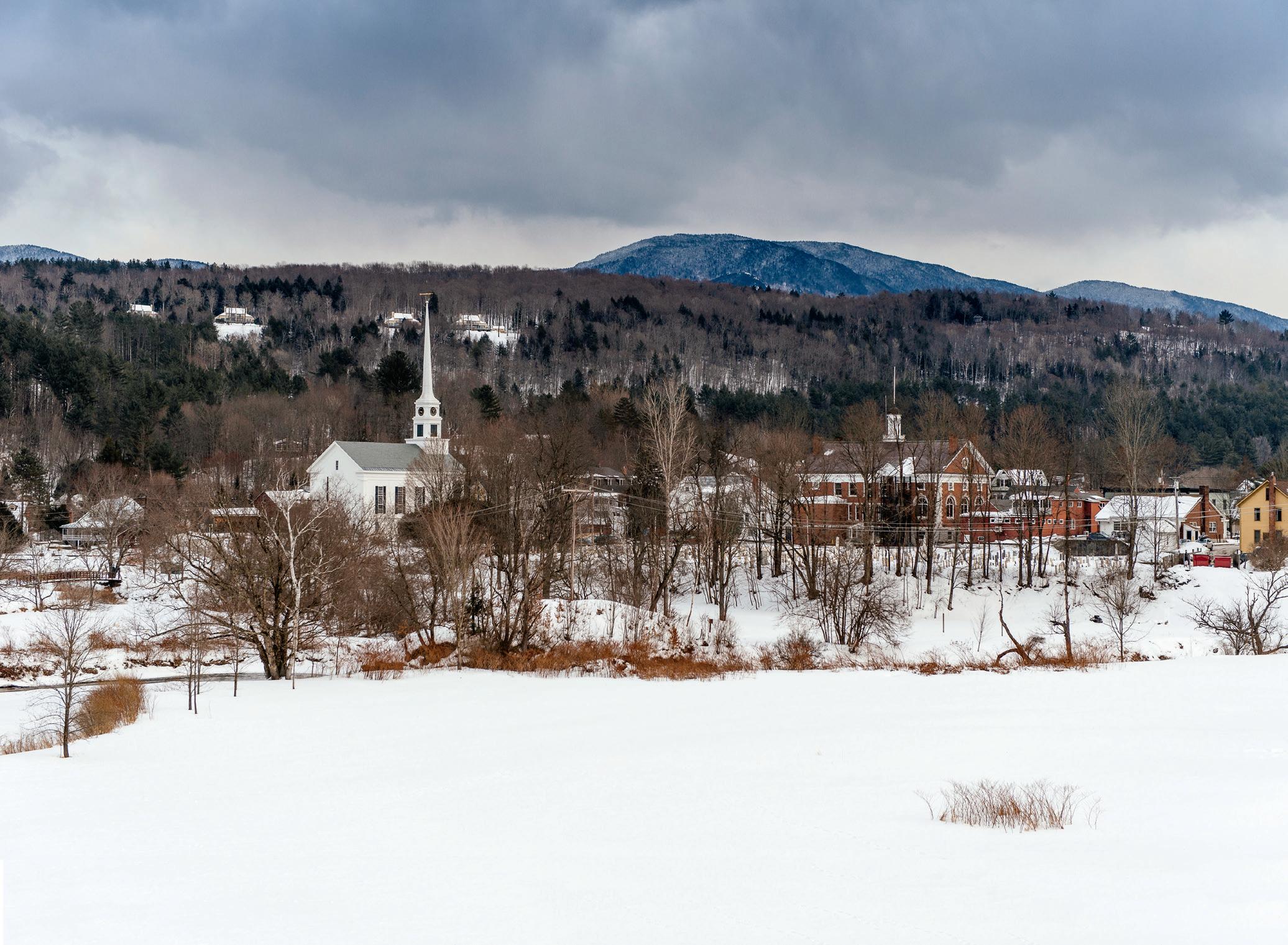
NEWENGLAND.COM/ KENNEBUNKPORTWINTER
History: NECCO Sweethearts

Celebrating a Valentine’s Day classic, New England–made since 1866.
NEWENGLAND.COM/ SWEETHEARTS
Massachusetts:








JEAN KERR
A veteran food writer and cookbook author, Kerr is not only a native New Englander but also a cook who cares deeply about the future of its fisheries. While reporting “Sunken Treasure” (p. 54), she says, “it was a welcome surprise to see how carefully the New Bedford scallop fishery is maintained, and how successful marine biologists and scallopers have been in their work together.”
JOEL WOODS
A native of New Hampshire, Woods is a fisherman who’s spent more than two decades working up and down the East Coast—and taking extraordinary photographs all along the way (“A Hard Life Made Beautiful,” p. 94). As he puts it: “I simply have the opportunity to go where few rarely do. And with my lens, I capture an instant … then drag it ashore to show those who care to see.”

SUE HERTZ
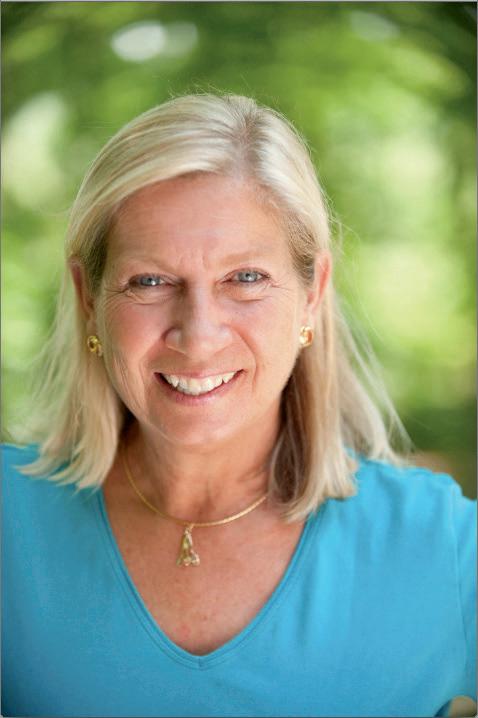
An affinity for antique properties began early for Hertz (“Bring Vintage Windows Back to Life,” p. 40) when her parents renovated a crumbling Victorian in Hingham, Massachusetts. Today a widely published writer who teaches English at the University of New Hampshire, she rambles around her own creaky 200-year-old home, married to a man with a master’s degree in historic preservation.
CLARE OWEN

Having illustrated Edie Clark’s column Mary’s Farm (p. 14) for the past three years, Owen says that she always looks forward to each installment: “It’s so wonderful to read her reflections on the changing seasons, the antics of the animals, and the comings and goings of friends and neighbors.” Owen lives in Bristol, England, with her boyfriend and two cats, Penny and Toulouse.
NINA GALLANT


Combining photography with food came naturally to this Massachusetts-raised daughter of a baker and a restaurant manager. Gallant, whose work has appeared in such publications as Food & Wine and The Boston Globe , says shooting our scallop feature (“Sunken Treasure,” p. 54) was “my favorite kind of food photo project—the kind that uses food as a vehicle for the human story.”

Shatwell (“Curious About George,” p. 110) is a longtime Yankee contributor and public historian who lives in western Massachusetts, where he designs exhibits for history museums. “It was a lot of fun taking a road trip with the ghost of George Washington,” he says of writing this issue’s feature. “For my next story, I’m going fly-fishing with Franklin Pierce.”
We received many wonderful online comments on our November/December story “A Fatal Mistake,” about the sinking of the container ship El Faro. Here are four of the most memorable.
I’m in Malaysia and have never, ever gone to sea. There is therefore a severe limit as to what I could possibly visualize of what a ship like this and its crew go through. Without this article, many of us wouldn’t have known the human side of things. It would merely have remained “a container ship in the U.S. that sank during a hurricane.” —Ahmad
Mike Davidson was one of the few people I considered a friend in my life. I wish I had known the other 32 people on board only so that I could celebrate them as well. Mike was as ambitious as he was cautious, as personal as he was professional. I mourn all those who went beneath the sea that day. —Tom
My cousin Dylan was aboard the El Faro, and a day hasn’t gone by that I haven’t thought of him. Beyond the grief, I find myself reflecting on the bright future he had ahead of him…. This was his first trip for [El Faro
• “The Conscience of a Chief” (September/ October) incorrectly stated that Alicia Marshall had phoned the Burlington Free Press and spoken to reporter Elizabeth Murray. In fact, Murray interviewed Marshall and her family at home after first speaking with them by phone.
• “A Fatal Mistake” (November/December) misspelled the name of Steven Shultz. It also should have said that he was relatively new to the job of first mate on the El Faro but had worked for years for its owner.
• Our November/December event calendar gave an incorrect contact number for Blithewold Mansion, Gardens, and Arboretum. It is 401-253-2707.

Postcards sent from warmer places
—D.A.W.
owner] TOTE, as he had just graduated Maine Maritime Academy the previous spring. I’d like to think if it wasn’t for a corporation’s greed and the arrogance of the captain that they’d all be with us today. I don’t like talking bad about the captain, as I know he has friends and family grieving as well, and largely I blame it on the pressure he was under from the company…. —Ian
One year ago, I gasped in horror and burst into tears at the news that an American ship was missing in a hurricane. Because it was personal—my son is a midshipman at the U.S. Merchant Marine Academy. All I could think about was the anguish of their families, because if my boy chooses to sail postgraduation, I will be the one on land ... constantly thinking of him being at sea. —Tracie

Write us! Send your comments to editor@YankeeMagazine.com. Please include where you live. Letters may be edited for length and clarity.



rom the day I first came to Yankee, back in 1979, I have seen thousands of photographs of New England. This region teems with photographers telling stories with their cameras. It’s not simply what they see; it’s also how they see. But in all my years here, I have never been so surprised, so astonished, as when I saw the work of a Maine fisherman named Joel Woods (“A Hard Life Made Beautiful,” p. 94).
I hadn’t heard of Joel until I received an email from the fine travel writer Malerie Yolen-Cohen; “I’ve never seen such stunning commerical-fishing photos,” she wrote. I searched online and found his website. Whatever I had been planning to do for the next hour vanished as I clicked through image after image, each eliciting the same response: How did he get that?
I wrote Joel immediately. Days passed without a reply—which wasn’t surprising. When you fish for a living many miles offshore, you can’t simply check your messages, and you aren’t in a position to answer as quickly as politeness dictates. Finally, he replied, and soon I went to see him in Rockport, Maine. This is something to know: He’s based in the same town as the Maine Media Workshops and College, where for years the best photographers in the world have been coming to teach seminars. Yet few, if any, are familiar with his work. Outside of his Facebook friends, nearly all of whom know him from his lobstering and deep-sea-trawling life, he remains virtually unknown.
I hope what you see in our pages will change that. Joel tells everyone he is a fisherman, not an artist. He works at sea, often in harsh, bitter cold, his hands covered in grease or slime or blood. But since the day he picked up a camera, he’s found an opening into a world few have seen. And he’s also found an opening into himself.
Beyond Joel’s photos, you’ll discover other gifts from the sea in this issue. We ponder whether the time is ripe for Maine seaweed to become the next “in” food (“Seaweed Dreaming,” p. 120). Plus, we fill your plate with recipes showcasing what may be the most succulent seafood of all: the sea scallop (“Sunken Treasure,” p. 54).
In these days of darkness and blustery winds, it’s a good time to think of the men and women tossing about on a winter ocean to bring us the seafood we take for granted—and of one fisherman in particular who finds a way to tug off his gloves, grab a camera, and freeze for all time a sliver of what his world looks like. And how he sees it.
Mel Allen, Editor editor@YankeeMagazine.com



















The GPS crowd learns that when it comes to country roads, some are less taken for a reason.
he man who built my house in 1762 also built my road. He was the first settler up here, having moved from Massachusetts. He raised the barn first, then built the house and, finally, the road. I doubt very much that he was awed by the view, if he ever took time to look at it. For him, this was a place to live and a place to farm, working the forest soil and pulling the stumps and roots and boulders and stones out of the earth until it was tillable. And so it grew, along with the history that today is visible all around us. He and his family were here a long time without neighbors; I still have only one house within sight.
When I first lived up here, a car passing by was a rare event. I used to estimate that we had about three per day. But that was 20 years ago, and only two of us lived here year-round. There are more now—and the more people, the more cars. I would not have thought it, but the prevalence of GPS has brought more cars here too. While I don’t have GPS (it doesn’t work well in my area), apparently there’s a setting that allows you to find the “most direct” route to your destination. Imagine my surprise when I heard the rough grinding of gears preceding the polished grille of an 18-wheeler straining up the hill past my house.
Beyond my driveway, the road turns to dirt, and then a 180-degree turn begins the plummet down what we call Number Four Hill. I had never seen anything like this truck here, and I knew the road well enough to know what would happen next. Thirty years ago Number Four Hill was similar to a dry riverbed, a rutted single-lane road, and today it’s still all I can do to squeeze my VW past another car coming the other way at a crawl. Sure enough, soon enough, the big truck was slowly backing up.
After that, I witnessed more and more trucks making the grade up the hill—and coming back down in reverse. I went to talk to the selectmen. “Someone’s going to get killed,” I said. They didn’t have any suggestions. “You have to talk to the folks at GPS,” they said with sly smiles, which meant Good luck! And then the invasion ended, just like that. Somehow the truckers got the message: The road might be faster, but all roads are not equal.
And now we are back to the occasional car. For the most part, I know to whom the cars belong, which gives a cozy feeling, watching the neighbors come and go. Anne going to get groceries, Nina on the way to get her mail, Noel heading to the dump with his dogs. In haying season the traffic is constant, with tractors and hay wagons working the fields all around—a time I refer to as “the circus.” There is always something to watch, which is a contrast to the still life outside my windows most of the year. The longer I am here, the more I feel part of the vista, part of the scene. Like the big maple out in front of my house, my limbs spread wider and my roots grow deeper.
Edie Clark’s books, including her newest, As Simple as That: Collected Essays , are available at edieclark.com.

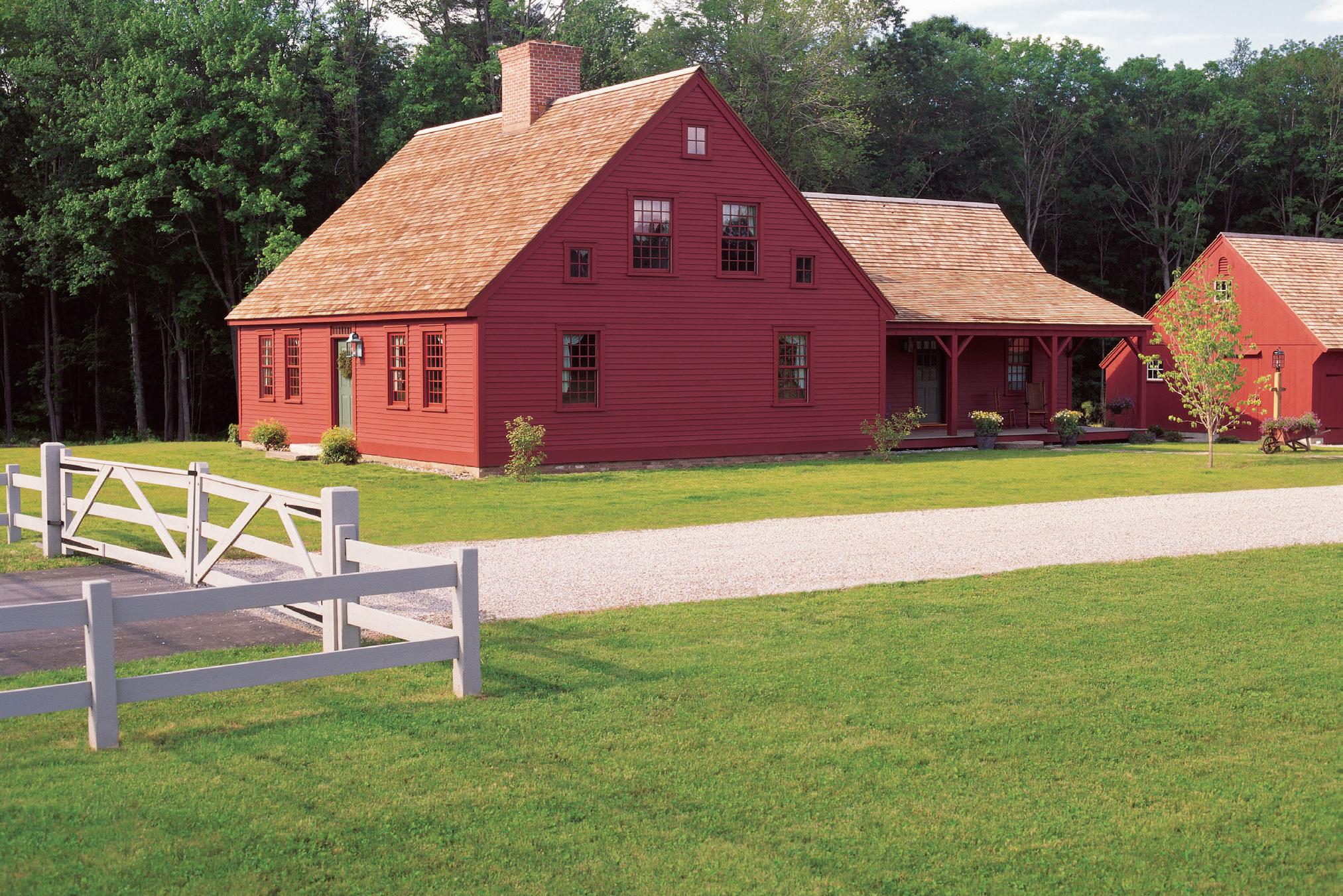











Vermont claims a state bird (hermit thrush), a state flower (red clover), and a state mammal (Morgan horse), but its truest symbol may be its unofficial state automobile, the Subaru.
bought my first Subaru when I was still a teenager. It was a dun-colored 1977 GL wagon, and it cost me a whopping $300, which I’d earned by serving as head broom-wielder on a small carpentry crew. This was in 1988 or thereabouts, before Subarus had become nearly ubiquitous in Vermont. Indeed, these days it is not uncommon to emerge from the supermarket and climb behind the wheel of someone else’s same-colored Subaru wagon. Yes, I’ve done this. Twice. And one of those times, I actually started the car before I realized my mistake, because like most folks in rural Vermont the owner of this ’ru had left his or her keys dangling from the ignition. Heck, if not for Rod Stewart crooning from the CD player, I might’ve driven the wrong car home.
Anyway. I drove that ’77 for about as long as one can reasonably expect to drive a $300 car, and I did not own another Subaru until shortly after our oldest son, Fin, was born in 2002. This one was a 1994 Legacy in a particularly unflattering shade of brown, as if mud season had never relented. We picked it up cheap, too—I can’t remember exactly how much, but I doubt it was more than $1,000, if only because we never spent more than $1,000 on our vehicles back then—and, as with that old ’77, we got exactly what we paid for: This one lasted only about a year before suffering a fatal internal engine failure.
By then we were hooked on Subaru’s all-wheel-drive system, so we bought yet another Subie. This time we spent a serious chunk of change, dropping $4,000 on a 1995 Legacy wagon that had spent most of its life in Rhode Island, where the roads are not bathed in salt on a regular basis and cars do not disappear before your eyes as rust consumes them. By our modest standards, the car was in exquisite condition (meaning we could not watch the road unfurl beneath us through a hole in the floorboard) and replete with all manner of luxury options (meaning it boasted a working heater and a cassette deck). Best yet, it had a mere 107,000 miles.
We loved that car. I’m not going to say it never failed us, because that would be a lie, but it was very, very good to us. We drove it for nearly five years. We filled it with building materials, piglets, lambs, more piglets, hay bales, and still more piglets. Once I even strapped two tractor tires to the roof and drove from Maine to Vermont. While this did not make for a relaxing trip, the looks I got from oncoming motorists justified my anxiety. By the time I was halfway home, I’d stopped to inspect the ratchet straps securing my cargo approximately 37 times, but they remained as taut as at the outset of my journey, and I finally relaxed.
The ’95 eventually succumbed to rust, though not before I received a phone call from a detective with the Vermont State Police; apparently the fellow who’d sold us the car had been buying cheap high-mileage rigs from out of state and rolling the odometers back, thus drastically
One in a long line of Subarus owned by the Hewitts, this 1996 Outback is shown earning its keep hauling a harvest of winter squash from the family garden. “I’ll bet we loaded at least 500 pounds,” says Ben. “But that’s being real conservative.”

BEN HEWITT
Puzzle 1000 pcs.$17.25 + S&H
Puzzle1000 pcs.$17.25
Puzzle 1000 pcs.$17.25 + S&H
Puzzle1000 pcs.$17.25
Puzzle 1000 pcs.$17.25 + S&H
Puzzle 1000 pcs.$17.25 + S&H
Puzzle 1000 pcs.$17.25 + S&H
pcs.$17.25
Puzzle1000 pcs.$17.25 + S&H
Puzzle1000 pcs.$17.25 + S&H
increasing the resale value of the cars. Our beloved Legacy actually had closer to 200,000 miles when we bought it. Shortly thereafter, restitution checks began appearing in our mailbox on a monthly basis. In fact, we’re still getting restitution checks for that car. I never kept track of how much we’ve received, but I don’t doubt it’s more than we paid for the car in the first place.
“RAINING CATS & DOGS” Book
“RAINING CATS & DOGS” Book
ISBN 0-399-24233-5 $17.99 + S&H
ISBN 0-399-24233-5 $17.99 + S&H
Puzzle 1000 pcs.$17.25 +
Puzzle1000 pcs.$17.25 + S&H
Puzzle1000 pcs.$17.25 + S&H
“Art to warm your heart and home” MT. NEBO GALLERY
Puzzle 1000 pcs.$17.25 +
Puzzle1000 pcs.$17.25 + S&H
“Art to warm your heart and home”
60 Grandma Moses Rd.
60 Grandma Moses Rd.
P.O. Box 94, Eagle Bridge, NY 12057
P.O. Box 94, Eagle Bridge, NY 12057
1-800-328-6326
1-800-328-6326
FREE color catalog is available featuring Will Moses limited edition Folk Art Prints, Books, Puzzles, Cards & More!
FREE color catalog is available featuring Will Moses limited edition Folk Art Prints, Books, Puzzles, Cards & More!
VISA MASTERCARD AMERICAN EXPRESS
PROMPT DELIVERY SATISFACTION GUARANTEED Visit us on the web at www.willmoses.com
“RAINING CATS & DOGS” Book
“RAINING CATS & DOGS” Book
ISBN 0-399-24233-5 $17.99 + S&H
ISBN 0-399-24233-5 $17.99 + S&H
“Art to warm your heart and home”
Puzzle 1000 pcs.$17.25 + S&H
Puzzle 1000 pcs.$17.25 + S&H
“Art to warm your heart and home”
Puzzle 1000 pcs.$17.25 + S&H
When that car failed inspection, we did what any Vermonter worth his or her patched woolen long johns would do: We parked it in the woods behind the house and immediately bought another 1995 Legacy wagon, allowing us to strip parts off the old car as they were needed on the new one. Over the span of a couple of years, we snagged the alternator, the heater core, both hatch struts, and the driver’s-side mirror. Better yet, the old Subaru served as a convenient hiding spot for valuables. When I was sitting on a wad of cash I had pulled from the bank while shopping for a tractor, I stuffed it into a Mason pint jar and stuck it under the spare tire. In hindsight this does not strike me as a particularly surprising (and therefore secure) location, but I was pretty pleased with myself at the time, and, most important, the cash was still there when I went to retrieve it.
more expensive to maintain, in large part because of the newer, 2.5-liter engine’s affinity for leaky head gaskets. Those of you who drive Subarus know exactly what I’m talking about; if you don’t, you will soon. But mostly I miss the utilitarian simplicity of those old Legacys, and even more so that GL, with its crank windows, its AM/FM radio, and the little handle between the vinyl seats you had to tug on to engage the four-wheel drive.
Of course, every modern automaker equips its cars with all manner of technological gewgaws; if it didn’t, it’d be out of business in a heartbeat. A friend of mine just bought a spanking-new Chevy pickup; included in the $65,000 (!!!!) price tag was an option for airconditioned seats. When my friend commented to the salesman about the array of features in his new truck, the salesman grinned. “Buddy,” he said, “this thing’s one button away from wiping your butt.” The interaction of vehicles and heinies seems to be the new frontier in automotive luxury.
MT. NEBO GALLERY
MT. NEBO GALLERY
60 Grandma Moses Rd.
P.O. Box 94, Eagle Bridge, NY 12057
60 Grandma Moses Rd. P.O. Box 94, Eagle Bridge, NY 12057
1-800-328-6326
1-800-328-6326
FREE color catalog is available featuring Will Moses limited edition Folk Art Prints, Books, Puzzles, Cards & More!
FREE color catalog is available featuring Will Moses limited edition Folk Art Prints, Books, Puzzles, Cards & More!
VISA MASTERCARD AMERICAN EXPRESS
VISA MASTERCARD AMERICAN EXPRESS
“RAINING CATS & DOGS” Book
“RAINING CATS & DOGS” Book
PROMPT DELIVERY SATISFACTION GUARANTEED Visit us on the web at www.willmoses.com
“RAINING CATS & DOGS” Book

PROMPT DELIVERY SATISFACTION GUARANTEED Visit us on the web at www.willmoses.com
ISBN 0-399-24233-5 $17.99 + S&H
ISBN 0-399-24233-5 $17.99 + S&H
ISBN 0-399-24233-5 $17.99 + S&H
“Art to warm your heart and home”
“Art to warm your heart and home”
“Art to warm your heart and home”
60 Grandma Moses Rd.
60 Grandma Moses Rd.
60 Grandma Moses Rd.
P.O. Box 94, Eagle Bridge, NY 12057
P.O. Box 94, Eagle Bridge, NY 12057
P.O. Box 94, Eagle Bridge, NY 12057
1-800-328-6326
1-800-328-6326
1-800-328-6326
FREE color catalog is available featuring Will Moses limited edition Folk Art Prints, Books, Puzzles, Cards & More!
FREE color catalog is available featuring Will Moses limited edition Folk Art Prints, Books, Puzzles, Cards & More!
VISA
VISA
We’ve had a few other Subarus since then—a beater Forester, an early-2000s Outback, and something else I’m not quite remembering—and we are now driving the nicest of the lot, a 2005 Legacy wagon Penny’s folks passed along to us when they quit driving a few years back. It’s a very, very nice car, with more amenities than I’d even known existed. For instance, did you know that some cars these days have these little buttons between the seats, and that a few minutes after you push the button that correlates to your seat, your rear end gets hot? I know, I know: It sounds crazy, but it’s true.
FREE color catalog is available featuring Will Moses limited edition Folk Art Prints, Books, Puzzles, Cards & More!


VISA MASTERCARD AMERICAN EXPRESS
PROMPT DELIVERY SATISFACTION GUARANTEED
Visit us on the web at www.willmoses.com
Visit us on the web at www.willmoses.com
Visit us on the web at www.willmoses.com

Grateful as I am for our current rig, if I’m to be perfectly honest I’m not nearly as fond of the newer Subarus as the older models. For one, they’re far
We’ll drive our current Subaru until the point we drive all of our cars, which is to say until the point it will drive no more. Hopefully, that’ll be another year or two. But in the meantime I’ve got my eye out, because what I’m looking for is becoming rare. What I’m looking for is any Subaru made before 1997, when the head gasket–hungry 2.5-liter engine was introduced. It needs to be in running condition, relatively free of rust, and, ideally, fitted with a cassette deck so that I can expose my children to the collection of mid-’80s classic rock I’m perennially stubborn to part with. I’ll even pay extra for crank windows and manually adjusted seats.
Finally, if by any chance you’ve rolled the odometer back and might at some point in the future be charged with odometer fraud and compelled to pay restitution, please, by all means, give me a call. I’ve got a nice wad of cash in the spare tire hold with your name all over it.


The Wolf Hollow pack has no trouble finding firm footing even in winter: Wolves’ oversize paws and webbed toes are designed for traversing snow.


ou don’t just hear a wolf howl. You feel it.
Striding across the parking lot to the Wolf Hollow sanctuary in Ipswich, Massachusetts, I’m suddenly frozen in my tracks by a sound I’ve heard recordings of since I was a child—but now it is live. So familiar, yet so immediate, rich, real, and present. I have to hold still a moment to let my brain catch up with my ears.
The howling of a wolf.
I spy the source: a handsome gray-and-buff-colored wolf, who turns to regard me with golden eyes. He throws back his head and howls again, his pack now joining him from unseen regions of the sanctuary, their voices weaving a magic carpet of sound that floats out over the salt marshes.
On this winter Saturday, the sanctuary is busy readying for visitors. Even before volunteers open the gate, the parking lot spills over, and a queue that includes a Cub Scout troop and a vanful of geoscience undergraduates soon snakes out the visitors center’s door. The aura of wolves brings some 150 people to Wolf Hollow each weekend, even in winter, when they bundle up against the cold to watch the pack romp in the snow.
The Wolf Hollow pack numbers seven wolves plus a rescued wolf-dog hybrid named Bear. Four live in the main enclosure: Argus, the handsome howler; his brothers, Grendel and Arrow; and their sister Neveah. Another sister, Linnea, thrives in her own enclosure, where she won’t be dominated by Neveah. Their adoptive aunt, Jelly, the archetypal lone wolf, also has her own space; Osa, another “aunt,” lives with Bear. All the wolves were born in captivity at other sanctuaries, and all have been spayed or neutered.
The sanctuary was founded in 1990 by Paul Soffron, who passed away in 2001 at age 58 from early-onset Alzheimer’s. He created the North American Wolf Foundation, of which Wolf Hollow is the headquarters, “to preserve the wolf in the wild through education and exposure.” Today his widow, Joni, and his son, Zee, carry on.
Although New England is now so thickly settled that wolf reintroduction is doubtful here, early settlers knew their cry. Gray wolves were
dominant predators in the indigenous ecosystem, their lives entwined with those of the native people; the members of the Mohegan Nation, for example, still consider themselves “Wolf People.” But as European settlers encroached on forests and hunted the same food wolves needed, wolves themselves became prey. In 1630 the Massachusetts Bay Colony set its first bounty—reputedly two bushels of corn or a bottle of whiskey for each wolf killed—and in 1897 the last wild wolf was shot in New England.

At Wolf Hollow, the program begins. Volunteers wearing wolf-gray shirts sit alertly under the trees as Zee addresses the rapt crowd. He pitches chunks of frozen deer hearts over his shoulder to tempt the wolves from the underbrush. The wolves emerge, easily jogging back and forth, their narrowkeel chests and long legs built for travel. Their fur, thicker over their shoulders in distinctive capes, ripples in the afternoon light. It takes them all of a second to size up the crowd as not being a threat, but, as wild creatures, they still do not get too near. With their long jaws, they snap up the nuggets of heart from the ground.
Zee tells the crowd about the beautiful things that these wolves do, like

sleeping on the pond in the enclosure when it’s iced over, and of the intricate, efficient, and peacefully maintained family structures of wolves in general. To demonstrate a custom of the wolf world—scent-rolling to communicate with fellow pack members about an intriguing find—Zee hunkers down and squirts Axe body spray on a patch of earth. Argus circles the puddle of scent, then dives into it, joyfully wriggling, smearing it with cheeks and flanks, ears and elbows. His sister and brothers gather to check him out,
snuffling his fur, whuffing, plumed tails waving.
When the presentation ends, Joni tells me how her late husband started Wolf Hollow. Paul Soffron was a lifelong outdoorsman and clam digger until a drunk driver struck and disabled him in 1982. A painter of wolves in his childhood—“In first grade his teacher told him, ‘You’re not going to make it to second grade if you keep drawing wolves and Indians’”—he took art classes and started painting wolves again as therapy following the accident. After having to clarify elements of lupine anatomy to his classmates, he realized how little people knew about wolves. He thought he could change that. He attended intensive seminars to educate himself about wolf care, all the while envisioning a sanctuary. Says Zee, “Everyone thought he was crazy.”
“You grew up with wolves? I bet you were the coolest boy in school,” I remark. Zee bursts out laughing. “Are you kidding? They called me Teen Wolf and Wolf Boy!”
Twenty-five years later, that perception might be different. Even as wolves elsewhere remain under threat from hunting and habitat loss, the Soffrons note a significant change in people’s attitudes. Zee always asks the crowd how many think wolves are dangerous. “The response used to be 80 percent yes, 20 percent no,” he says. “Now it’s the opposite.” He attributes the shift to education and the spread of information on social media.
Today the absence of wolves in New England may be felt in many ways. For instance, a burgeoning deer population might be contributing to a dramatic increase in Lyme disease, which is carried by ticks that feed on deer. And the recent rise in the number of Eastern coyotes could represent a recalibration of nature—that is, filling the niche left by wolves.


But whether or not wolves return to the larger landscape, what happens at Wolf Hollow is definitely a rewilding of the human heart. “Driving up 133, I still get butterflies when I see that red fence,” says Niki Tracchia, a 29-year-old volunteer with purple streaks in her ponytail who handles the sanctuary’s social media. Returning visitors ask after individual wolves by name. One fourth-grade girl was so inspired by her visit that she drew pictures of wolves, sold them to her classmates for a quarter each, and donated the resulting $6.50 to the sanctuary. Programs for abused teenagers send participants to observe the wolves as part of their therapy.
After a trip through the gift shop, children rush excitedly to their parents’ cars clutching plush wolves to their chests. Joni, who lives every day alongside the real ones, watches them go. “I think sometimes we take it for granted,” she reflects. “It can take someone outside of you to remind you of what a privilege it is to walk among the wolves, to be one with them, to be accepted into their world.”
114 Essex Road, Ipswich, MA. 978-356-0216; wolfhollowipswich.org.


For more photos of life at the sanctuary, go to newengland.com/wolfhollow.



r. Murray Hamlet (pictured at right) knows more about what cold can do to a human body than almost anyone on earth. Because of what he has seen in his 30 years as a cold-weather expert with the Army Research Institute of Environmental Medicine in Natick, Massachusetts, he spends much of his time keeping people warm.
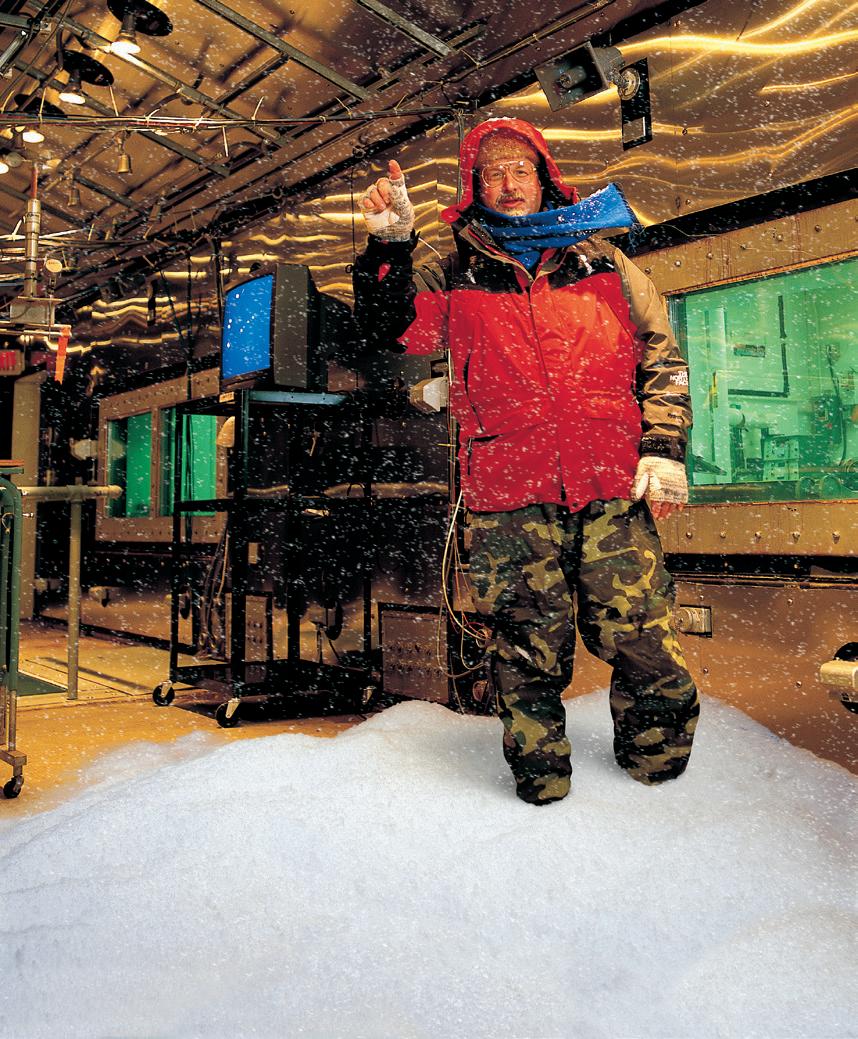
You need more calories in winter. You need more fatty, slow-burning foods. Drink at least one or two quarts of water each day. Dehydration can be as severe in winter as in summer.
If you go winter camping, know that by insulating your feet and hands at night, you’ll double the effectiveness
of your sleeping bag (which you should also fluff up before entering). And since any moisture you bring in with you will condense and make for a wet, chilly night, sit up in the bag before burrowing in, to be sure you’re dry.
If you are out snowmobiling or cross-country skiing and you’re going to spend the night outside—and it’s snowing or wet and cold—you must be able to start a fire fast. Kick over logs and rotting stumps. Mice build their nests there, and a mouse nest is always dry. It lights like gangbusters.

You want your skin a little cool (not cold) all the time. That’s why you dress in proper layers—you don’t want to perspire.
Abridged from “Staying Warm Is His Business,” by Mel Allen, January 2000










Elizabeth Bishop (born February 8, 1911, in Worcester, Massachusetts; died October 6, 1979, in Boston). The U.S. poet laureate from 1949 to 1950, Bishop received a Pulitzer Prize in 1956 for Poems: North & South/A Cold Spring and a National Book Award in 1970 for The Complete Poems


“Hoping to live days of greater happiness, I forget that days of less happiness are passing by.”
1st
Reputed rank among explorers who managed to reach the North Pole
THREE Age when his family moved to Maine
2nd
Class rank at Bowdoin College (graduated 1877)
$500
Amount funded by Peary’s mother toward passage and supplies for his first Arctic expedition, in 1886
-59
Lowest temperature (°F) in which he traveled by sledge toward the pole






ONE


Number of legs
Peary broke on his second attempt to reach the pole, in 1891

133
Number of sled dogs he brought for the cross-ice march of the final expedition, 1908–1909
Number of toes
Peary had by the time he reached the pole (frostbite claimed eight; the others were amputated to make it easier for him to walk)
5 Distance in miles between the actual North Pole and where Peary planted his flag


130,000
Weight in pounds of a meteorite he brought back from the Arctic (a piece of which is now at New York’s Museum of Natural History)
1 Number of his children delivered by wife Josephine in the Arctic (a girl, known as “the Snow Baby”)
ill Jones of Bedford, New Hampshire, has a secret identity. Well, not so secret, really: Once each year, on Super Bowl Sunday, Jones dons a custommade hat and cape and becomes Captain Plunger, a fund-raising superhero who leads the charge into the frigid waters of the Atlantic Ocean during the annual Penguin Plunge to support Special Olympics New Hampshire.

Captain Plunger is known for his playful antics as he works the crowd and creates photo ops. The character was born almost accidentally, Jones says. “There are different themes for the Penguin Plunge each year, and I was trying to come up with an interesting costume. I attached a plunger to a helmet and I thought it looked appropriately ridiculous, so I went with it. People were making up all sorts of names for me, deciding what I was dressed as. So I added the name ‘Captain Plunger’ right on the costume. I’ve been having fun with it ever since.”
Jones first got involved with Special Olympics back in the 1980s, when the organization was a tenant at a property he managed. His connection deepened as he raised his nowadult twin daughters, both of whom have fragile X syndrome. “When I first heard that Vermont Special Olympics had been doing a fundraising plunge, I thought it was the
Donning everything from capes to tutus, participants in the annual Penguin Plunge fund-raiser (including Captain Plunger, center right) are the picture of teeth-chattering chic at Hampton Beach, New Hampshire.


stupidest thing I had ever heard— then they told me how much money they made,” Jones says. “We held the first New Hampshire plunge in 1999. I’ve participated every year.” Most of the winter plunges that happen in New England support charities. A good cause can go a long way in steeling your nerves.
There is a method to Captain Plunger’s madness. As he pumps up the crowd before the plunge, he’s providing an important distraction: “The last countdown before the plunge is the longest few minutes. The hardest part is the last 60 seconds. It’s mind over matter. There is really no way to prepare. It will take your breath away.”
The more people you’re plunging with, the easier it gets. At the Penguin Plunge, there could be as many as 300 people charging into the water together. “The peer pressure helps keep you from talking yourself out of it,” Jones says with a laugh. “When everyone goes, you go.”
“The weather changes everything,” says Jones. “The first year, I was lulled into a false sense of security. It was about 42 degrees. The second year it was sleeting, freezing rain. That was tough.” Pay attention to the weather and be prepared.
The most important thing, according to Jones, is to wear an old pair of
sneakers. “You won’t believe how cold the sand is. Wool socks are helpful too. And a T-shirt or something to cut the wind.” But it’s also important not to overdress. You don’t want to be hot or to wear clothing that will be overly heavy when it gets waterlogged.
You will be numb when you come out of the water, so have ready some loosefitting clothes you can put on. Avoid clothes with a lot of snaps, zippers, and buttons. Bring easy-to-slip-on shoes to wear after the plunge, a plastic bag for
your wet clothes, and a couple of towels. Retreat to someplace warm soon after coming out of the water. “When weather allows, they set up heated tents on the beach at Hampton,” Jones says. “Everyone is so excited— it’s quite a scene. You feel so great, so alive. And you know that you’ve done something special. It’s incredibly rewarding.”
For more information on Special Olympics New Hampshire and the Penguin Plunge, call 603-624-1250 or go to sonh.org.


he Mapparium at the Mary Baker Eddy Library in Boston is a one-of-a-kind structure: the world’s only walk-in, stained-glass globe that allows the surface of the earth to be viewed without distortion. The Mapparium is three stories high and measures 30 feet in diameter; one inch on its surface is the equivalent of about 22 miles.

Built and installed for $76,000 (or about $1.3 million today), the Mapparium made its debut on May 31, 1935. Adding a dreamlike glow to the globe’s interior were the more than 300 light bulbs that illuminated the glass from behind. A week after the Mapparium’s opening, there were rumors that city officials had declared
BY KELSEY LIEBENSON-MORSEthe so-called “Glass Room” or “Globe Room” unsafe; however, those rumors were quickly dispelled, and since then more than 10 million guests have visited the Mapparium.
The man behind the Mapparium was Chester Lindsay Churchill, architect of the Christian Science Publishing Society building (which would later become the Mary Baker Eddy Library). Inspired by the large globe in the lobby of the New York Daily News building, Churchill wanted to create something to represent The Christian Science Monitor ’s global aspirations.
For his design, Churchill purchased clear glass from the Hope Glass Company in England and had it shipped to the Rambusch Decorating
When you walk into the Mary Baker Eddy Library at Boston’s Christian Science Center, be prepared to enter a world like no other.
The Mapparium’s abundance of red wasn’t a political statement, but rather a way for its glass artists to show off: Red was the most difficult color for them to achieve.
Company in New York. The Chicago mapmaker Rand McNally provided detailed drawings of the earth’s geographical and political features, which were taped onto the back of each ¼-to-½-inch-thick glass panel and traced onto the front by Rambusch artists. Each panel was then painted with a powdered glass mixture and fired in a kiln to set the color.
Originally Churchill wanted visitors to wear felt slippers on the 30-footlong glass bridge that cuts across the Mapparium. When this proved unrealistic, he reinforced the bridge with ½-inch-thick plate glass.
To keep up with changes in global political boundaries, the Mapparium’s glass panels were designed to be replaceable; however, the changes came too rapidly and the replacements proved too costly. Fortunately, by 1966 the Mapparium was considered a historic art object, and all talk of updating the map was dropped.
The world inside the Mapparium has stayed stubbornly true to 1935. For instance, Vietnam, Israel, and Burkina Faso are missing—but you can still see Tannu Tuva (a small country wedged between Russia and Mongolia that was dissolved in 1944), along with the bygone regions of Transjordan and French Indochina.
After a four-year renovation, the Mapparium had a triumphant reopening in 2002. Among the highlights was the introduction of 206 LED light fixtures: Programmed together, the lights can produce at least 16 million colors.
The Mapparium and similar spherical rooms are known as “whispering galleries” because of their unique acoustics. This means that someone speaking quietly at one end of the Mapparium can be heard with perfect clarity by someone at the opposite end. Inside the Mapparium, every visitor’s voice can be heard— symbolizing, in a way, how we all are truly global citizens.

/// Best New Hotels


From the Envoy in Boston to the Spicer Mansion in Mystic to the Cliff House in Ogunquit, take a tour of the region’s coolest, most beautiful new places to stay.
/// In Season: Chocolate
Step inside the Yankee kitchen for a sweet serving of our favorite recipes for the season.
/// A Big To-Do
To subscribe or find out more, visit: NewEngland.c om/Subscribe
Explore the beauty and grandeur of New Hampshire’s Mount Washington Hotel.

/// Local Flavor: O’Rourke’s Diner
Irish meets American meets big, delicious breakfast at this Middletown, Connecticut, eatery.
/// Cooking with Yankee
It’s soup season, and in this video we show you how to make one of our winter favorites: mushroom leek and potato.
/// Photo Ops
We share our favorite shots of the season from our Instagram community.

We’re old, here in New England, and our houses are the proof. An astounding number of historic buildings in this region date from the 17th century—beauties like the 1637 Fairbanks House in Dedham, Massachusetts, the oldest wood-frame house in America. There’s likewise no shortage of historic districts, rich in architectural styles ranging from the colonials of Old Wethersfield, Connecticut, to the grand mansions of Newport, Rhode Island.
That’s the big picture. But when it gets personal—when we’re rehabbing our own historic homes—it becomes a delicate balancing act to get it right, to leave enough of the old character but still satisfy our modern-day sensibilities. To learn how, we visit a 1745 Connecticut farmhouse that straddles the gap with whitewashed beams, a converted attic, and a dreamy porch that “feels like camp.” We heed the wisdom of This Old House ’s Bruce Irving, who cautions against throwing out the banister with the bathwater. We meet the “Window Woman” who brings old panes back to life, and a Vermont artist who puts a vibrant spin on the traditional floorcloth. Finally, our House for Sale column chronicles a rehab love affair that kept a 1700s antique from the wrecking ball.
They don’t build ’em like they used to—but aren’t we glad that they did? —A.G.


 BY ALEXANDRA HALL
BY ALEXANDRA HALL
he enclosed porch jutting out from Ellen Allen’s 1745 farmhouse in Woodbury, Connecticut, is a crossroads of many sorts: between indoor life and the organized pandemonium of nature; between private and shared space; between New England simplicity and global sensibility; and, finally, between the home’s historic past and its everevolving future.
On late afternoons, the porch is where you’ll find Allen, a designer of decorative rugs and a figure in the Manhattan textile industry. She might be curled up on the sofa with Mr. Peabody, her Maltese, reading to the rhythmic pattering of rain on the roof (deliberately built flat with that exact sound effect in mind). Or she might be napping to the whir of crickets, next to the porch’s Victorian coal-burning stove, which she converted to gas when building the room eight years ago. Just as easily, she might be entertaining friends and family, throwing open the French doors beyond the kitchen’s gleaming island so that guests can take in views of the peony gardens and poolside patios.
“The porch is my most private space in the house,” says Allen. “My favorite childhood feeling was a summer bunk, and this room just feels like camp to me.”
It’s a delicate balancing act, updating a historic home to our personal and modern-day tastes—a dance between preserving the integrity of the home’s past lives and giving it new life. To Allen, the fulcrum of that balance is remembering to think outside any particular time period, culture, or aesthetic genre while embracing the original home’s authentic qualities and unique quirks.
That came naturally, given her own diverse aesthetic influences. Besides designing rugs and owning a vintage-textile business that sells to the fashion industry, Allen has worked in interior design for the past 20
years. Blending influences is a fundamental part of her work. Sometimes that means importing designs from around the globe—art and furnishings picked up while traveling in China, India, Turkey, and Europe. Sometimes it means pulling inspiration from her family’s antique-textile archive, a pre–World War I trove from which she sells exquisite fabric patterns to the likes of J.Crew and Ralph Lauren for use in their collections.
Her work, in fact, is what led Allen to Woodbury, a town in the Berkshire foothills with an unusual share of colonial homes and buildings. “I live in New York City during the week and wanted to get a train easily here in my off time, to make sure I could really use the house and enjoy it,” Allen says. And when she stumbled across the 3,000-square-foot, four-bedroom home originally owned by the Judsons, a prominent local family, she “fell in love with it for so many reasons.” She was delighted by the abundance of texture and light throughout the home. “As a rug designer, I long for that. For things that look handmade in these techie times. I wanted to look at the floors and see that they were made by a real human.”
To that end, she has kept as many original details as possible, from flooring and beams to radiators, while adding her own flourishes. By the time the renovations were finished, the original part of the house had become the kitchen, and the attic above that had transformed into the master bedroom and bath. The latter’s unexpected wall treatment: surrounding the glass-enclosed shower and the freestanding tub with laser-cut
tiles in a bird-and-vine pattern. “It uses old materials but a very new technique, so it’s a mix of vintage and contemporary.” Meanwhile, Allen left the wooden floor intact: “I like the uneven wood with its great texture.”

Downstairs, to make the ceiling appear higher, she painted the beams white. In the living room, she met the challenge of an unusually long space by creating a nook filled with the textiles she loves: a 19th-century Khamseh horse blanket recast as a curtain; cozy down cushions covered in cut velvet; a 19th-century Uzbek bedcover on the wall.
The broad mix of styles, ethnic antiques, colors, and price points—from precious to mass-market—springs from a simple philosophy: “Good design. And I don’t care if it’s uniform.” In fact, rather than fight the disparate periods and styles, she celebrates them. “An 18th-century chandelier and a contemporary piece of artwork can work together so well in shape and color.” And she uses color to create surprises: “In a range of blues and greens, I love a pop of purple or burgundy. I don’t want it too stiff or overplanned.”


Which, inevitably, brings us back to the porch. Surrounding the Victorian fireplace are, in no particular order: a pair of classic Chinese urns, a mask that seems plucked from a Jean Cocteau movie, a woven canopy bed, and a Plexiglas coffee table discovered on the Internet. Facing that? A 1960s sofa that Allen picked up in California, topped off with blue-andwhite pillows (HomeGoods) chosen for their obvious beauty and, she says, silken texture.
There’s that word again: texture. It’s why Allen chose an atypical combination of handmade brick floors, granite walls, and recycled barn wood for the porch. “Everyone fought me on using barn wood on the ceiling,” she says. “They thought it would be too dark, but to me it makes the space much more intimate.”


Unlike so many old New England houses, this one doesn’t adhere to any historic rules. Yet, like so many, it’s been added to over time. “It’s not a historic creation by any means,” acknowledges Allen. But being a part of its past clearly makes living in it all the more personal for her. “I know this house will outlast me,” she says, easing back into one of her cherished pillows. “I love that it’s a living thing.”

hen I was working as a producer at This Old House, there were times when the team of Norm Abram and Tom Silva would open up some wall or ceiling and look at the underlying structure, and one would mutter, “They don’t build ’em like they used to,” to which the other would reply, “Thank God.” The gross under-framing; the huge chunks of joists cut away by errant plumbers; in one case in Nantucket, the studs made from driftwood.... Plenty of past “craftsmanship” was not worth much more than a shaking of the head and a proper repair.
But, oh, the good stuff. We in New England are surrounded by the handiwork of long-ago craftsmen. Beyond the glories of our historic town halls, churches, and libraries are quieter, less public triumphs of art and craft, domestic treasures that anyone lucky enough to possess should think long and hard about renovating out of existence. The spirit of their makers is in them still, and if you don’t buy that, know this: You can’t get most of this stuff anymore.
I’m talking about wide-planed floorboards; windows built in a workshop, with wood so dense that it’s held up through the weather of 200 years and glass that bears the swirling lines that settled into place at the moment of its cooling; handmade doors whose time-softened edges will never be seen at a Home Depot; and turned porch balusters that came out of a steam-powered factory and arrived in your town on a freight train. I’m talking about horsehair plaster—which gives itself away by the subtle waves you feel as you run your hand over it—that boasts an acoustic-dampening quality that no modern wallboard can duplicate. Next time you’re in a room with such walls, stand in the middle and clap your hands once. Try that in a McMansion, hear the harsh echo, and you’ll get my point.
Extraordinary saves I’ve had the pleasure of witnessing include an entire landscape painted on a plaster wall by the 19th-century itinerant muralist Rufus Porter, painstakingly cut loose from its original spot, where it was in peril of destruction, and transported 100 miles to a new home in an old house. Once, the This Old House crew disassembled, moved, and rebuilt an entire staircase, bringing its quartersawn-oak beauty into the center of a new floor plan.
But you don’t have to do such heavy lifting to be a domestic hero. Start with your windows. If they’re old and wooden, they’re probably worth saving. Wood of such quality is no longer available, and their simple sash mechanism, whether it be friction or iron counterweights, will endure long after the plastic tackle of a modern window breaks. More important, the single-strength glass will never fog, as the sure-to-fail seals of thermal pane units will eventually cause them to do. Properly tuned up with new weather-stripping and modern storm windows, old wood windows achieve about the same insulating value as replacement units do, fit the look of an old house far better, and will long outlast their modern brethren. Do, however, feel free to bring modernity to your old house’s “wet areas.” Unless they’re museum-worthy timepieces, kitchens and baths should, in my opinion, embody a house’s evolution over time. You are here, living and breathing and owning—let your hardest-working spaces reflect that.
A good rule of thumb is to think about saving anything in your home that bears the marks of a person’s handwork or is made of material that’s rare or impossible to duplicate these days. Consider the thinking of earlier owners—what did they spend extra time and money on, perhaps as a show of house pride or even vanity? The reeded mantel? The ornate ceiling medallion? The leaded-glass sidelights at the front door? Don’t hastily steamroller their authorship on the way to writing your own story. Often choices from the past have more staying power than those of today.
Participating in that staying power can feel good. On one particular This Old House project, an 1888 Queen Anne, I would stay after each day’s shoot, high up on a scaffold with a variable-temperature heat gun and a set of paint-stripping tools that wouldn’t have looked out of place in a dentist’s office, geeking out on a decorative band of garlands and wreaths, picking off years of paint to reveal the crisply carved wood beneath. The work played the smallest of parts in the overall restoration of the house’s character, but the results were deeply satisfying. I felt as if I’d honored the craftspeople who’d built the house, and the old girl got some of her swagger back. That’s good stuff.

























o Alison Hardy, the three windows in what would be the breakfast nook looked fine. They were firm to the touch, sturdy in the joints, and so lovely with the intricate lattice woodwork. Sure, they were chipped, and dark, and sort of grimy. But so was the rest of this former church parsonage on busy Middle Street in Portsmouth, New Hampshire. Empty for two years, the rambling shingled building built in 1902 was about to undergo a major rehab, and Hardy’s mission was to res cue not just these three beauties but all of the home’s original windows from ending up in the dumpster.
the rest of the home on that late fall day,
jotting down notes about each window. Stained a deep brown, most had multiple panes over one larger pane, and, like the ones in the breakfast nook, were dirty. Cracked here and there. But they opened and closed and weren’t gunked up with decades of paint. Easily fixed. The owner, Richard Cyr, a retired marketing entrepreneur, had read volumes about the value of restoring old windows versus replacing them, and nodded as Hardy confirmed his research. But, he said, as they shook hands good-bye, she’d need to convince
his wife, Lisa DeStefano, an architect, who was determined to install new ones.
Hardy didn’t need much prep for the meeting. She is, after all, Window Woman of New England, and for more than a decade she has divided her days between first convincing homeowners and contractors, and then restoring those antique windows. And while she is not alone in the task— 20-plus window restorers are based in New England alone—she is perhaps the most visible. From a one-woman show working out of her Topsfield, Massachusetts, barn to a staff of 12 in a 4,800-square-foot shop by the Powwow River in Amesbury, she and her team juggle at any one time 10 to 20 projects, from glazing a couple of sixover-six sashes for a Newburyport woman to fully restoring 63 windows of a Brattle Street mansion in Cambridge. She organizes conferences, attends trade shows, holds workshops. And she is founder and president of the Window Preservation Alliance, which represents restorers across the country. Together, she believes, their voice is louder. “People don’t know their options,” she says.
In her mid-50s, with short graying hair and a penchant for polos and khakis, she is as unassuming as a history teacher, which is fitting: Hardy
practicality of what they already have.

believes her job is to educate, just as she first taught herself. Tired of living in old homes with porous windows, she sought guidance from books and the guy at the hardware store—how to repair the pulley system of weights and chains, and how to glaze, to apply just the right amount of putty at just the right angle with just the right pressure. She restored the wobbly windows of a friend, and then another friend, and soon she had a business, which morphed into obsession.
She wants the “window decision” to be based on facts, not myth. She wants homeowners to understand that original windows can be just as energy efficient as thermal panes if outfitted with weather-stripping, protected by storm windows, and properly fitted, repaired, glazed, and painted. Study after study proves it. Hardy’s thermal camera proves it, revealing that
air infiltration between the new and the old is about the same. That convinced Steve Garey, who had planned to replace most of the windows in the stately Queen Anne he purchased in his hometown of Reading, Massachusetts. “I had a mind shift” after reading Hardy’s studies, he admits.
Hardy wants homeowners to know that while windows built before 1960 were designed to last, newer windows have a finite life-span, with 20 years being the average warranty. It has to do with craftsmanship (old sashes benefit from mortise-and-tenon joinery, which allows the wood to expand and contract), but also materials: Antique windows were built with old-growth wood, which is denser and rot-resistant from centuries of undisturbed development in virgin forests. With the depletion of those forests, wood for newer windows is produced on tree farms and

 Hardy double-checks the fit at Garey’s house. below : Lisa DeStefano in her family’s 1902 former parsonage in Portsmouth, New Hampshire. Of the home’s scores of windows, Hardy restored 30 and replaced only eight.
Hardy double-checks the fit at Garey’s house. below : Lisa DeStefano in her family’s 1902 former parsonage in Portsmouth, New Hampshire. Of the home’s scores of windows, Hardy restored 30 and replaced only eight.
harvested after 10 to 20 years, which is not enough time for it to develop resistance to the elements or the tight growth rings that provide strength. Other sash materials, such as vinyl, can warp and discolor. Vinyl over wood protects until it doesn’t, when moisture seeps in between the two surfaces and the wood decays.
Hardy wants homeowners to know that the single panes of glass in old windows can be easily replaced. By contrast, thermal panes are uninterrupted layers of glass separated by an insulated gas. In time, the seal holding the panes in place breaks and moisture invades. The glass becomes cloudy. Consequently, the replacement window requires a replacement. “That’s not very green,” says Hardy.
And she wants homeowners to honor aesthetics, to appreciate that the original windows were designed to adorn the house. They are properly proportioned with proper period detail. The snap-in grilles and simulated divided panes of replacements can’t come close to the delicate quarterround and fillet pattern of Federalperiod muntins, the wooden bars that hold the glass panes. As Marc Bagala, a window restorer in Westbrook, Maine, likes to say, installing replacement windows in a historic home is like putting mag wheels on a Model T.
In Lisa DeStefano’s downtown Portsmouth office, Hardy quickly deduced that her client’s resistance to restoration was aesthetic: The architect loathed aluminum storm windows. Hardy couldn’t argue—some storms are ugly—but suggested that the slimprofile models with low-e glass, which minimizes ultraviolet light, could be an option. Besides, she asked, with stormfree thermal windows, what would they do about screens? Richard Cyr sat quietly, letting the two women debate.
By the meeting’s end, Hardy had convinced DeStefano that her team would make the originals as
Looking for someone to doctor your panes? Here’s a quick selection of New England restorers; for more, check out the Window Preservation Alliance website (windowpreservationalliance.org).
Window Woman of New England/Alison Hardy, Amesbury, MA 978-532-2070; window-woman-ne.com
Bagala Window Works/Marc Bagala, Westbrook, ME 207-887-9231; bagalawindowworks.com
Heartwood Window Restoration/Jade L. Mortimer, Charlemont, MA 413-625-8680; heartwoodrestoration.com
Olde Window Restorers/Dave Bowers, Weare, NH 603-529-0261; oldewindowrestorer.com
Window Master/David Voorhis, Dublin, NH 603-563-7788; windowmasternh.com
Winn Mountain Restorations/Andrew Roeper, Lyndeborough, NH 603-654-2115; winnmountainrestorations.com
crisp and functional as new models. They agreed to restore 30 windows and replace eight, all of which were replacements themselves.
It was time to talk price.
Restoring windows isn’t cheap. Hardy’s services range from $350 to $1,800 per window. She makes no apologies. The work is labor-intensive, whether the project is a tune-up (weatherstripping, replacing broken sash cords with cords or chains, chipping out old glazing, replacing broken panes), a renovation (a tune-up plus joint repair, stripping, priming, and painting the exterior), or a full restoration, which often involves sawing, sanding, and cajoling tiny pieces of wood into muntin gaps. Often, wood is harvested from salvaged sashes to replace rotted areas. Original glass is reinstalled. The end result for Garey was startling: Cracked sashes held together by paint returned to him whole, the delicate muntin design clear and crisp as a showroom exhibit.
When prospective customers say new windows are less expensive, Hardy
shrugs. Initially, perhaps. But then add the cost of installation and replacing the replacement. She’ll work out deals if she can. Garey bartered a lower price by agreeing to paint. Richard Cyr benefited from volume. “Whatever,” she says, knowing that battles are often won with small concessions. In her case, a slight profit margin.
“We’re getting there,” she says with a sigh. Membership in the Window Preservation Alliance is rising, and, she hopes, the more restorers, the more information, the better shot at saving what many call the eyes of the home. Historic district regulations help, too.
Cyr and DeStefano faced pressure from the Portsmouth Historic Commission, which took keen interest in their home because of its architectural significance. Cyr reports that all parties are pleased. “These windows are almost 120 years old and, brought back, they’re good for another 120,” he says.
DeStefano nods. “Our house has a soul,” she says, opening the blinds on her bedroom window, now painted white. “It was the right thing to do for the house.”
Sturdy as they are striking, Susan Arnold’s floorcloths start out as swaths of 8-ounce sailcloth. For the background, she lays down two coats of Benjamin Moore house paint—“It’ll never wear off!”
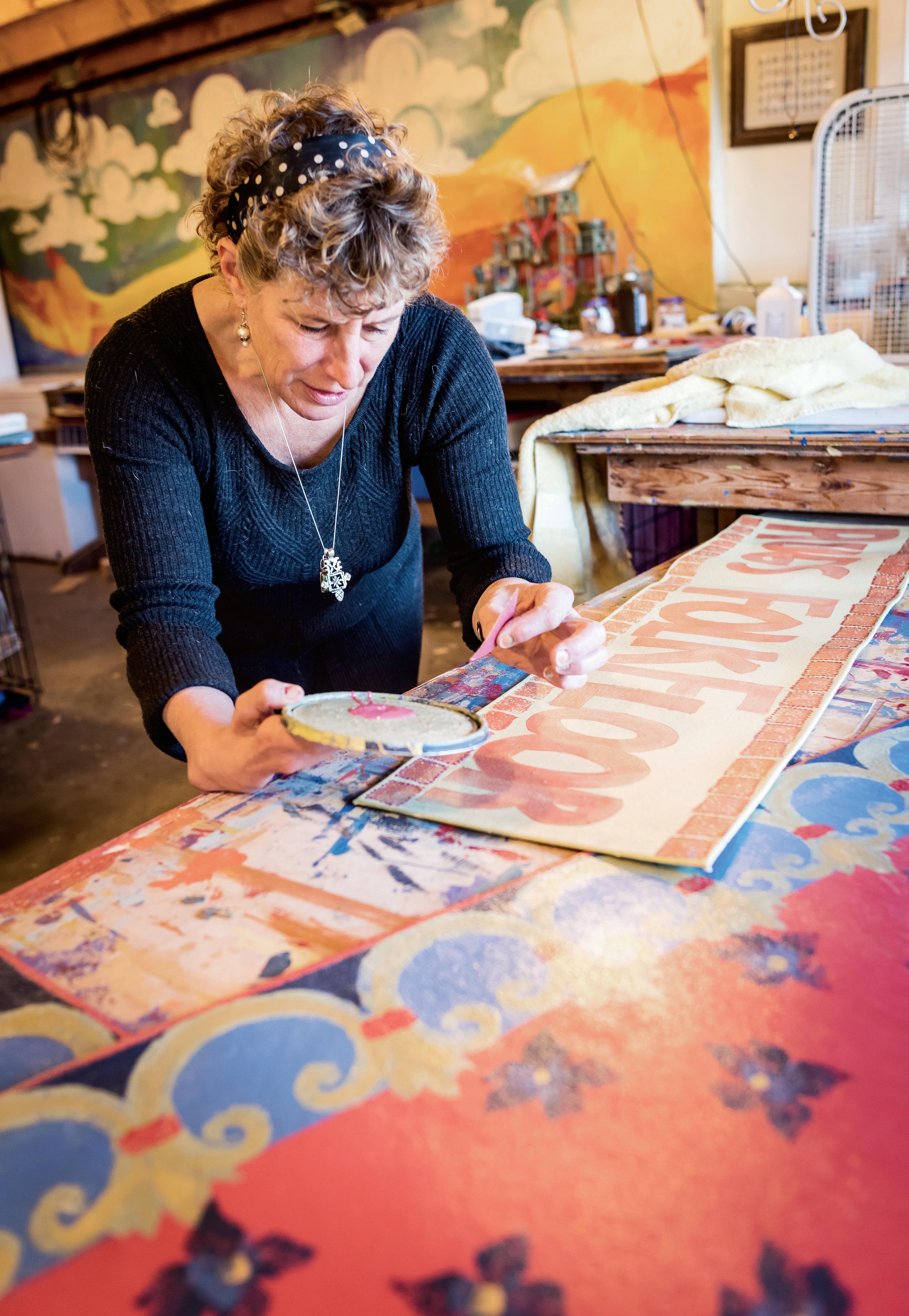
 BY ANNIE GRAVES
BY ANNIE GRAVES
hese are not your greatgrandmother’s painted floorcloths. Nor are they the plain green canvas rugs that George Washington probably scattered around the White House during his residency, although like those they’re certainly utilitarian and workhorse in design.

The floorcloths that bubble off the shelves and rumble underfoot in Susan Arnold’s East Thetford, Vermont, home are flamboyant tributes to color: a parade of rust-colored tulips over a navy field, sprinklings of cerulean leaves tossed over green, a blast of blue chickens scratching tomato-red dirt.


That such joyful exuberance is also indestructible—impervious to wine, spaghetti, dogs (eight), cats (three), and children (four, all grown)—is simply a witty bonus.
“This was one of my first,” says Arnold, reaching into a pile of mats stacked in her basement studio and wrestling free a blue and red school of fish on a mustard background. Back then, 20 years ago, a friend had a stenciling company and was looking for someone to prep the blank cloths. “I just started messing around,” Arnold grins, pulling out a riot of persimmonorange teacups dancing on violet blue. “Teacups were also some of my early ones.” Now she points out a passel of speckly blue pigs with bright red feet. “Years ago someone wanted me to do pigs, and I wasn’t too excited about it. Then I saw their personalities,

and I got excited. That’s how a lot of my designs come about, starting as a request or custom piece.”
Arnold begins her creative process with a literal blank slate, cutting rugs from a bolt of off-white sailcloth. Rolling out 30 feet at a time, in a separate studio a short distance from her house where there’s space to spread out, she chooses her background color and dumps the paint onto the canvas. She then rolls two coats onto the front and two onto the back. A rubberized latex coat on the back keeps rugs from skidding or scratching the floor.
The grunt work is done. “Prep is boring,” she says. “The fun part is coming up here and going crazy!” Her basement studio is crammed with tools of the trade: vats of paint, sponges in different shapes that Arnold uses to print patterns and creatures, and little scraps of unlikely inspiration. “I use a lot of
recycled materials to create patterns— sometimes cardboard, even the Styrofoam trays that meat comes in. Packing peanuts are good for making details on leaves. It’s amazing what you can find at the recycling center that gives good texture on the paint. And if I make a mistake, I hide it with more paint.”
If the basement studio is a study in splatters and wild color combos, it all comes together upstairs, where Arnold’s rugs are displayed to their best advantage in the living room and kitchen. In fact, it’s hard to imagine a more lyrical environment for Arnold’s work. The butter-yellow farmhouse that she and her husband, John, built glows inside with rich tones of periwinkle blue, jade, and spring green. Sitting in the front yard is a weathered wooden rowboat jammed with brilliant flowering zinnias and an oar sporting a birdhouse. The chicken compound is a
cluster of cuckoo cuteness. Chairs ring a bonfire just waiting to be lit. From the deck behind the house the view of Smarts Mountain looks like the hatthat-hid-an-elephant illustration in The Little Prince.
“I could never do the old-time blackand-white squares,” Arnold says, shaking her head. “I really like doing new things, just coming up with ideas. This triple border—I love this one. In gold, it’s just....” She trails off, then points to the intricate whorl of blobs and drips on her worktable—years of experimenting, layered on like a Jackson Pollock. “I look at this and I want to cut it out with a knife and save it. Look at those colors,” she says, eyes flashing. Everything, it would seem, is a canvas.
Arnold’s floorcloths range from 2'x3' to 8'x10' and cost $22–$28 per square foot. 802-785-4248; folkfloors.com

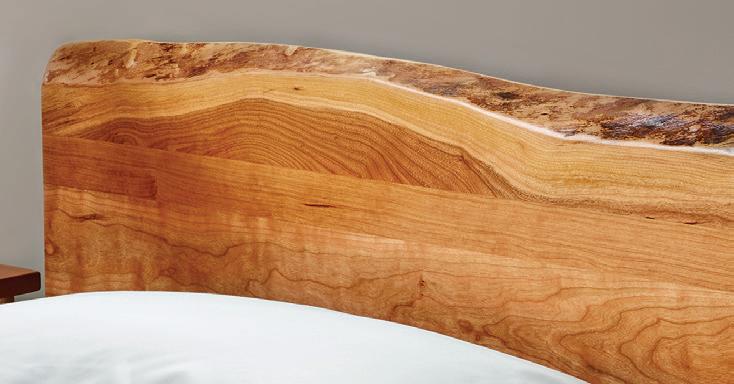

Our advertisers support Yankee Magazine, so please support them.





Brigger chairs, rockers, recliners, and sofas come in standard and custom sizes. Many become favorite companions for reading, watching, and relaxing. We’ve helped customers with back problems or health and age-related sitting issues. Call for what we can do for your comfort. Or, visit our showroom in Gloucester, MA.


The residents of Williamstown, Massachusetts, are thanking a certain gentleman who has made sure a historic home in which Benedict Arnold once slept will endure for another 245 years.
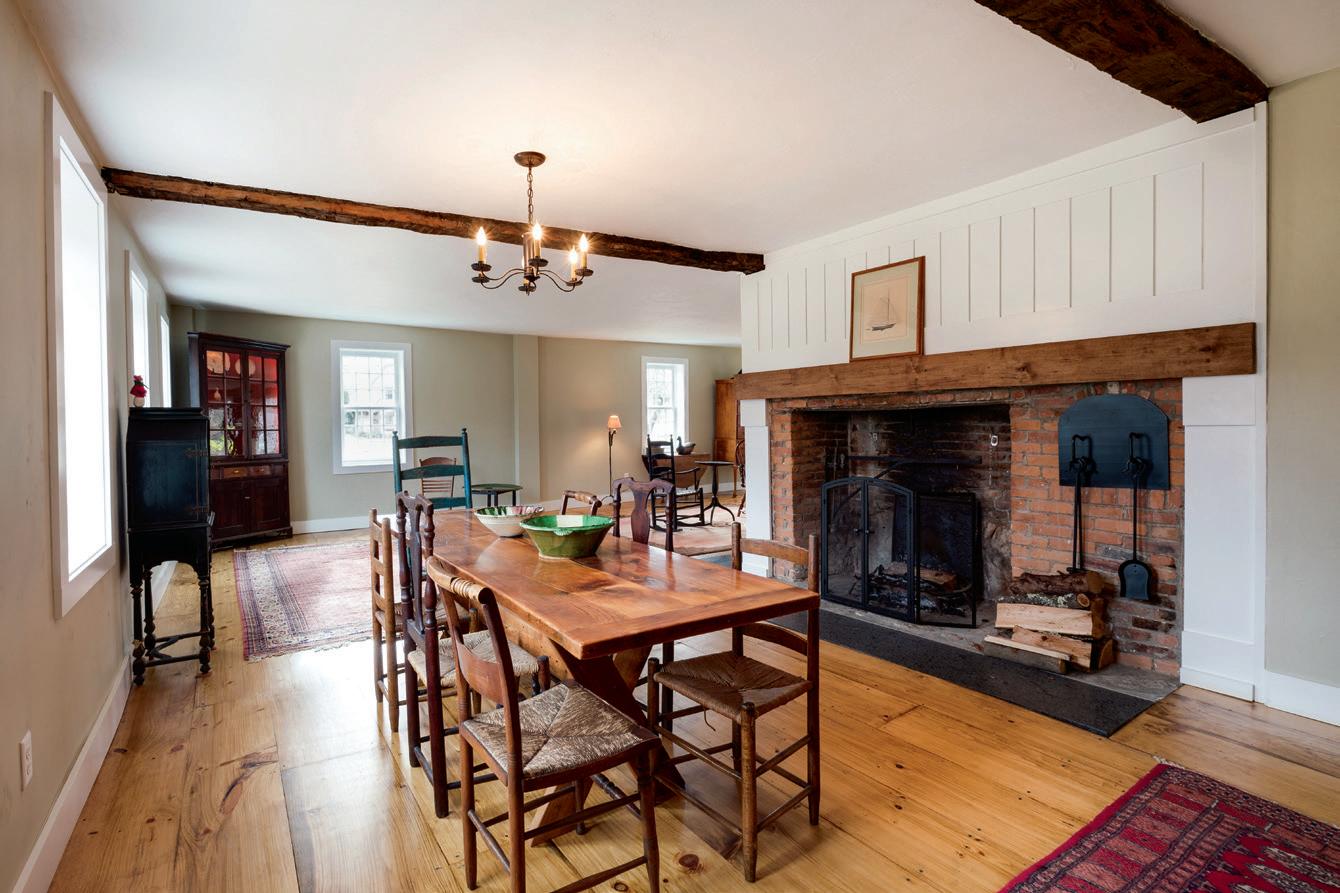
s we moseyed along Route 2 in Massachusetts, not far from the Williams College campus, we came upon what we immediately recognized as the historic Smedley House, as it’s known, built in 1772. And we also guessed correctly that the tall, ruggedlooking man watering the shrubs next to the beautiful old front door was its savior, Williamstown resident Bruce MacDonald, who with one of his four sons (he and wife Julie also have a daughter) owns and operates a successful construction business in the area.
A few minutes later we were sitting with Bruce (Julie was unable to be with us that day) at a gorgeous dining room table made from wood that was harvested, he said, in 1799. How did he know that? Well, after Julie and their friend Ann Greenwood, now their real estate agent, convinced him two and a half years ago to buy the Smedley House in order to save it from the wrecking ball, Bruce engaged architectural conservator Bill Flynt, from Old Deerfield, Massachusetts, to determine which parts of the house were original and which were not. He also unearthed
Yankee likes to mosey around and see, out of editorial curiosity, what you can turn up when you go house hunting. We have no stake in the sale whatsoever and would decline it if offered.
detailed plans of the house created in 1934 by the WPA, that Depressionera federal program that put people to work and did many worthy projects nationwide back in those days. Bruce paid $180,000 for this nine-room garrison colonial on 1.3 acres even though it was, as he described it, “in need of everything.” Then, over the next several months—with the guidance of the old WPA plans, a number of historical experts, and a whopping additional $650,000—the old Smedley House and Tavern (yes, it was once a tavern) became a better, more comfortable, more beautiful home inside and out than it ever was. Bruce is now asking $595,000, which includes furniture and a garage and barn. “We feel very fortunate to be able to afford the financial loss,” he said.
As we sat there at that beautiful old table—“This table,” he said, “will never leave this house”—Bruce went on to describe some of the restoration work covered by that $650,000. For instance, he actually had the building
lifted off its fieldstone foundation to make necessary repairs and replacements. He spent $40,000 replacing the old steam-heated-radiator system with a hybrid five-zone electric-heatand-gas-fired-air installation. All the single-pane, six-over-six sash windows were replaced with insulated, doublepane wood units in the 12-over-12 style used in the 18th century. And on and on. Today the Nehemiah (yes, that was his first name!) Smedley House is in truly pristine condition, and we could tell that Bruce is familiar with every square inch of it.

He eventually walked us through all three floors, including the lovely new kitchen with modern appliances. We admired the five restored fireplaces and the samples Bruce showed us of the outside planks—3 inches thick, thus qualifying the place in olden times as a “fortified residence,” meaning a place where nearby residents could take refuge in the event of an Indian attack.
“It’s amazing to think,” Bruce said to us at one point, “that this entire house was built without using a single nail.” Everything, of course, was instead secured with pegs, mortises, and tenons.
Saving the best for last, we finally headed down to the cellar. This was for many years known as the Smedley Tavern, and it was here, in front of the massive brick-and-stone fireplace, that Benedict Arnold sat warming himself on the evening of May 6, 1775. He was on his way to take Fort Ticonderoga from the British, which of course was before he became probably the most infamous traitor in American history. We also inspected the little room where he slept that night, in back of
the fireplace, and admired the fireplace’s huge oven, in which more than 300 loaves of bread were baked before being sent by carriage to the soldiers fighting in the Battle of Bennington in 1777. We should also mention the huge beams in the ceiling of the tavern area, some bearing traces of 18th-century paint and some with bark still on them. All in all, the history involved with this place is mind-boggling.

It’s obvious that the residents of Williamstown truly appreciate what Bruce, Julie, and their family have done (and sacrificed) in restoring the old Nehemiah Smedley House and Tavern. More than 300 of them expressed their gratitude at a recent open house there; we would love to have attended and done the same. Maybe next time … with a new owner?
Contact Bruce MacDonald at 508-9301850 or email brucemacdonald51@ gmail.com; or Ann Greenwood at 413-441-9631.
that selling their home means they will lose their independence. However, according to Cathleen Toomey, vice president of marketing at RiverWoods at Exeter, in reality, the exact opposite is true.
“The house ties you down,” says Cathleen. “Without the burdens of homeownership and taking care of it both inside and out, you have more time and energy to do the things you love. In fact, congratulations are in order for those taking this positive step.”

When you start the search for your new home, it’s important to ask the right questions. Assess your needs and decide what kind of lifestyle and support will be best for you. Based on those needs, make a list of questions. When you visit, be sure to get your questions answered. As you visit different retirement communities, take pictures and notes so you can easily remember what you liked and did not like about the places you visited.
There’s no doubt that you will have questions of your own, but here are some suggestions from Cathleen to get your started:
what is the retirement community offering me? Review the contract to learn what types of services are provided. Some retirement homes may simply offer lawn care and maintenance while others may include health services. Carefully research the type of retirement community and the contract. Moving to this new home requires more than just liking the apartment or living quarters.

what types of healthcare services are being provided? will this community meet my needs in 10 to 15 years?
Retirement communities come in all shapes and sizes. You might decide that you want to live in one for individuals who are 55 years and older, or one



the right
Without the burdens of homeownership and taking care of it both inside and out, you have more time and energy to do the things you love.
Finding the perfect retirement community can be both an exciting and daunting task. Many people fear
for people aged 62 and older. You may decide that a Continuing Care Retirement Communities (CCRC) is the best solution for you. CCRCs provide both housing and healthcare needs, and are increasingly popular. A CCRC looks just like a typical retirement community, and you move in when you are independent, but you also get the benefit of access to assisted living and nursing care as needs change.

what is the social scene like here? can i see myself making friends and becoming involved?
Are residents involved in local community and cultural activities?

The best way to answer this question is to spend time with current residents during your visit. Attend an activity or eat a meal to meet other residents. Those residents will be able to help you assess whether or not this could be your new home.
will i be able to afford this? what are the additional cost and fees?




To determine if you can afford this, first determine the current costs of living in your home and compare those to the cost of the retirement community. Use this list to get a clear understanding of whether or not you can afford this new home.
if this community does not offer access to assisted living or skilled nursing, where can i go to get that and how much will that cost?
When comparing costs of one retirement community to another, be sure that you are comparing apples to apples. Not all retirement communities offer healthcare services. You should find out how much those services will cost and if

Quintessentially
Enjoy the winter beauty of Penobscot Bay living steps away from the shore. Residents enjoy maintenance free living with easy access to all the activities offered by Belfast, Maine. Cottages and apartments are available for sale and rent.


Southgate is located in the historic town of Shrewsbury, Massachusetts. A uniquely planned community, Southgate allows ready access to services, all under one roof. Enjoy a wealth of amenities, such as restaurant-style dining, indoor swimming, live theater, and candlepin bowling. Feel secure knowing there is a full continuum of care right on campus.
207-338-2332 | penobscotshores.com
10 Shoreland Drive, Belfast, ME 04915 Waldo County General Hospital

A Member of MaineHealth




Apartment and cottage living at Piper Shores offers residents fully-updated and affordable homes, with all the benefits of Maine’s first and only nonprofit lifecare retirement community. Located along the Southern Maine coastline, our active, engaged community combines worry-free, independent living with priority access to higher levels of on-site healthcare—all for a predictable monthly fee.
the services can be brought in or if you will need to travel to a doctor’s offi ce or hospital.
To download a workbook to understand if Continuing Care Retirement Community is right for you, visit www.riverwoodsrc.org Smart Financial Decisions or call 1-800-688-9663.

Custom Built Timber Frame 3BR/3.5B 4,000 sf. home with spectacular 50-mile mountain views in an active and friendly Gated Golf Community. Four mild seasons for year-round enjoyment! $579,000
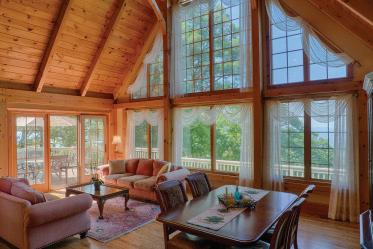


Go to Zillow.com and search for 40 Moss Pink Way, Landrum, SC Owner 864-384-4873 Agent 828-308-7075
Eastview at Middlebury EastViewMiddlebury.com
oceanview at falmouth OceanviewRC.com
penobscot shores PenobscotShores.com
piper shores PiperShores.org
quarry hill QuarryHill.org
Shenandoah Valley Westminster-Canterbury SVWC.org
southgate at shrewsbury SouthgateAtShrewsbury.com
thornton oaks ThorntonOaks.com
A group of residents from RiverWoods CCRC in Exeter, NH take a break from their game of pickleball. It's one of the most popular fitness activities of the many offered on campus at RiverWoods.


Former Bon Appétit® editor, Pat Brown discovered that living at Thornton Oaks affords plenty of cultural opportunities. “If you’re looking for interesting things to do, you don’t have to look very far activities at Bowdoin College, museums, art exhibits, Bowdoin International Music Festival, professional musical theater, and world class restaurants too.”
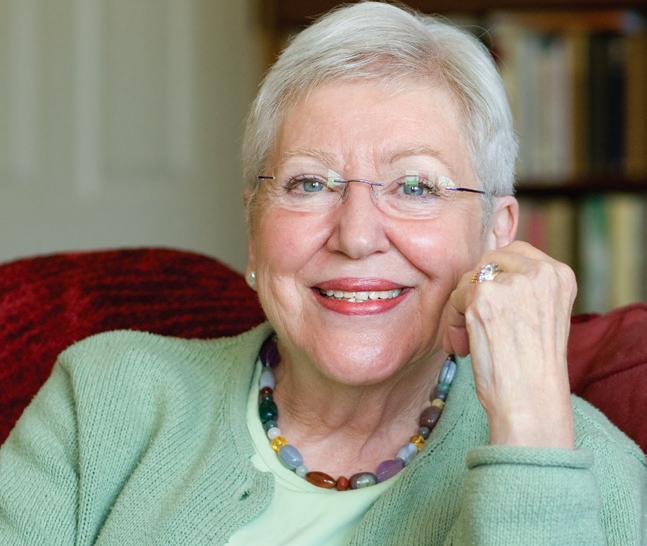


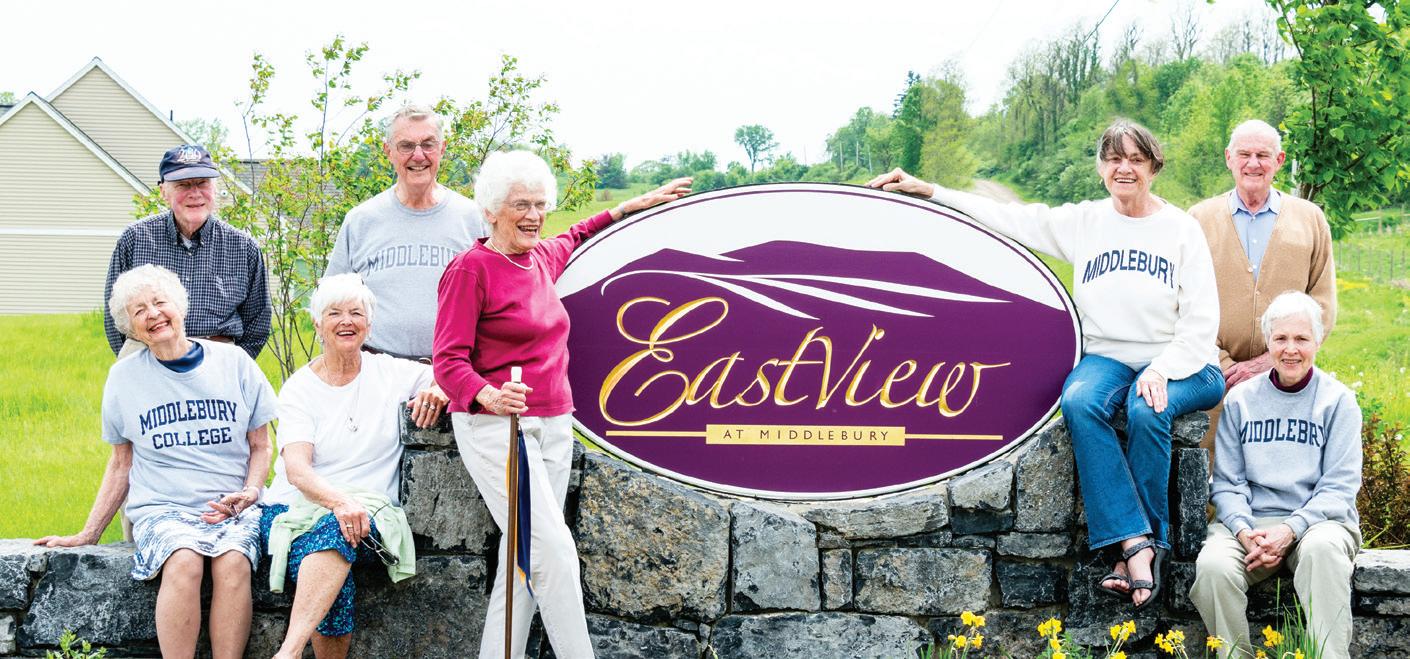

 SPAGHETTI WITH SCALLOPS “ROMESCO” (recipe on page 60)
SPAGHETTI WITH SCALLOPS “ROMESCO” (recipe on page 60)
t’s a clear, brisk January day in New Bedford, Massachusetts. Most of the scallop boats—a fleet of about 300 vessels ranging in size from 80 to 130 feet—are in port, tied up alongside the pier, undergoing repairs and repainting, or simply waiting for the spring, when the hard work of dredging for the prized bivalve will begin in earnest. By May, and well into the summer, the fleet will be bringing in New Bedford’s gold standard: sea scallops.
Harvesting sea scallops by dredges, which are lowered into the ocean by huge booms and raised by powerful winches, is, like most commercial fishing, physically exhausting. The scallops are deposited on deck, then loaded into heavy plastic bushel baskets and cut to release the treasured white muscle. Everything but the muscle goes overboard. The meat is packed into 50-pound cheesecloth bags and iced in the ship’s hold, where it will stay until it is off-loaded and ready for New Bedford’s seafood auction.
Even in winter, New Bedford is a busy place. Busy, and very, very successful. Here, in a single bountiful day, the catch can reach 500,000 pounds, and annually it reaches nearly 50 million pounds. According to port director Edward Anthes-Washburn, scallops account for about 80 percent of the fishery’s total catch, with 2015 revenue hitting $329 million. “When you figure in sales from processing and related businesses, the New Bedford fishing revenues were around $3.2 billion,” he says.
In a region where collapsing groundfish and shrimp fisheries have dominated the news, New Bedford has reigned as the highest-grossing fishing port in the U.S. for more than 15 years. As New Bedford mayor Jonathan Mitchell says, “We can truly lay claim to being the seafood capital of America.”

This prosperity has led to a renovation of New Bedford’s historic downtown, with its cobbled streets, boutiques, art galleries, and dozens of restaurants, many of which show New Bedford’s ethnic diversity to delicious advantage. The Cork, a gem of a tapas restaurant right across the street from the pier, serves seared scallops over sticky jasmine rice with a sweet soy reduction. On a Friday night at Cotali Mar, a booming Portuguese restaurant, scallops Florentine and a killer steak cooked tableside on a heated stone slab are enjoyed against a backdrop of friends toasting and joking in Portuguese. And at the “urban winery” Travessia, on Purchase Street, Marco Montez makes impressive varietal wines with grapes from both Massachusetts and California. Even with a population of nearly 100,000 souls, New Bedford feels like a close-knit community with pride in its hard-won success, its history, and its fishing fleet. Had you been standing on the very same waterfront 200 years ago, you
would have seen another fleet of highly profitable vessels crowding the waters. On any given day, more than 300 square-rigged whaling ships floated in this harbor, bringing the city its first wave of wealth. It was here, in 1841, that Herman Melville boarded the Acushnet and shipped out on the voyage that would inspire Moby-Dick . Whaling shaped the city’s landscape, gilding it with such displays of prosperity that Melville wrote, “Nowhere in America will you find more patricianlike houses, parks and gardens more opulent....” Whaling also shaped New Bedford’s culture, attracting crew from the Azores, Madeira, Portugal, and Cape Verde—as well as Scandinavia, Greece, and Italy—many of whom settled here. Today, some 60 percent of New Bedford residents claim Portuguese heritage.
New Bedford’s modern-day success has emerged from a close and productive partnership between fishermen and researchers like Brian Rothschild, founding dean of the University

of Massachusetts School for Marine Science and Technology. Along with fellow UMass researcher Kevin Stokesbury, Rothschild pioneered some of the video monitoring techniques that allow researchers to assess the health and quality of scallop beds. He has spent his career toggling between government and academic positions, all with the goal of protecting both the oceans and the livelihoods of those who fish them. While the relationship between regulators and fishermen has, historically, been tense, Rothschild has gone about his work, applying his research with the aim of building “trust, consensus, and transparency,” he says. “Leveling with one another on what we don’t know is as important as exchanging viewpoints on what we think we know.”
The Quinns are one such fishing family whose livelihood has depended on this kind of collaborative fishery management. Charlie Quinn, the patriarch, began scalloping as an unpaid crew member to pay off a debt. He eventually bought his own boat and now manages a fleet of five. “He’s a hard worker. He pushes the guys,” says his son Mike, who grew up fishing during the summer and today serves as operations manager for Quinn Fisheries. Meanwhile, Mike’s cousin, Tim, is a captain in the family fleet. Their shared goal is to build a sustainable fishery “not just for the next 10 years, but for the next 100 years,” Mike says. “It’s the best seafood on the planet. You’ve got it right here, and it’s all fresh.”



These recipes make delicious use of New Bedford’s prized catch in a salad, over greens, folded into pasta, “fried” in the oven, and baked in a gratin.

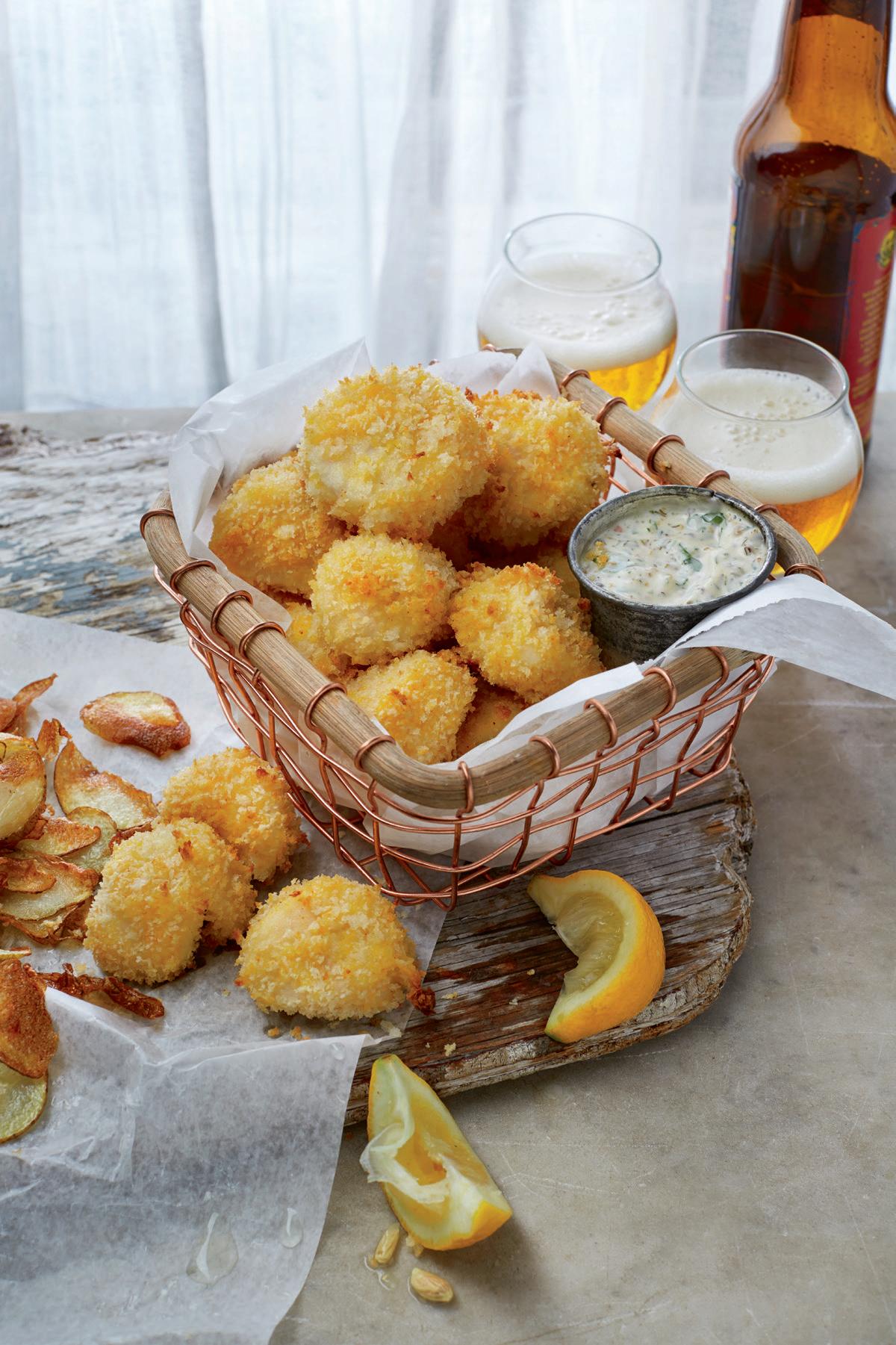
total time : 20 minutes
hands- on time : 15 minutes
Rumor has it that bacon-wrapped scallops originated in New Bedford. This is a slightly lighter preparation, with a bit of zing to offset the richness of the bacon.
6 slices of good-quality prosciutto
3 tablespoons Dijon or other spicy mustard
2 tablespoons light brown sugar
12 medium sea scallops (20–30 per pound)
Lemon wedges and arugula, for serving
Preheat your broiler and set a rack so that the scallops will be about 3
inches from the heating element. Lay prosciutto slices on a flat surface. Generously brush each slice with equal amounts of mustard, and sprinkle with brown sugar. Cut prosciutto slices in half lengthwise. Roll up each scallop in a slice of prosciutto and arrange, seam side down, in a shallow baking dish. Broil until prosciutto is crisp and scallops are cooked through, about 4 to 6 minutes, turning once. Squeeze lemon juice over all and arrange on a bed of arugula. Serve with additional lemon wedges. Yields 4 appetizer servings.
total time : 30 minutes
hands- on time : 30 minutes
This is a great winter salad when you’re craving something light and bright, but still substantial. Look for fresh local baby greens at winter farmers’ markets. Soaking
the onions in water before tossing with the vinaigrette softens their flavor.
1 medium red onion, halved lengthwise, then cut lengthwise into very thin half-moons
3 oranges
¼ cup good-quality extra-virgin olive oil
1 tablespoon rice wine vinegar
Salt and pepper to taste
5 ounces baby spinach or a mixture of kale, spinach, and other winter greens
4 large sea scallops (10 per pound), or 12 medium ones (20–30 per pound)
1 tablespoon vegetable oil, such as canola
½ tablespoon butter
Put the onion slices in a bowl of cold water and set aside.
Next, prepare the oranges: Take one orange and cut in half crosswise. Juice one half, straining out any seeds,
CRISPY OVEN-“FRIED” SCALLOPSand discard the empty rind. Reserve the juice and set the other half aside.
Using a sharp paring knife, trim the top and bottom of another orange, slicing off a bit of flesh with the peel. Stand the orange on a cutting board and cut down the sides, following the curve of the fruit, so that you remove the peel along with a bit of the flesh. There should be no white pith or peel on the surface. Cut the orange crosswise into round slices about ¼-inch thick. Repeat with remaining 1½ oranges. Set the slices aside.
Make the vinaigrette: In a large bowl, whisk together olive oil, orange juice, and rice wine vinegar, and season to taste with salt and pepper.
Drain the onion slices. Put greens, onions, and orange rounds in a large bowl and toss with enough vinaigrette to coat thoroughly (taste a leaf to check).
Pat scallops dry and sprinkle both sides lightly with salt and pepper. Heat a heavy skillet, preferably cast iron, until nearly smoking. Add vegetable
oil and butter, then add scallops and sear until nicely browned on one side, about 2 minutes. Turn and sear the other side, basting with oil as you go, until browned, another 2 minutes.
Arrange salad mixture on plates and place 1 large (or 3 medium) scallops atop each. Serve immediately. Yields 4 servings.


total time : 40 minutes
hands- on time : 35 minutes
If we were going to be fancy about it, we could call this coquilles Saint Jacques (or a variation thereof), the classic French dish of poached scallops in wine with mushrooms and cream. Traditionally, the scallops are served in their shells. Here, we’ve gone family-style, baking them in an ovenproof skillet. For a more elegant presentation, you could transfer the scallops with the sauce and cheese to individual gratin dishes before broiling.
4 large shallots
3 ounces sliced white (button) mushrooms
4 tablespoons salted butter, divided
2/
3 cup white vermouth or dry white wine
1 pound medium sea scallops (20–30 per pound)
1½ tablespoons all-purpose flour
½ cup heavy cream
¼ cup chopped Italian parsley
1¼ teaspoons Dijon mustard
½ cup grated Gruyère cheese
Minced Italian parsley, for garnish
1 loaf crusty bread, for serving
Preheat your broiler and set a rack so that the scallops will be about 3 to 4 inches from the heating element.
Put shallots in the bowl of a food processor and pulse 4 or 5 times until roughly chopped. Add mushrooms and pulse several more times until mixture is finely chopped.
Melt 2 tablespoons butter in an ovenproof 10-inch skillet over
medium high heat. Add the mushrooms and shallots and sauté until mushrooms give off their water and begin to brown, about 5 minutes. Remove from pan and reserve.
Reduce heat to low, add vermouth to the pan, and bring to a gentle simmer. Add scallops and poach gently, basting often, until just barely cooked through, 3 to 5 minutes, depending on size. Remove and reserve scallops and poaching liquid.
Melt remaining 2 tablespoons butter in the pan and add the flour, whisking to combine. Gradually add the reserved poaching liquid and cream, and whisk until sauce is smooth. Stir in parsley and mustard.
Add scallops and mushroomshallot mixture to cream sauce. (Here you can transfer the mixture to individual gratin dishes, if you prefer). Sprinkle with cheese and broil till bubbling and golden brown, about 2 minutes. Sprinkle with additional parsley and serve immediately, with crusty bread to mop up the sauce. Yields 4 servings.
total time : 40 minutes
hands- on time : 25 minutes
Here’s a lighter take on classic fried scallops, which involves baking them in a panko bread crumb topping. Don’t be alarmed by the full stick of butter in the ingredients list—you won’t use the entire thing.
2 large eggs
1 teaspoon fresh lemon juice
20 medium sea scallops (20–30 per pound)
1 cup all-purpose flour
1¼ teaspoons paprika
1 teaspoon kosher salt
½ teaspoon freshly ground black pepper
½ cup (1 stick) salted butter, melted
1½ cups panko bread crumbs Tartar sauce and lemon slices, for serving
Preheat oven to 475° and set a rack to the middle position. Take two rimmed
n There are two basic kinds of scallops: sea scallops, which are graded by the number of units (scallops) per pound (e.g., U10, U20/30), and bay scallops, which are much smaller (with usually 80 to 120 per pound) and caught in shallower waters (Nantucket Bay scallops are especially prized). The New Bedford catch consists primarily of sea scallops.
n “Day-boat scallops” refers to scallops caught on smaller vessels that harvest closer to shore. “Diver scallops” are actually hand-harvested by scuba divers.
n Scallops have slight variations in color, which do not affect their flavor. Most are white to off-white; others are pinkish, beige, or grayish, or have a slight orange cast (these are known as “pumpkins”).
n When buying scallops, look for “dry” scallops, which are always preferable to the “wet” scallops that come prebrined in a solution of trisodium phosphate to extend shelf life and boost weight (bathed in this solution, the scallops absorb liquid, which dilutes their flavor).
n The part of the scallop we mostly commonly eat is the adductor muscle, which opens and closes the shell. (When preparing scallops, look for the tough bit of white tendon that holds the muscle to the shell; trim it with a sharp knife.) In Europe and some parts of the U.S., scallop roe is also considered a delicacy.
n When prepared without heavy sauces, scallops are a healthy food. A standard 4-ounce serving will set you back only about 100 calories, with zero grams of fat. Plus, each serving delivers 16 to 23 grams of protein.
baking sheets and set a wire rack in each. Set aside.
Whisk eggs and lemon juice until thoroughly combined. Pat scallops dry. In a shallow bowl, whisk together flour, paprika, salt, and pepper. Pour melted butter and bread crumbs into additional (separate) shallow bowls.
Dip a scallop in the egg mixture, then dredge in the seasoned flour. Now dip it in the melted butter and gently roll in panko bread crumbs. Place on a wire rack. Repeat with remaining scallops. When all scallops are breaded, drizzle with some of the remaining butter and transfer to the oven. Bake until scallops are golden brown and cooked through (cut to check), 10 to 13 minutes. Serve with tartar sauce and lemon slices. Yields 4 servings; 6 as an appetizer.
total time : 1 hour
hands- on time : 30 minutes
Inspired by Spanish Romesco sauce, this easy pasta dish won raves from our tasters. The roasted garlic enhances the natural sweetness of the peppers and scallops. Almonds add body, richness, and complementary nutty flavors.
3 large red bell peppers, quartered; stem, seeds, and white membrane removed
1 medium head garlic
1 teaspoon plus 2 tablespoons olive oil
½ cup seafood stock (or chicken stock)
1/3 cup toasted slivered almonds
Juice of ½ lemon
1 teaspoon granulated sugar
1 teaspoon kosher salt, plus more for cooking pasta and sprinkling scallops
½ teaspoon freshly ground black pepper
1 pound spaghetti
1 tablespoon salted butter
20 medium sea scallops (20–30 per pound)
Minced chives, for garnish
Preheat the oven to 400°. Set one rack to the middle position and another to the top.


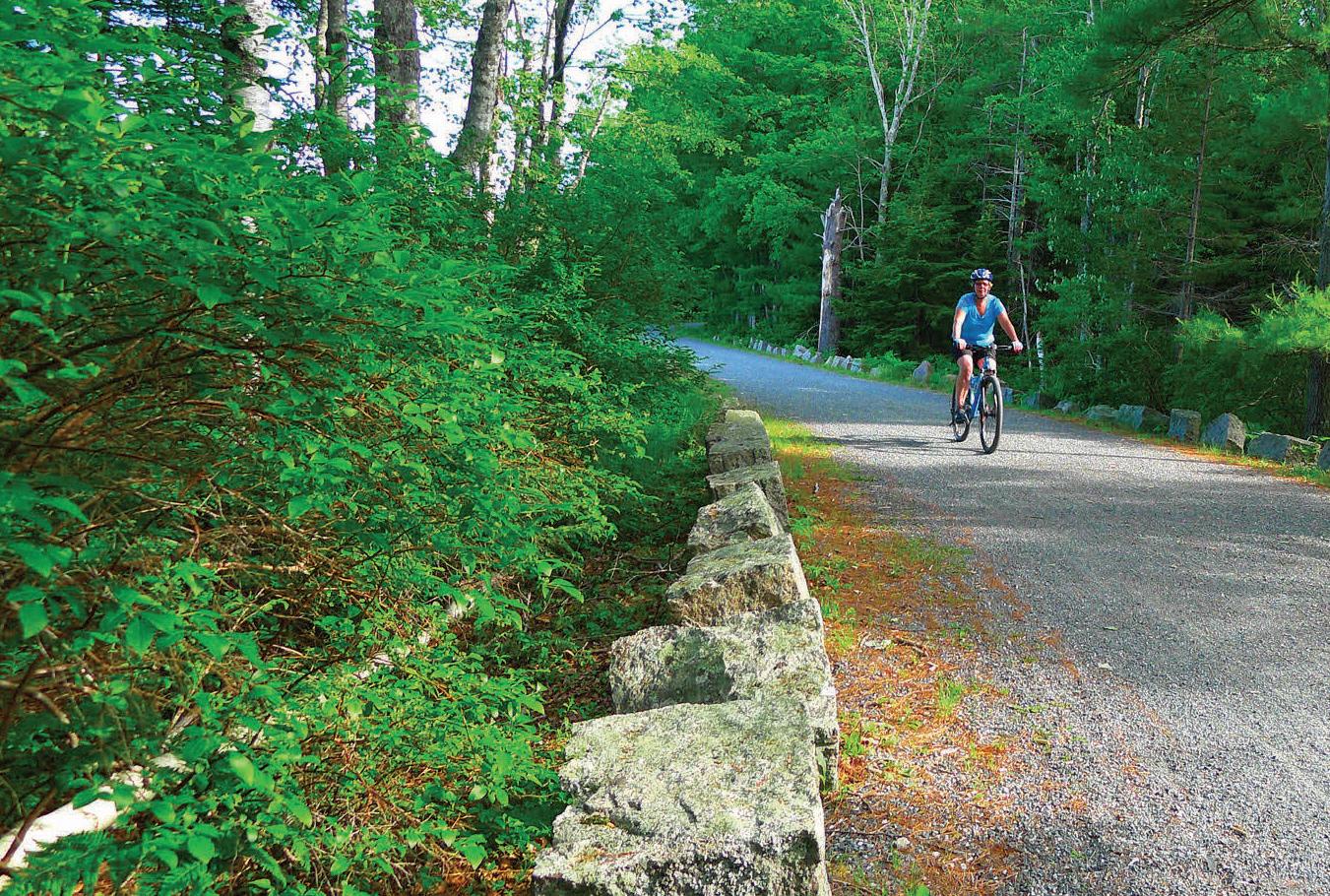
Line a rimmed baking sheet with foil and arrange the pepper slices on the sheet. Peel the outer skin from the garlic and cut off the pointed end of the head to expose the top of each clove. Set, cut side up, on a square of foil and wrap the foil up around it, drizzling in a tablespoon of oil before sealing the package. Transfer the sheet of peppers and the garlic pack to the middle rack of the oven and roast until the peppers begin to blacken at the edges and the garlic is caramelized and soft, about 40 minutes. Remove the garlic and let cool.
Turn on your broiler and move the peppers to the top shelf. Broil, watching closely, until their skins blacken and blister, 1 to 2 minutes. Remove from oven and let cool, wrapped loosely in paper towels or, preferably, sealed in a brown paper bag. When the peppers are cool enough to handle, peel off the blackened skin and discard. Transfer the flesh to a food processor. Squeeze the garlic cloves into the processor with the peppers and add the stock, almonds, lemon juice, sugar, salt, and pepper. Blend until smooth. Taste and add more salt and pepper as desired.
Meanwhile, bring a large pot of salted water to a boil and cook spaghetti according to package directions. Drain and set aside in a covered pot.
Heat the butter and remaining 2 tablespoons olive oil in a large skillet over high heat. Season both sides of each scallop with a pinch of salt and sear until bo th top and bottom are nicely browned, about 2 minutes per side. Add the sauce to the pot with the scallops and simmer for a minute to let the flavors combine. Divide the pasta among 4 or 6 bowls, depending on whether you’re serving this as a starter or main course. Toss with the scallops and sauce, and sprinkle with chives. Serve immediately. Yields 4 to 6 servings.



 BY AMY TRAVERSO
BY AMY TRAVERSO
n a Saturday morning at the Modern Diner, the length of the line waxes and wanes. Arrive at 10 a.m. and you’ll find only five people in front of you. Fifteen minutes later, the line snakes out the door. In the entryway, art school students, workers just off the night shift, and parents wrangling antsy kids all take stock of a wall that’s covered in laminated cards listing the day’s specials: pumpkin pancakes, pesto cheese grits and eggs, cranberry-apple French toast, linguiça hash Benedict. Although these are technically specials—they’re not printed on the menu—few dishes actually come off the wall. Customers come specifically for those grits and that homemade hollandaise.
An elegant octogenarian in a linen vest and newsboy cap leans on a cane as he talks to a waitress who’s too busy to chat but always stops anyway. “I’m so proud to be in this country,” he tells her. He’s from Portugal, she says later—an arborist named Manny who can bring anything back to life. Sometimes he likes to come in and sing a heartfelt “God Bless America” to the assembled crowd.
It’s fitting that this, the first diner to be listed on the National Register of Historic Places, is located on a Pawtucket thoroughfare just four miles from the spot where Walter Scott began selling sandwiches and coffee to fellow Providence Journal workers back in the late 1850s. Scott expanded his business in 1872, converting a horse-drawn covered wagon into a rolling café. His meals-on-wheels innovation was the precursor to the modern diner, and his success begot a succession of New England companies manufacturing “night lunch wagons.” In time, the wagons were replaced with more-permanent structures. Massachusetts became a center of diner production, and Rhode Island became an accumulator of them.
Which brings us back to this redand-cream-colored Sterling Streamliner, shaped like a locomotive and manufactured in Merrimac, Massachusetts, sometime between 1939 and 1942. This is the place that Nick Demou bought with his father, Arthur, back in 1986, after they both lost their jobs at a Pawtucket textile mill. “I was
An iconic Rhode Island breakfast spot gets its moment in the national limelight.PHOTOGRAPHS BY ALEX GAGNE The chouriço special at the Modern, one of only two Sterling Streamliner diners still in operation (the other is in Salem, Massachusetts). OPPOSITE : Owner Nick Demou takes a rare break. “I’ve seen four generations come through here,” he says.
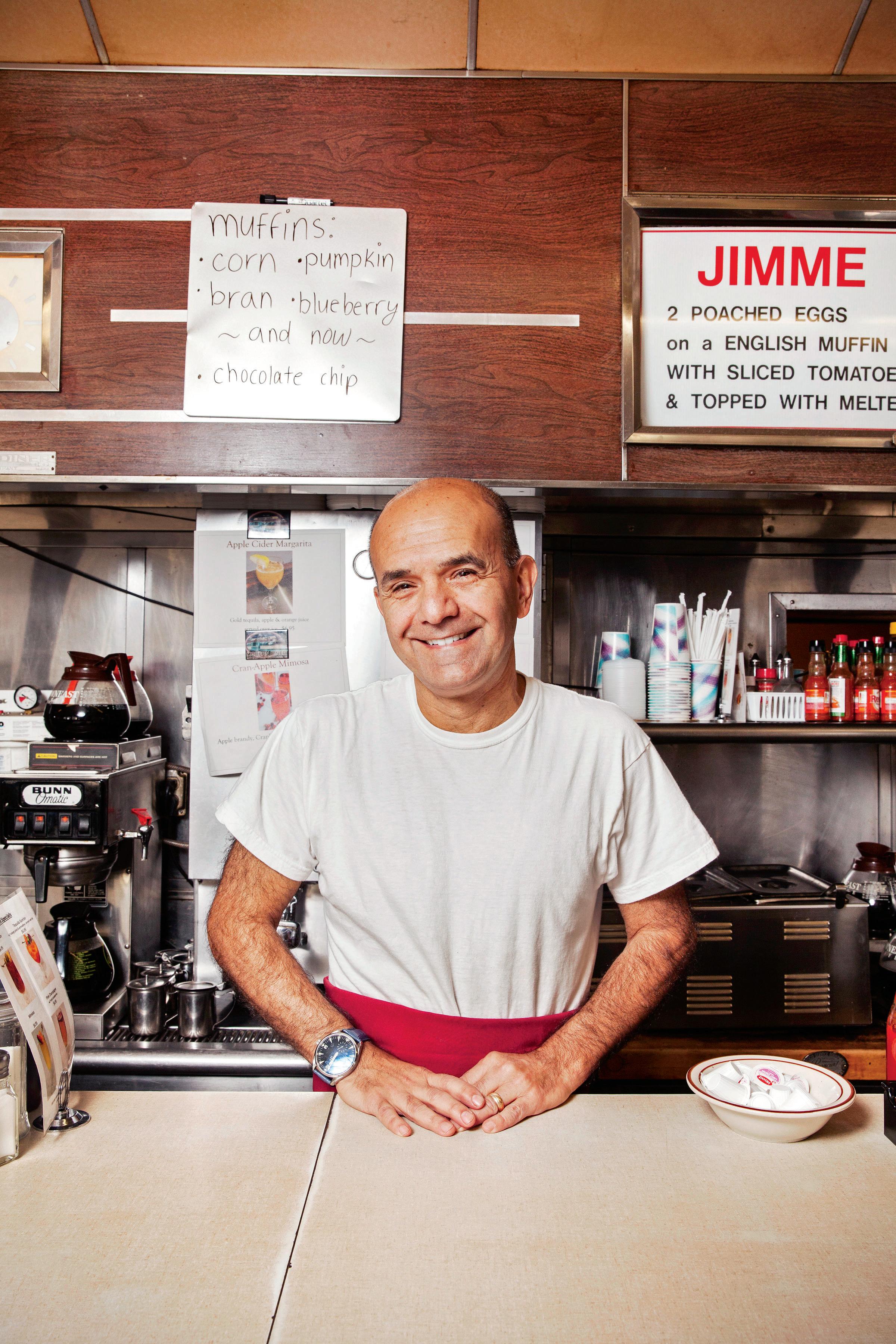
young and my father was forced out of a job, and so I went to Johnson & Wales and he helped me open up my first restaurant,” Nick says. With his formal training, Nick could have become another young cook making his way up the ranks in some French kitchen, but he sought a different path. “I wanted to try to create a normal life for myself, and the only way I could’ve done that was to do the kind of restaurant I have,” he says. “Unfortunately, I’m in there at 4 a.m., but I’m out by 2:30 and I could see my wife and do the father-son things.”
With Arthur managing the business and Nick in the kitchen, the diner found a following on Thayer Street near the Brown University campus. When the city decided to build senior housing on that spot, the Demous simply did exactly what Walter Scott would’ve done: They moved their eatery to a new location, a few miles north on Pawtucket’s west side. They polished up the wood paneling, shined up the chrome-

and-green-vinyl stools. Despite heavy use, the old girl is still a beauty.
A little over a year ago, the Food Network named Nick’s custard French toast the best diner dish in the country, and so the lines got longer. “Honestly, I was making pudding one day and I made too much and it wouldn’t fit in my cups,” Nick says. “In the restaurant business you just don’t throw stuff away, so all I did was thin down my pudding and added a bit of rum to it and put it on the French toast with fruit.” He also adds candied pecans, which he makes himself, and raspberry syrup. It’s an abundant dish: creamy, tart, crunchy, deeply satisfying. Most everything Nick serves is homemade, from the stock that goes into the lobster grits to the linguiça hash and desserts. And

that’s with just five guys on the line, max. “No one ever leaves me,” Nick says of his staff.

The one person who has left is Arthur, who passed away in 1993. “He was a tremendous loss to me,” Nick says. “He and my mother took a chance on a kid who had such bad dyslexia that they had to write the order slips in a certain way so I don’t get them confused.”
Now well into his 60s, his sons grown, Nick keeps on. He likes seeing the next generation of customers come up, the parents he knew when they were themselves children. Last spring, one teenage boy even sought his help with a rite of passage. “He asked us to make us a special pancake for this girl,” he says. “We wrote ‘Please come with me to the prom’ on it.”
She said yes.
Breakfast entrées from $2.25 for an egg sandwich. 364 East Ave., Pawtucket, RI. 401-726-8390; moderndinerri.com
• South County Hospital is first in the world to offer Mako Technology for total knee procedures
• Highly-advanced Mako Technology for total hip replacement, partial knee resurfacing, and now total knee replacement offers an unprecedented level of precision to help restore mobility

• Consistent pinpoint accuracy, optimal implant positioning, superior outcomes
For a consultation with a physician at Ortho Rhode Island – South County Orthopedics, call 401 789-1422.
Want to know more? For information on free evening presentations in your area, please call 401 788-1173.




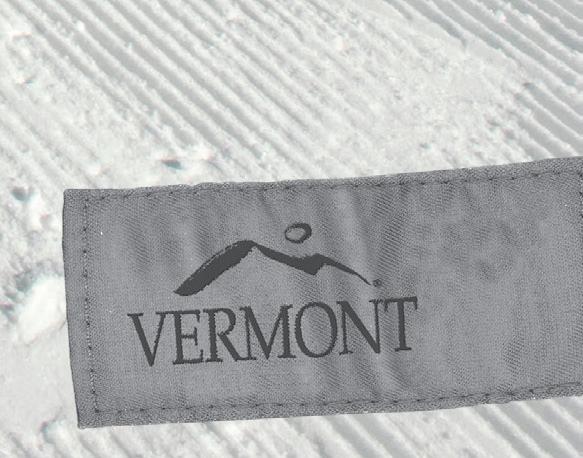
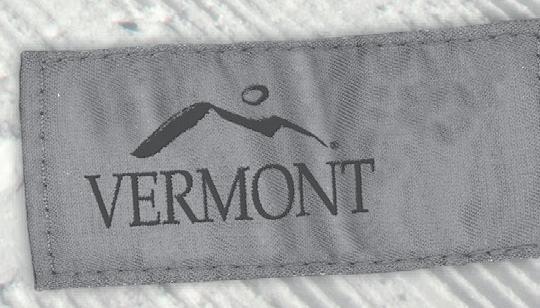




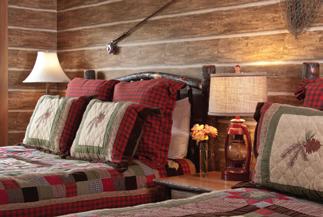

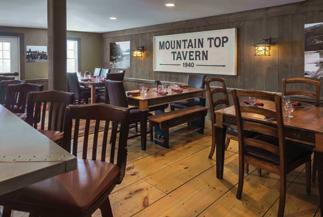








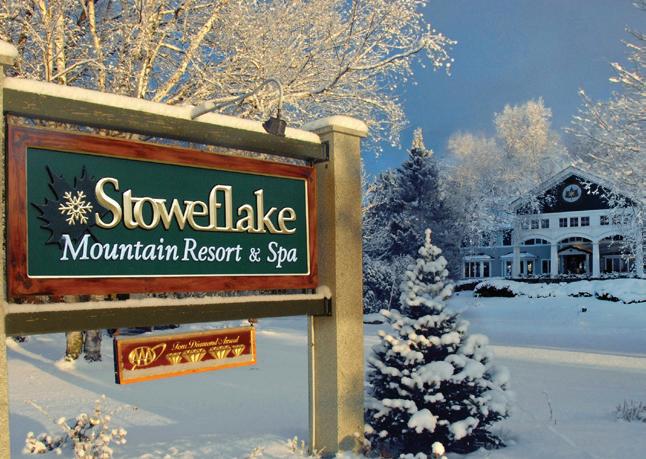







 BY ANNIE GRAVES
BY ANNIE GRAVES
arents or alumni?” asks a fellow passenger as we step into the elevator at the Hanover Inn, docked like an ocean liner on the banks of the Dartmouth College Green in Hanover, New Hampshire. Neither, as it turns out, but the lines get blurry in this Ivy League enclave. The pretty town was founded July 4, 1761; the college followed in 1769. Since then, the two have grown together like vines, to the point where they’re practically indistinguishable from each other. Hanover’s population (11,260 in 2010) is almost double Dartmouth’s, but it feels like an even match. Maybe it’s all that youthful energy, or the elegant 269acre main campus infiltrating the town. Or the range of daily diversions, from arts to sports, that speak to both students and residents. Or the dynamic café scene that someone like Robert Frost (student, lecturer), Theodor Geisel, aka Dr. Seuss (student), or Mindy Kaling (student) might appreciate. “It’s a concentrated shot of culture,” says one local resident. “People are well educated, and you feel it.”
The Appalachian Trail winds past the college-owned inn (the only inn on the 2,200-mile trail). Nearby, there’s Ledyard Canoe Club for canoeing and kayaking, Occom Pond for skating, Dartmouth Skiway for downhill, and the Dartmouth Cross Country Ski Center for, well, the obvious. All the perks of an Ivy League habitat, none of the academic pressure.
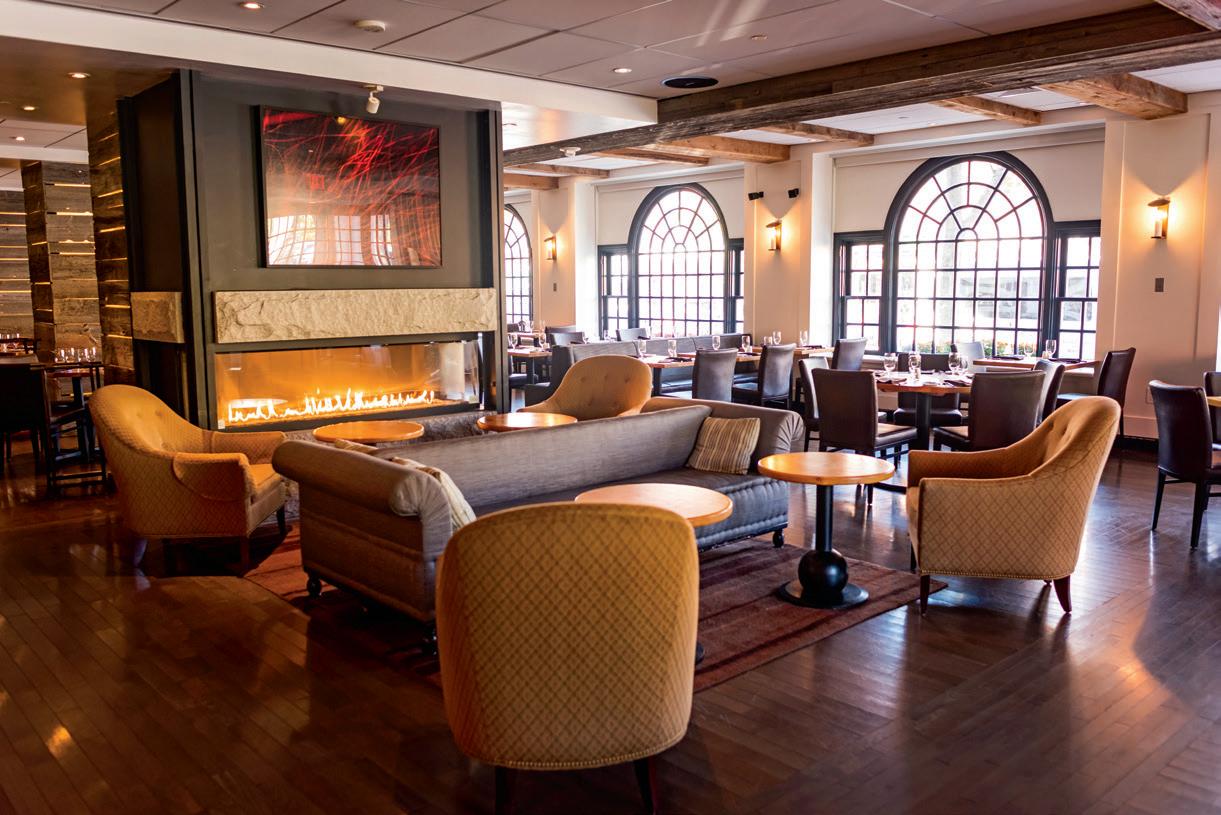 Shades of Philadelphia’s Independence Hall can be seen in the original 1928 facade of Dartmouth’s Baker-Berry Library.
top right : The Hanover Inn’s restaurant, Pine, offers locals and visitors a refined gathering spot.
Shades of Philadelphia’s Independence Hall can be seen in the original 1928 facade of Dartmouth’s Baker-Berry Library.
top right : The Hanover Inn’s restaurant, Pine, offers locals and visitors a refined gathering spot.
This just might be the best college town of all.
from top : The Hopkins Center for the Arts, touting some seasonally appropriate Shakespeare; the downhill crowd hits the slopes at the Dartmouth Skiway.





Midway up New Hampshire’s western border, Hanover sits on the Connecticut River, with Vermont just across the water. The White Mountains rise to the east, the Green Mountains to the west, less than an hour in either direction. In the center of town, college buildings surround the Green, which is anchored at the top by the Baker-Berry Library, with its polished-wood study nooks, and at the bottom by the Hanover Inn, still gleaming from its $43 million facelift in 2012. Main Street shoots off the Green in a tumble of cafés, clothing shops, and bookstores—an impressive amount of stimulation condensed into several blocks, illustrating a peculiarly Hanoverian law of physics.
While the Hopkins Center for the Arts (the Hop) posts a full roster of films and performances, it offers less predictable events, too—a piano mas ter class, say, or Christmas Revels at Spaulding Auditorium. The adjacent Hood Museum, one of the oldest and largest college museums in the coun try, shares its rich collection for free, but residents can also volunteer to be docents, learning all there is to know about Assyrian reliefs in the process. The sports-inclined can find a hockey game on Occom Pond or watch the college stars at Dartmouth’s Thomp son Arena, and cheer on the entire college community at the Big Green bonfire on homecoming weekend.

“We like drinks at Pine—the atmosphere is fun and they have a real mixologist,” says one half of a longtimeresident couple, referring to the Hanover Inn’s sleek restaurant. The two quickly add Dirt Cowboy for best coffee and Canoe Club Bistro for lunch. But then we discover Base


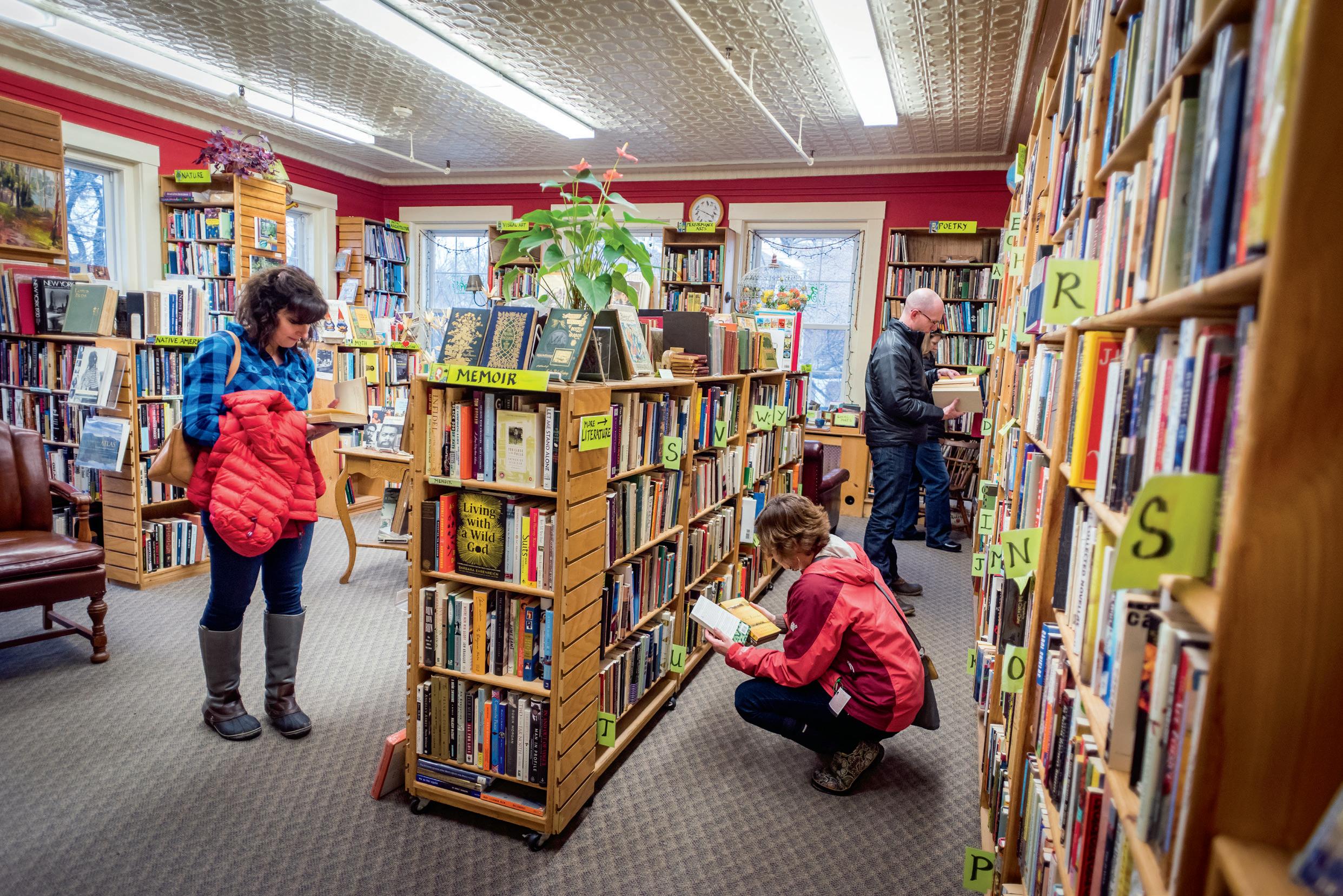 from top : Packed with more than 9,000 rare and used titles, Left Bank Books keeps browsers happily occupied on a winter day; luscious folds of flavor at Hanover-born Morano Gelato.
from top : Packed with more than 9,000 rare and used titles, Left Bank Books keeps browsers happily occupied on a winter day; luscious folds of flavor at Hanover-born Morano Gelato.
Camp Café, specializing in Nepali food and run by husband and wife Bhola and Saraswati Pandey; turns out the lightly spicy scent of sweet-potato chhoila and chicken tarkari on a chilly January afternoon is more warming than a wood stove. Later, dinner at Candela Tapas Lounge—tacos de pescado and braised pork belly over pineapple—is good enough to order twice (so we do). Lucky Hanover, with foodie treasures everywhere ... like Morano Gelato, which has the best blood orange and dark chocolate scoops this side of Rome.

If the Green is your thing, the Dartmouth Co-op can clothe you, plus feed your mind with its deep catalog of books and magazines. Among the nearby shops are the League of New Hampshire Craftsmen, Simon Pearce (glass), Left Bank Books (used and out of print), and even J.Crew, but keep an eye open for the little boxes set at bird feeder height along the sidewalk: The Howe Little Free Libraries, organized by the town’s Howe Library (praised by a local author as one of the best libraries he’s ever been in), ask only that you “Take One, Leave One.”
In-town properties can be expensive, but there are perks, too: Bike to downtown from an 1801 four-bedroom “mini farm” colonial, with barn, on 4.5 acres for $649,000. A 1988 Cape with three bedrooms, a two-car garage, and pretty grounds listed at $359,000, while less than 10 miles from the center of town there was a three-bedroom open-concept home with a large deck on 2 acres abutting conservation land listed for $269,000.
You can find culture where you least expect it, like the sprawling José Clem-
ente Orozco mural The Epic of American Civilization, painted between 1932 and 1934 and located on the lower level of the Baker-Berry Library. On the subject of health, a $10 day pass to Dartmouth’s Zimmerman Fitness Center bestows 16,000 square feet of wellness potential. Just across the river in Norwich, Vermont, the King Arthur Flour Company offers a dazzling array of workshops, a café, and a kitchen store, while the Montshire Museum of Science attracts 150,000 visitors annually with hands-on exhibits. Norwich institution Dan & Whit’s General Store has been around for more than 110 years, and it would take
about that long to explore every cranny in this emporium of everything.
It’s big, boutiquey, and comfortably chic, but the Hanover Inn is also home away from home for Dartmouth alumni. The rest of us get to crash the party—a “Dartmouth in Town

Again” board tells you which alums are currently in residence at the inn. 2 E. Wheelock St., Hanover, NH. 603643-4300; hanoverinn.com
To see more photos from our visit, go to newengland.com/hanover.
ew England’s most reliable snowplow clears beaches day and night, keeping the band of land at water’s edge walkable—and enjoyable if you’re dressed right. Wintertime waves are mesmerizing; the ocean’s restorative energy a constant. So why not heed salt water’s call when lodging rates—and seashells—are the best you’ll find all year? These beloved coastal communities have quieter alter egos worth getting to know.
Unlike most Cape Cod towns, Falmouth never settles down for a postholiday nap. Breeze across the Bourne Bridge to shop and dine … and even join the diehards who chase brightly colored golf balls at the Cape Cod Country Club long after the greens are not so green. At oceanside properties like Sea Crest Beach Hotel, room rates plummet 50 percent from summer—or even more, says Howard Grosser, whose Inn on the Sound is steps from Falmouth Heights Beach. Although gazing out to sea while sitting beside the inn’s roaring fire may seem, as Grosser admits, “incongruous,” it feels

elemental, and satisfying. But do ven ture outdoors, says Woods Hole pot ter Joan Lederman, or else you’ll miss seeing Falmouth “all frosted” and hear ing, when conditions are just right, the extraordinary sound of “granular slush” lapping the shore. falmouthchamber.com
When winter does its worst, even tour ing the Cape Pond Ice company can feel like an escape. But thanks to the coastal topography here, “you can always get out of the wind on a beach,” says local restaurateur Lenny Linquata. Of course, he would rather you dodge the weather by dining on fresh seafood, this historic port’s enduring claim to fame. Gloucester’s reputation as a winter birdwatching destination is soaring too. And if you’d like a front-row seat for winter’s best reality show, the owners of Blue Shutters Beachside Inn—with prime views of Good Harbor Beach— can add you to their list of guests who’ve asked to be alerted when storms swell the Atlantic. discovergloucester.com
Imagine parking for free at the beach and watching surfers ride stormchurned waves, or walking three miles of shore with little to disturb your reveries. More and more shops, restaurants, and lodgings—like the pet-friendly Captain Jefferds Inn, the Boathouse Waterfront Hotel, and the right-on-the-beach Seaside Inn—are keeping their doors open with offseason bargains. February’s “Paint the Town Red” promotion transforms this storybook village with warmth and whimsy. gokennebunks.com

Now is when locals can sip coffee as they steer along Ocean Drive: no constant braking required. It’s when getting out on the water means etching your way across the Newport Skating Center’s freshly groomed ice. Stepping out on the Cliff Walk or Easton’s
Beach is invigorating. Mansions, the Audrain Automobile Museum, Newport Vineyards’ Saturday farmers’ market, and other attractions offer indoor respite. And overnight guests appreciate the Chanler at Cliff Walk’s butler-drawn aromatherapy baths or afternoon tea at Castle Hill Inn all the more. The back half of February brings 10 days of Winter Festival fun, and Saint Patrick’s Day turns the city green long before spring does. discovernewport.org
At the Inn at Stonington, draw a sense of calm from the in-room gas fireplaces and soaking tubs—or, if excitement’s what you’re after, just step out the front door. “The beauty,” says manager Susan Irvine, “is you park your car, and then you don’t need it anymore.” Petite duBois Beach remains one of the area’s finest places to watch the setting sun’s fiery finale; afterward, stroll hand-inhand to dinner. When more than 100 British cannons were aimed at Stonington during the War of 1812, residents refused to evacuate. Now, their coffeehouses, shops, and restaurants remain resolutely open year-round. Take home Stonington Seafood Harvesters’ Bomster scallops, flash-frozen at sea and sold on the honor system. One bite and it’s a sweet summer day, even in bleakest January. stoningtonboroughct.com

ear after year, the residents of Plainville, Massachusetts, would walk by the closed storefront on South Street and think about what could be. Everyone, it seemed, had a dream for the 19th-century building, which most recently had served as Falk’s Market but had also been, at various points, a barbershop, a tearoom, and a drugstore.
Jeff and Julie Kinney were among those daydreaming passersby. If your family includes children of a certain age, you’ll know Jeff Kinney’s work: He wrote Diary of a Wimpy Kid in 2004 as an online series for the educational-game site Funbrain, where it attracted an estimated 20 million readers and launched one of the most lucrative properties in publishing, with 11 bestselling books, a popular movie series, a stage musical, and all the related toys, games, and merchandise one would expect.
When the Kinneys moved to Plainville in 2002, Falk’s Market already had been shuttered for a decade. The couple chose the former manufacturing town of 8,200, located about 20 minutes north of Providence, Rhode Island, because it was convenient to Boston as well as to Worcester, Massachusetts, where Julie had grown up.
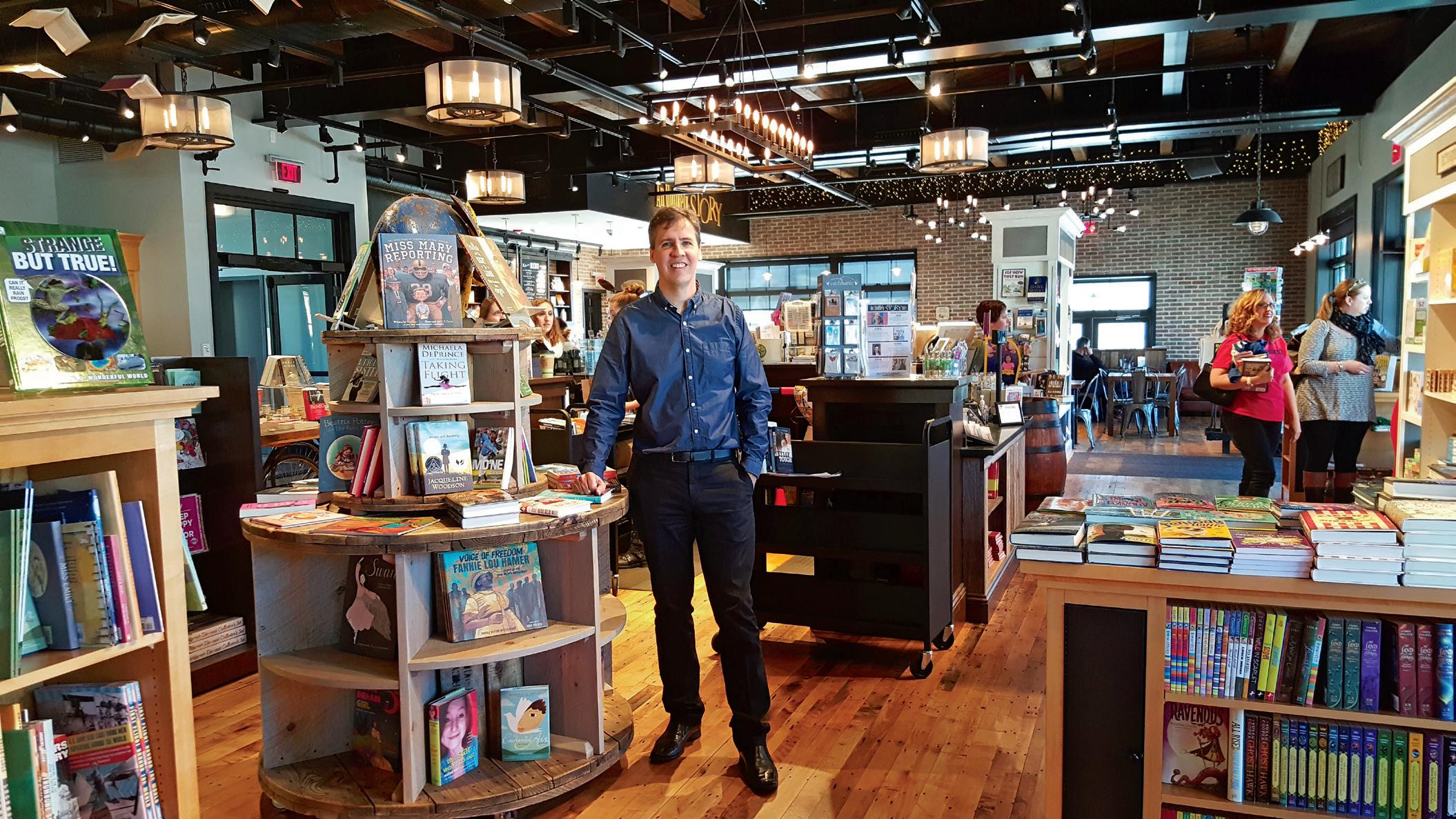
The Bay State bookstore that A Wimpy Kid built is all about imagination and possibilities.
In 2012 the Kinneys purchased the old building, which was in extreme disrepair, with plans to rehabilitate it as a center of community activity. But one contractor after another told them that it was too far gone to be saved. The building had to come down—and so it did. Unexpectedly working from a blank slate, the Kinneys soon reshaped their vision for the property. The result: a modern three-story building that reaches to the future while celebrating the past. An Unlikely Story Bookstore and Café was born.
“The goal was to fill a gap,” says Shaelyn Germain, programs director for An Unlikely Story. “They wanted to offer something that wasn’t available nearby, a comfortable place where you would want to stay awhile. It is a bookstore and café, but it is also a flexible and creative community space. There were many discussions about all of the possibilities. To see the evolution from ideas to actuality is fantastic.”
The new building’s exterior captures some of its predecessor’s essence, including the porch, which had long been a popular gathering spot. Inside, the first-floor retail store offers many quirky gift items alongside a broad selection of books. The café serves sandwiches, organic food, and locally roasted coffee. Vintage business signs that once adorned the old exterior now ring the upper walls of the retail space. One of these signs is original, while the others are hand-painted replicas crafted by Providence Painted Signs. Good luck figuring out which is which.
There are surprises and discoveries throughout the building, and, true to the store’s name, many of its features have stories every bit as good as those in the books that surround them. The floors are reclaimed maple from
the Amoskeag Mill in Manchester, New Hampshire, and the Putnam Nail Company building in Dorchester, Massachusetts. There are ceiling beams from the former Atlas Terminal Warehouse in Providence. Old fruit and vegetable crates from Falk’s Market have found new life as part of a display table. The furniture lining the porch is made from Indonesian boat wood salvaged after the 2004 tsunami.
The spaces are adaptable and marked by a sense of whimsy at every turn. Above the children’s book section, a flock of Harry Potter books spread their wings and soar to the ceiling. You may find an original Jeff Kinney sketch on a chalkboard, left the last time he passed by. Depending on the day of your visit, the author himself may be out on the floor, stocking shelves.
The second-floor meeting room has hosted dinners and author events, as well as yoga classes and community meetings. On the third floor is Jeff’s office, an open-concept space where kids can see mementos of the Wimpy Kid franchise and maybe even observe the creative process. At center stage in the office is yet another surprise: a 300pound statue of Scrooge McDuck, one of Jeff’s prized possessions.
The lesson of An Unlikely Story is that preserving and building on the essence of a space is sometimes more important than saving the structure itself. “Falk’s Market served as the nerve center for Plainville for decades, and our goal was to create an equally vital gathering place for the community,” Jeff says. “We think the new building has created a spark, and we expect it to be the center of community activities for decades to come.”
11 South St., Plainville, MA. 508-699-0244; anunlikelystory.com
Great ships. Great food. Great fun. SAIL

3- to 6-day adventures
Depart from Camden & Rockland 1-800-807-WIND www.sailmainecoast.com
Ask us about our specialty cruises, too!
A Four-Season Destination!
Year-Round Shopping, Dining & Lodging.

Downhill & Cross-Country Skiing. Skating. Cozy Fireplaces. Snowmobiling. Art Galleries. Snow-Shoeing. Concerts. Fisherville - Bobhouses on Wolfeboro Bay Winter Carnival. Ice Fishing Derbies. Bonfires. Chowder & Brew Festivals. New Abenaki Ski Lodge.

Ask for a FREE Brochure! at wolfeborochamber.com

603-569-2200 • 800 516-5324
“Work and Live Where You Love to Play” wolfeboronh.us
Depending on when you visit, the author himself may be out on the floor, stocking shelves.
FEBRUARY 26
In days of yore, says Old Sturbridge Village curator Tom Kelleher, winter was the best season for traveling in New England, since packed snow was much smoother than the muddy and rutted dirt roads of the other seasons. More than 20 vintage horse-drawn sleighs will be featured at this annual event, weather permitting. Sleigh drivers compete in a dozen classes for adults and juniors, including “Sleigh Dog” (dogs ride too!) and “Currier and Ives” (vintage costumes). The event is open to the public and covered by general museum admission. Sturbridge, MA. 508-347-3362; osv.org

JANUARY 26
Rather than just taking a writing class or a workshop, how about having three hours of uninterrupted writing time in Mark Twain’s own library? Join fellow scribblers, including a special guest author, as you reflect on and plot out your next great piece of literature. The space is quiet, except for the burbling fountain in the nearby conservatory, and infused with the spirit of Samuel Clemens himself. Contact the museum for reservations. Hartford, CT. 860-247-0998; marktwainhouse.org
JANUARY 21–22
Held in conjunction with the Musher’s Bowl dogsled race, this event offers activities for all ages. Enter a dodgeball or Ping-Pong tournament, take a snowmobile or dogsled ride, strap on the snowshoes for a hike, hit the dance floor, or participate in an ice fishing derby. Bridgton Lakes, ME. 207-647-3472; desdc.org, mainelakeschamber.com

JANUARY 27–29
For the 16th year, talented snow sculptors from across the region will converge on the village of Jackson for a weekend of creating chilly masterpieces from 8-foothigh cylinders of packed snow (in a contest officially dubbed the “New Hampshire–Sanctioned and
Jackson Invitational Snow Sculpting Competition”). Although most pieces are not finished until Sunday, spectators are welcome throughout the process; nighttime illumination makes an after-dark stroll a must. In addition to the artistic endeavors, there will be a bonfire for roasting marshmallows, a torchlight parade, a scavenger hunt, and plenty more to keep folks entertained. Jackson, NH. 603-383-9356; jacksonnh.com
RHODE
JANUARY 1
Whether you’re aiming to dive into the new year in the most exhilarating way or just observe others doing it, you’ll enjoy the spectacle as members of Newport’s Polar Bear Club take their annual dip at Easton’s Beach. There’s no charge, but donations are welcome: The plunge and the after party are fund-raisers for A Wish Come True, a nonprofit that grants wishes to sick children. Newport, RI. 401-781-9199; awish.org
VERMONT
FEBRUARY 18–26
There’s a little bit of everything at Brattleboro’s Winter Carnival, with activities being offered all over town. Whether you prefer being entertained by a movie, puppet show, concert, or variety show or getting active on the ski slopes, ice rink, or dance floor, you’ll find what you’re looking for— plus cook-offs and pancake breakfasts, sports competitions, and sleigh and snowmobile rides. Brattleboro, VT. brattleborowintercarnival.org
—Compiled by Joe Bills
For more best bets around New England, see p. 80
THROUGH JAN. 29: OLD LYME, “In Place: Contemporary Photographers Envision a Museum.” Visit the Florence Griswold Museum to view the work of 10 photographers who have trained their lenses on the museum itself, from its stunning architecture to its surrounding landscape. 860-4345542; flogris.org
JAN. 7–8: HARTFORD, Connecticut Bridal Show Expo. The largest bridal expo on the East Coast sets up shop at the Connecticut Convention Center, combining fashion shows with dozens of vendors to offer one-stop shopping for any and all wedding needs. 860-563-2111; jenksproductions.com
JAN. 27–29: UNCASVILLE, Sun Winefest. Mohegan Sun pulls out all the stops for a weekend of wine and beer tastings, competitions, seminars, celebrity chef demonstrations, and a grand tasting that will feature more than 1,000 selections. mohegansun.com/sunwinefest
JAN. 28: NEW LONDON, “Storybook Suites.” In its 70th season, the Eastern Connecticut Symphony presents a concert at Garde Arts Center featuring Julie Eskar on violin. The program includes Tchaikovsky’s “Sleeping Beauty” Suite, Prokofiev’s Cinderella , and Humperdinck’s Hansel and Gretel 860-4432876; ectsymphony.com
FEB. 9–12: HARTFORD, CMTA Boat Show. The Connecticut Convention Center provides the venue for viewing all things boating, from personal watercraft and luxury cruisers to fishing and accessories. Look for speakers, seminars, and service booths, too. 860-767-2645; hartfordboatshow.com
FEB. 11: PUTNAM, Fire & Ice Valentine’s Festival. Here’s a sweet way to spend the day with that someone special. Enjoy carriage rides, more than 25 unique ice sculptures, ice luminarias, ice carving demonstrations, fantastic food and drink offerings, and live entertainment. discoverputnam.com/fire-and-ice
FEB. 12: NEWTOWN, Telegraph Quartet and Simone Dinnerstein. Since 1978, Newtown Friends of Music has been presenting acclaimed classical musicians on the stage of the beautiful Edmond Town Hall. The upand-coming Telegraph Quartet and the internationally lauded pianist Simone Dinnerstein are the guests for this latest installment. 203426-6470; newtownfriendsofmusic.org
FEB. 17–JULY 23: NEW HAVEN, “Lumia: Thomas Wilfred and the Art of Light.” Yale University Art Gallery and the Smithsonian American Art Museum present the first exhibit of Wilfred’s spellbinding light compositions in more than 40 years. It features nearly half of Wilfred’s extant light works, including his most ambitious public installation, Lumia Suite, Opus 158 , commissioned in 1963 by New York’s Museum of Modern Art. Wilfred was recognized as an innovator by artists of his time; this exhibit aims to restore him to his rightful place at the forefront of kinetic and light art. 203-432-0601; artgallery.yale.edu
FEB. 23–26: HARTFORD, Flower and Garden Show. As it has for more than 35 years, spring makes one of its first appearances in New England at the Connecticut Convention Center, which will teem with 300plus booths and exhibits. 860-844-8461; ctflowershow.com
JAN. 1: OLD ORCHARD BEACH, Lobster Dip for Special Olympics Maine. Start your year off with a chill and a thrill while helping a great cause. The annual Lobster Dip is one of the primary fund-raisers for Special Olympics each year, with throngs of generous (albeit slightly crazy) folks gathering in front of the Brunswick Hotel before testing the waters at noon. 207-695-2421; somaine.org
JAN. 24–FEB. 19: PORTLAND, Arsenic and Old Lace . Mayhem ensues in this dark comedy as Mortimer, nephew of the homicidal Brewster sisters—who operate a room-forrent business complete with homemade elderberry wine—tries to keep his unconventional family in check. Don’t miss this performance of the 1939 classic by Joseph Kesserling. 207-774-0465; portlandstage.org
JAN. 29: ROCKLAND, Pies on Parade. The whole town goes a little pie-crazy for this annual event, now in its 12th year. More than 45 different pies are presented by area restaurants and inns throughout town—from fruit pies to meat pies, sweet to savory. Reserve tickets now to ensure you’ll enjoy a full day of strolling and sampling at this delectable event. historicinnsofrockland.com
FEB. 1–28: BRUNSWICK, Longfellow Days. Honoring the life and works of the famed poet and former Bowdoin College student Henry Wadsworth Longfellow, this event features readings, lectures, tours, dining, and film events at various locations in town. 207-729-4439; brunswickdowntown.org
FEB. 3–JUNE 4: PORTLAND, “The Mistress and the Muse: Figurative Art from the Isabelle and Scott Black Collection.” This exhibit explores the relationship between the painter and the muse in the genre of portraiture. Diverse works from the 19th and 20th centu -
ries range across a wide variety of media. 207-775-6148; portlandmuseumofart.org
FEB. 4: GREENVILLE, Wilderness Sled Dog Race. Since this race begins and ends right in town, you can cheer on the competitors from start to finish in what is one of only three long-distance races in New England (it’s a full 100 miles). 207-695-2421; 100milewildernessrace.org
FEB. 6: KENNEBUNK, Winterfest. Start your day with the pancake breakfast, then check out the craft fair, horse-drawn carriage rides, scavenger hunt, snowshoe races, and more. 207-985-2102; kennebunkmaine.us
FEB. 10–12: CAMDEN, U.S. National Toboggan Championships. Most of the 400 or so sledders are here to compete for the fastest time, but the teams outfitted in zany and creative costumes make it all the more fun to watch this competition, held on the iced wooden Jack Williams Toboggan Chute at Camden Snow Bowl. camdensnowbowl.com
FEB. 19: SOUTH BRISTOL, Ice Harvest. Visit Thompson Ice House to see how ice was harvested for refrigeration in the 19th and early 20th centuries. View the cutting, help move the ice blocks, and enjoy skating, horse-drawn wagon rides, and food and drinks. 207-883-3145; thompsonicehouse.com
THROUGH MARCH 12: SALEM, “Shoes: Pleasure and Pain.” This exhibit featuring nearly 200 pairs of shoes delves into the rich history and the exciting future of shoes and shoe design. In collaboration with the Victoria and Albert Museum in London, the Peabody Essex Museum showcases some of the greatest shoe collections in the world and reveals the surprising cultural significance of our footwear. 978-745-9500; pem.org
JAN. 12–15: WILLIAMSTOWN, I/O Festival of New Music. Held annually at Williams College’s ’62 Center for Theatre and Dance, the festival immerses audiences in the full spectrum of today’s most vital compositional trends. Expect performances by Tak Ensemble and I/O Ensemble, as well as by students and faculty performing all kinds

GUIDE
of adventurous music in novel settings. 413-597-2425; music.williams.edu
JAN. 12–16: BOSTON, International Auto Show. Behold the premier showcase of the newestmodel-year vehicles of every type, both imported and domestic, at the Boston Convention and Exhibition Center. Factory and dealer reps will be on hand to answer your questions in a no-pressure environment; test drives are available too. 781-237-5533; paragonexpo.com
JAN. 14–15: WILMINGTON, Boston Antiques & Design Show and Sale. Visit Shriners Auditorium to peruse the vintage wares offered by more than 150 vendors, including jewelry, silver, fine furniture, and artwork. 781-862-4039; neantiqueshows.com
JAN. 27, 29: BOSTON, “Mozart and Haydn.” The Handel and Haydn Society delights audiences with its period instrument orchestra and soloists, here performing work by two composers (who were actually great friends) at Boston’s Symphony Hall. 617-266-3605; handelandhaydn.org
FEB. 3–5: HYANNIS, Boatbuilders Show on Cape Cod. “The best little boat show in the Northeast” returns to the Cape Cod Resort and Conference Center to give you a jump on the season. Enjoy looking over the varied accessories and beautifully crafted pleasure boats—whether you’re shopping in earnest or just dreaming of summer. boatcapecod.org

FEB. 17: WORCESTER, National Symphony Orchestra of Ukraine. Under the direction of Volodomyr Sirenko, this performance by one of Eastern Europe’s greatest orchestras is not to be missed. Soloist Alexei Grynyuk is set to dazzle on Prokofiev’s Piano Concerto No. 3, and the rest of the evening is sure to delight. Presented by Music Worcester. 508-754-3231; musicworcester.org
FEB. 18–19: BOSTON, Wine Expo. Immerse yourself in a celebration of wine, fine foods, and global cultures at the Seaport World Trade Center. A highlight is the popular Chef Stages, featuring advice from celebrity chefs on pairing the perfect wine with the perfect dish. 617-439-7700; wine-expos.com
FEB. 24–26: BOSTON, New England Home Show. Covering topics ranging from lighting to flooring to siding, and from techniques to tools, more than 500 home improvement experts will be on hand at the Seaport World Trade Center to answer your burning DIY questions. Bring the kids and enjoy live cooking demonstrations, a furniture building zone, and a craft and specialty food area. newenglandhomeshows.com
JAN. 14–15: LINCOLN, Independence Weekend. Help Loon Mountain celebrate the snowmakers as you enjoy a visit with Uncle Sam on stilts, fireworks, rides on the Grooming Cat, family entertainment, a parade, and more. 603-745-8111; loonmtn.com
JAN. 28: CONCORD, Northeast Organic Farming Association of New Hampshire’s Winter






Conference. This conference in support of the state’s organic gardeners at Concord High School is jam-packed with workshops, intensive farming programs, a keynote presentation by author and farmer Joel Salatin, networking and community-building opportunities, a robust green-market fair, and, of course, excellent organic and local food options. 603-224-5022; nofanh.org
FEB. 4: PORTSMOUTH, “The Capitol Steps: What to Expect When You’re Electing.” The Capitol Steps, a troupe of former congressional staffers turned musical comedians, returns to the Music Hall for an annual concert to support affordable-housing development. No matter which side of the aisle you’re on, there’s plenty to laugh about this election season. 603-436-2400; themusichall.org
FEB. 10–12: NASHUA, Orchid Show and Sale. Head to the Courtyard Marriott to meet expert orchid growers, marvel at the beauty of their blooms, and perhaps pick up a couple of plants to bring home. This year’s theme: “A Few of My Favorite Things.” nhorchids.org
FEB. 10–12: TROY, 70th Anniversary Celebration Weekend. East Hill Farm marks seven decades as a family vacation destination with three days of festivities including a 1947-style cocktail party, retro menu items, historical trivia contests, live music, and scavenger hunts. Book early for two nights, and enjoy six home-cooked meals. 603-2426495; east-hill-farm.com
FEB. 11–12: MEREDITH, Ice Fishing Derby. Ice fishing means bragging rights and cash prizes for those who reel in the big catch, and a day of fun and camaraderie for all. So purchase your derby pass, and hit the lakes. 603-279-7600; meredithrotary.com
FEB. 17–18: MANCHESTER, New Hampshire Farm and Forest Expo. Billing itself as “New Hampshire’s Greatest Winter Fair,” this event promises to be fun for all. Look for exhibitors, educational sessions, demonstrations, an auction, and the famous FARMO game. nhfarmandforestexpo.org





FEB. 18: PETERBOROUGH, Dala. Darlings of the Canadian folk music scene and winners of the Canadian Folk Music Award for best vocal group of the year, Amanda Walther and Sheila Carabine have been writing and performing together since high school. Now they bring their intricate harmonies to Bass Hall at the Monadnock Center. 603-8272905; pfmsconcerts.org
FEB. 26: MOUNT WASHINGTON VALLEY, Chocolate Festival. For this inn-to-inn tour through the Mount Washington Valley, you can travel by car or take the opportunity to ski or snowshoe along the 40 miles of trails, fueled by the decadent goodies you’ll sample along the way. 603-356-9920; mwvskitouring.org/chocolate-festival.html


JAN. 12–FEB. 12: PAWTUCKET, The Children’s Hour. Controversial and groundbreaking



10 days from $3,998* now $1,999*
Legal travel to Cuba for all Americans. All meals, soft drinks, shore excursions & gratuities Included! Experience 21st century Cuba and an exciting full-time People-to-People program of educational exchange activities. Depart for Jamaica and enjoy one night before and after your cruise at an all-inclusive resort. Embark on Celestyal Cruises’ Crystal for your 7-night cruise to Santiago de Cuba, Havana, the Isle of Youth and Cienfuegos. Shore excursions including sightseeing and interaction with the Cuban people are included. While cruising, enjoy presentations on Cuban history and art, a mouthwatering cooking lesson and festive dance instructions. Departs May - December 2017
*Prices are per person, double occupancy and do not include taxes & government fees of $299 per person. Add-on airfare is available. Cruise tour pricing based on Inside Cabin, upgrades are available. All special o ers apply to new bookings only made by 1/31/17 and are subject to availability. Seasonal surcharges and single supplements apply. Additional terms and conditions apply, visit ymtvacations.com/setsailo ers or ask your Travel Consultant for details.
1-877-216-2802 ymtvacations.com

Mention promo code M7003

when it opened on Broadway in 1934, this tale of rumors and intrigue at a girls’ boarding school in New England should make for a thrilling evening at the Gamm Theatre. 401-723-4266; gammtheatre.org
JAN. 14: EXETER, Winter Big Day. How many bird species can you find? Register in advance for this popular program, which begins at the Audubon Society’s Fisherville Brook Wildlife Refuge and lets you discover several winter birding hot spots through the course of the daylong van trip. Who knows? You might just spy a Barrow’s goldeneye, a Eurasian wigeon, some short-eared owls, snow buntings, and more. Dress warmly, and pack a lunch and binoculars. 401-9495454; asri.org
JAN. 21: WOONSOCKET, Irish Tenor Ronan Tynan and the Claflin Hill Symphony Orchestra. Expect a unique show of Irish and American music as world-renowned Irish tenor Ronan Tynan shares the stage at Stadium Theatre Performing Arts Centre with the Claflin Hill Symphony Orchestra. 401-762-4545; stadiumtheatre.com
FEB. 7–12: PROVIDENCE, The Curious Incident of the Dog in the Night-Time. This acclaimed play tells the story of Christopher, a 15-yearold boy accused of killing his neighbor’s dog, and his search to find the real culprit. 401-421-2997; ppacri.org
FEB. 11: LINCOLN, Lincoln’s Birthday Celebration. Have a slice of cake in honor of Honest Abe’s 208th birthday as you tour the Arnold House museum. Learn about the 16th president’s visits to Rhode Island and how this town came to be named for him in 1871, just six years after his assassination. 978-4622634; historicnewengland.org
FEB. 17–26: NEWPORT, Winter Festival. This annual extravaganza includes activities throughout the city (more than 160 events
Snow buntings breed in the Arctic but spend their winters in relatively warmer climes, like New England— which means you might well spot them during Winter Big Day in Rhode Island.

total), offering a mix of fine food, music, and entertainment for all ages. 401-8477666; newportwinterfestival.com
FEB. 17–26: PROVIDENCE, Children’s Film Festival. A collection of downtown venues will screen independent films from around the world that are geared toward ages 3–18 but certain to appeal to all ages. Postfilm discussions, filmmaking workshops for kids, and a young filmmakers showcase round out the fun. 401-209-7585; providencechildrensfilmfestival.org
FEB. 18: NEWPORT, Newport Bridal Show. Delicious food, tasty drinks, giveaways, entertainment, transportation between the two outstanding venues—Rosecliff and Oceancliff—fashion shows, and 80-plus vendors, all wanting to help make your wedding a spectacular affair ... who could ask for more? newportweddingexpo.com
FEB. 18–21: PROVIDENCE, Spring Flower & Garden Show. Shake off the winter blues with a punch of color. Delight in the beautiful, vibrant blooms and inventive garden displays at the Rhode Island Convention Center, with demonstrations, lectures, and kids’ activities. 401-272-0980; flowershow.com
JAN. 1–FEB. 28: WILMINGTON, Sleigh Ride. Weather permitting, this horse-drawn journey through a maple grove and across a mountain ridge culminates at a quaint log cabin, where you’ll warm up by the wood stove while sipping hot chocolate and singing along to the player piano. The return trip is the icing on the cake. Reservations required. 802-464-3762; adamsfamilyfarm.com
JAN. 14–28: STOWE, Winter Carnival. From snow volleyball, snow golf, and broomball
to ice carving, ski movies, karaoke, and a beer garden, there’s something for everyone at Stowe’s annual celebration of winter. stowewintercarnival.com
JAN. 21: BURLINGTON, “Masterworks.” The Vermont Symphony Orchestra is joined by violinist Katherine Winterstein at the Flynn Center for the Performing Arts for a much-anticipated performance of Barber’s Violin Concerto, Christopher Theofanidis’s Dreamtime Ancestors , and Beethoven’s Symphony No. 8. 802-864-5741; vso.org
JAN. 28: BRATTLEBORO, Northern Roots Traditional Music Festival. Now 10 years strong, this daylong celebration brings local and regional musicians to New England Youth Theater and McNeill’s Brewery for workshops, panels, mini concerts, and pub sessions, plus an evening-concluding performance. 802-257-4523; bmcvt.org
JAN. 31–FEB. 2: ESSEX JUNCTION, Vermont Farm Show. The Champlain Valley Expo Center plays host to this annual tradition, which will feature more than 250 booths— showcasing everything from beekeeping to sugar making to dairy farming—that offer an array of local products and present opportunities to meet the vendors. 802-461-8774; vtfarmshow.com
FEB. 10: BARRE, Cirque Zuma Zuma. Described by some as an African-style Cirque du Soleil, Cirque Zuma Zuma educates as it entertains. Featured acts at this Barre Opera House show include Ethiopian table jugglers, Gabonese tumblers, South African gumboot dancers, Zimbabwean percussionists, and acrobats galore. 802-476-8188; barreoperahouse.org
FEB. 18–19: BRATTLEBORO, Fred Harris Memorial Ski Jumping Tournament. The original extreme sport returns to Harris Hill, the only 90-meter ski jump in New England, for a popular winter event that truly must be seen to be believed. harrishillskijump.com
FEB. 19: CHESTER, Winter Carnivale. For more than a quarter century, Chester has embraced winter with this weekend of fun at venues all over town. Look for sled races of both the human- and dog-powered variety, a tractor parade, skating, broom hockey, ice carvings, and a chili cook-off. 802-2285830; visitchesterct.com
FEB. 26: STOWE, Stowe Derby. One of the oldest and most unusual ski races in North America provides participants with the ultimate test of their abilities. The race begins atop Mount Mansfield and concludes in the historic village of Stowe—and just one set of skis is allowed per competitor. 802-2539216; stowederby.com
Please remember to call ahead or check venue websites to confirm dates, schedules, and possible admission fees. To find more events in your area, go to NewEngland.com/calendar
Luxury Resorts, Lodges, Inns, Skiing, Skating, X-Country Trails, Snow Tubing, Snow Boarding, Restaurants, Museums, Galleries, Shopping and more.







Hudson Valley/Catskill Regions

 The majestic Omni Mount Washington in Bretton Woods, New Hampshire, offers a Hollywood-worthy backdrop for a crosscountry jaunt.
by
The majestic Omni Mount Washington in Bretton Woods, New Hampshire, offers a Hollywood-worthy backdrop for a crosscountry jaunt.
by

With breathtaking landscapes, casual luxury, and storied pasts, New Hampshire’s grand hotels let visitors make the most of this—or any—season.
BILL SCHELLER
on my eighth or ninth throw, the double-bladed ax stuck smartly in the third ring from the bull’s-eye, a three-pointer.
It was a brisk January day at the ax-throwing venue behind the Mountain View Grand, a stately and improbable survivor of a time when you hardly could have thrown an ax in the White Mountains without hitting a sumptuous resort hotel.
Back then, these big wooden arks would never stay open in the winter. In the steamertrunk, lamb-chops-for-breakfast era, rusticating in the White Mountains was strictly a summer business: It was all about rocking on the veranda, changing outfits for each meal, playing a game of bridge in the parlor, and perhaps getting in a round of golf or a few sets of tennis. Those short, sedate seasons—along with changing styles of travel, as railways gave way to the automobile—doomed most of New Hampshire’s grande dames.
The Mountain View was among the doomed—for a few decades, anyway. I first stumbled onto the place, located roughly 10 minutes south of Lancaster, in Whitefield, about
10 years after its 1986 closing. I’d never seen anything so big that was so derelict, yet somehow clinging to survival. Vandals, I decided, must be in short supply up this way.
What I was looking at was the oldest grand hotel in New Hampshire, one that had started out less than modestly and grown to four-storied, twintowered magnificence over 60 years and
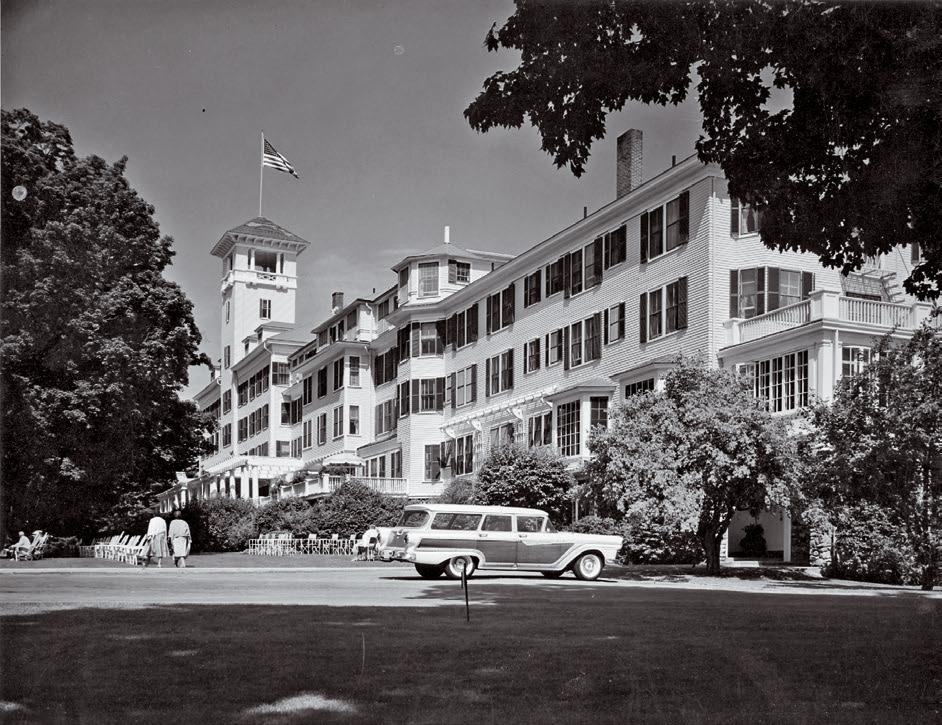

from top : The imposing entrance of the Mountain View Grand; the hotel’s 1865 Wine Cellar, where 6,000-plus bottles double as decor; Krista Diego welcomes guests to the hotel’s small working farm, where wool and fiber are gathered from sheep, llamas, alpacas, goats, and rabbits.


opposite , from top :
midcentury shot
eight additions. As the story goes, on one stormy night in 1865, a Montrealbound stagecoach turned over on a badly rutted road, leaving its passengers with no alternative but to seek shelter at a farmhouse owned by William and Mary Dodge. When the storm cleared in the morning, the stranded travelers marveled at the mountain vistas. Their suggestion that the Dodges open an inn led to four generations of family hotel-keeping, and to the expansions that would bring the Mountain View House, as it was originally known, to its present size by the 1920s.
The photos in the hotel’s History Room amply chronicle those halcyon days. Here’s Warren G. Harding, out on the links, sporting a bow tie. There’s Dwight D. Eisenhower, another of the seven U.S. presidents who sojourned here, grinning his big Ike grin while relaxing with the Dodges. Vintage menus recall a time when no resort stay was successful if you went home without putting on a few pounds. The images show a world that was all suits and sundresses and long afternoons in wicker chairs. There’s also a melancholy reminder of the coda to the Mountain View’s own long afternoon: the auction catalog from the final dispersal of its contents in 1989.
Massachusetts contractor Kevin Craffey was just as surprised as I had been when he discovered the shuttered behemoth in 1998. He met the asking price a scant $1.3 million for the hotel and 1,700 surrounding acres— and four years later reopened the hotel as the Mountain View Grand. He even
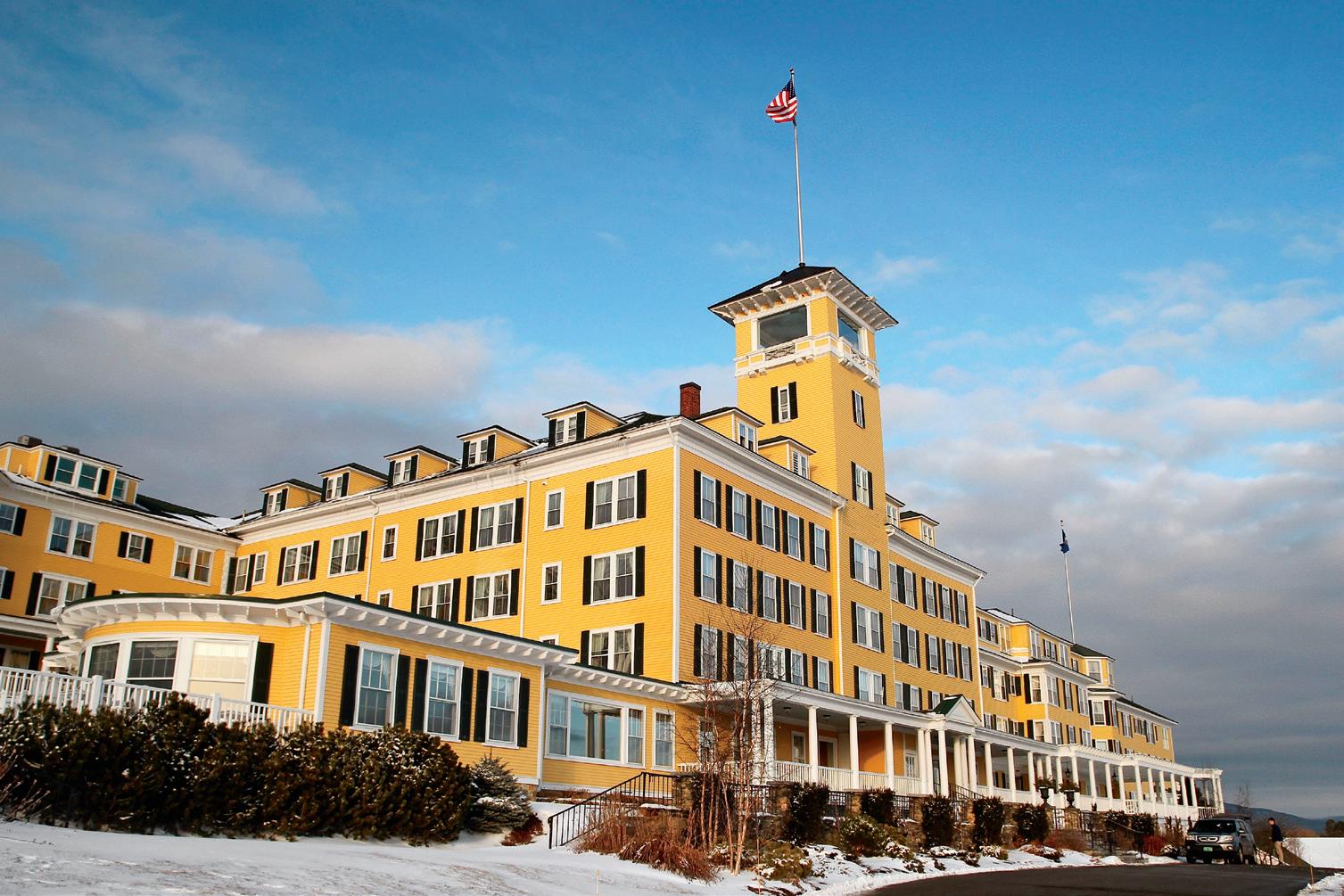

tracked down and bought back many of the furnishings that had been snapped up at the auction (the carved eagle above the reception desk is just one original artifact). Perhaps most remarkable of all, amid renovations that included removing seven layers of wallpaper and replacing almost 1,000 windows, was the restoration of the building’s original cedar clapboards, painted the same sunny yellow as before.
Craffey knew that a White Mountain resort hotel could no longer survive on a May-to-October schedule. The trend among North Country travelers had evolved away from leisurely summer stays of weeks on end, and toward shorter visits packed with activities, as well as new concepts in indoor luxury at any time of year. Along with winterization of the rambling structure came cross-country skiing and snowshoeing; snowmobile touring; an indoor pool; a barn with sheep, goats, llamas, and alpacas for kids to visit … and ax-throwing. “Use both hands and
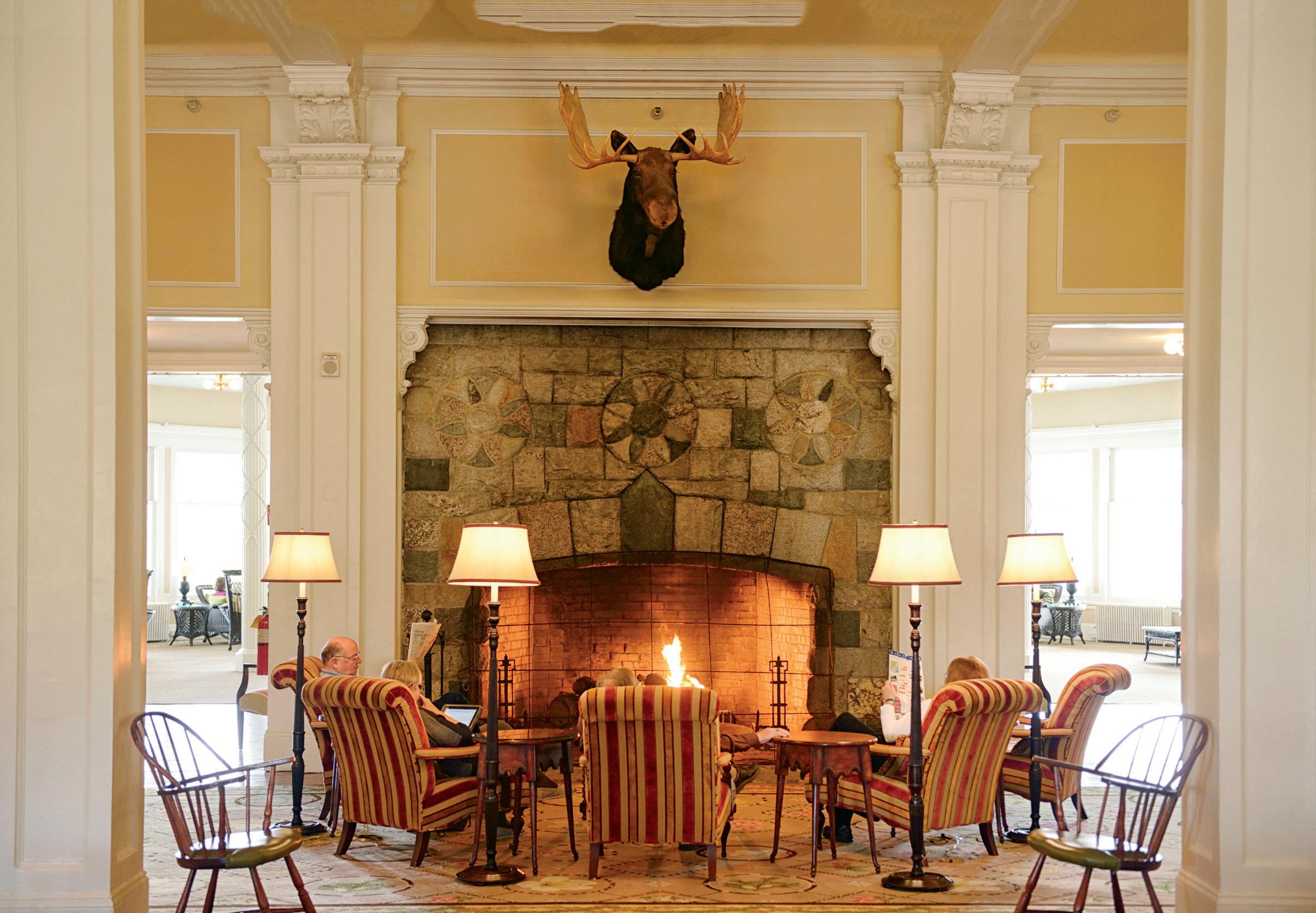
give it a few practice swings, overhead, before you let go,” I was instructed by my coach, Elaine Frenette, of the hotel’s activities staff. I did as I was told, tried to remember Kirk Douglas’s technique in The Vikings , and got my three points.
But since you have to throw axes without gloves, and it was barely above zero that day, I soon opted for one of Elaine’s daily treks around the remaining 400 acres of the property. From the trail, I could look back at the hotel, flags flying from the towers, a yellow ocean liner beached in the snowy mountains.
In one of those towers, one flight up from the spa, I would discover the Mountain View’s ultimate modern indulgence: an infinity tub for two, surrounded by four picture windows. It’s available by reservation, and staff will send up champagne or whatever other potable you desire. Looking from tub to view and back again, I thought of the old-time clientele, who I suppose
would have been no more likely to sip champagne in an infinity tub for two than to throw an ax.
Those folks did like to eat (as the old menus attest), but they never could have imagined the shape the hotel’s premier dining spot would take today. The 1865 Wine Cellar is a subterranean retreat where racks of wine, thousands of bottles, take up every bit of wall space.
“I’ll seat you in the Nook,” the maître d’ said, as he led me to an inner sanctum. I’m told the Nook is a popular spot
for marriage proposals, but it’s also a fine place for a solo diner to read labels between courses, thinking about how little time, how many bottles....
Half an hour down the road from the Mountain View stands the giant of New Hampshire’s grand hotels, the once and perhaps still largest wooden structure in New England: the Omni Mount Washington.

Having grown up in so many stages from its farmhouse roots, the Mountain View still has an air of hominess about it. The Mount Washington, though, was raised to its gargantuan proportions all at once; grandeur, rather than hominess, was its guiding light. I’ve never entered the place, beneath its 23-foot lobby ceilings, without sensing a Gilded Age aura, and though I’ve never circumambulated the entire wraparound veranda, I know that if I did so six times, I’d have walked a mile.
Joseph Stickney was a coal broker when the world ran on the stuff. He owned the Mount Pleasant House, which stood across the road from where the Mount Washington sits. At the turn of the 20th century, he decided to build something on a grander scale.
Architect Charles Alling Gifford designed an immense Y-shaped palazzo in a Mediterranean Revival style, and 250 Italian workmen, brought over specially, finished the hotel in less than two years. It was 1902, and White Mountain resort habitués had never seen anything like it: electric lights everywhere, and a bath for every room.
Summer saw 35 trains a day stopping at the nearest depot. Horsedrawn carriages brought patrons, their copious amounts of luggage, and sometimes even their maids and valets to Mr. Stickney’s hotel, set majestically on a gentle rise before the apron of land that spreads toward Mount Washington.
Like all the old hotels, the big place shut down for the winter. There’s a grandfather clock in the cavernous lobby that once marked that annual cycle: Each year on opening day, in the spring, the first guest would start the pendulum swinging; on closing day, in the fall, the last one out would stop it.
But, with the exception of a twoyear period in the early 1940s, the Mount Washington never closed altogether. One reason for its survival
during the grand hotels’ declining years was its selection as the site of the 1944 United Nations Monetary and Financial Conference, which met that July to hammer out the framework for a postwar world economy. More than 700 delegates from 44 nations, including such luminaries as Britain’s John Maynard Keynes and American treasury secretary Henry Morgenthau Jr., came here and established the International Monetary Fund and the
The lobby’s grandfather clock would mark the annual cycle: On opening day, in the spring, the first guest would start the pendulum; on closing day, in the fall, the last one out would stop it.
predecessor to the World Bank. In a salon off the lobby, there’s an enormous round table at which the conference’s final agreement was signed.
Winter stays at the Mount Washington didn’t begin until 1999, when new owners finished a massive weatherization project and got ready for a turn-of-the-millennium gala. Since then the party has gone on year-round, given the hotel’s proximity to winter sports opportunities. Bretton Woods’ 97 alpine ski trails are just a few min-

utes down the road (like the hotel and nearby Bretton Arms Inn, the ski resort is owned by Omni), and shuttles run between the hotel and the slopes all day.
I left verticals for another day and set out instead for a turnaround part of the 62 miles of cross-country trails here. I didn’t have to head far into this forest maze to spy spectacular scenery. A highlight was the bouldershelved, half-frozen Middle Falls of the Ammonoosuc River, which rises on the slopes of Mount Washington.
Later in the day I followed a different snowy trail, and let someone else do the work—eight someone elses, to be exact. My shuttle dropped me off just as Scrappy, Ruby, and the rest of the Muddy Paws dogsledding team were hitching up. “They’re mostly a mixture of Siberian huskies and hounds,” musher Wes Guerin told me, “and many of the ones we use are rescues.” Like other sled dogs I’ve met, they were eager to go—but unlike many, they were as ready for petting
MORTON LARSEN/ALAMY STOCK PHOTO (PORCH); LIBRARY OF CONGRESS, PRINTS AND PHOTOGRAPHS DIVISION (ARCHIVAL) Surrounded by some 800,000 acres of national forest, the Mount Washington isn’t short on vistas—but the ones enjoyed while kicking back on the veranda might be the best. top right : A view of the Mount Washington c. 1905.and ear rubs as they were for business. As we took off, I asked Wes how he decided which dogs had the smarts and mettle to work in the lead. It’s mostly, he said, a matter of attitude.
I had a table in the main dining room on a not-too-busy night in the aftermath of a holiday weekend, and as I sipped a glass of wine between courses, executive chef Jacky Francois stopped by. He talked about how he had set the culinary tone for the hotel’s three restaurants; for this big formal room (jackets and ties no longer required, but, mercifully, no baseball caps), he emphasizes New England’s bounty. A perfectly done pan-roasted cod loin underscored his remarks. Chef Jacky used to teach at the New England Culinary Institute, and part of his job here is to train young chefs. When asked how he could tell which ones had potential, he said it was all in their attitude. Having heard a similar sentiment earlier that day, I realized that a prospective lead dog and a good trainee chef have something important in common.
On my last afternoon at the Mount Washington, I visited the spa for a hot-stone massage, and as the warmth turned my back muscles to butter, it occurred to me that if the delegates

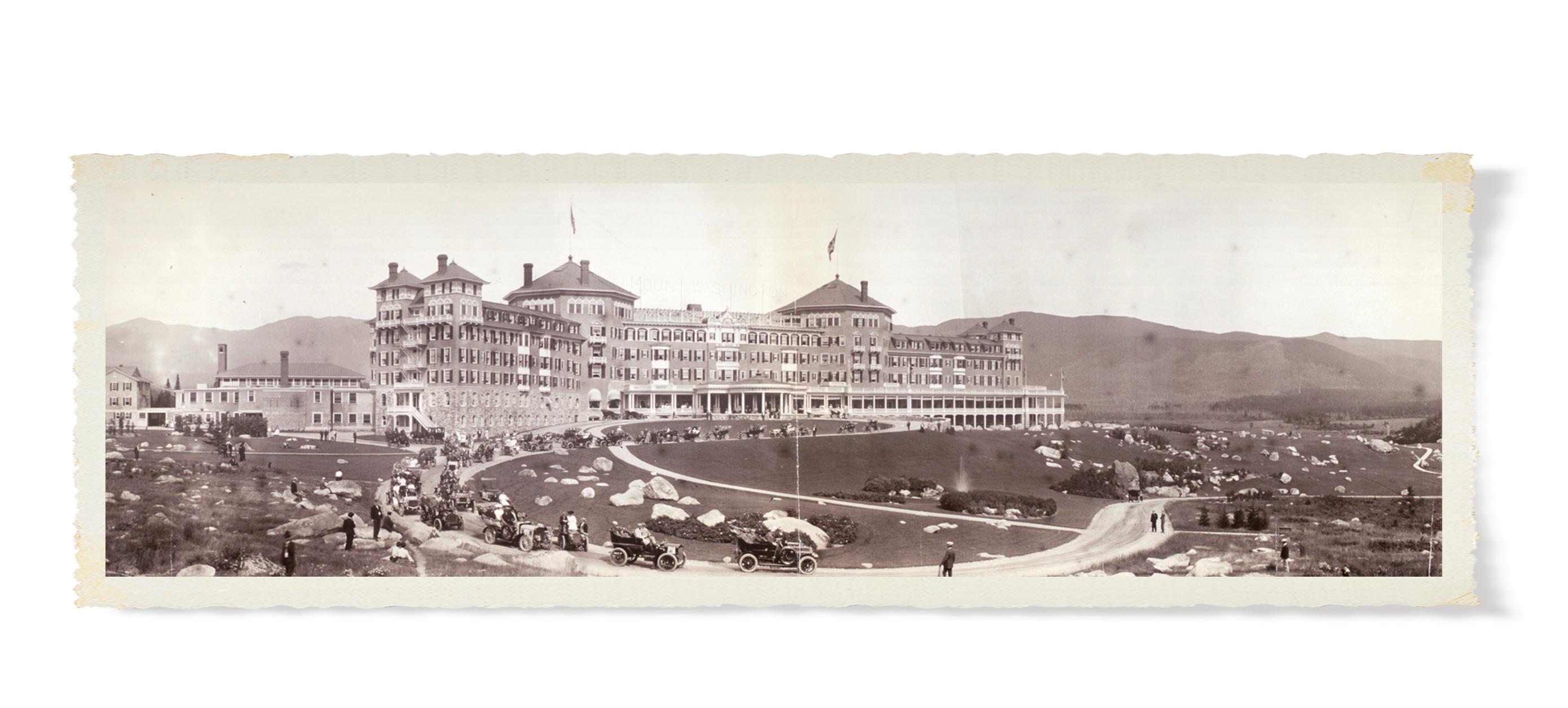
I’ve never entered the Mount Washington without sensing a Gilded Age aura, and though I’ve never walked the entire wraparound veranda, I know that if I did so six times, I’d have gone a mile.
right : Opened at the Wentworth in 2013, Salt—which includes a chef’s bar, lounge, and dining room—caters to modern palates.
left, from top : At the heart of the Wentworth is the original 1874 hotel building, topped with mansard-roofed towers; Russian emissaries and journalists at the hotel for the 1905 peace talks that ended the RussoJapanese War.
to the 1944 conference had each been able to spend an hour with my massage therapist, Pam, the world might have gotten a truly superb monetary system.
If the Mountain View Grand and the Mount Washington look like ocean liners beached among the peaks, New Hampshire’s third great Gilded Age survivor, Wentworth by the Sea, resembles one at its proper berth. Standing at the southern tip of New Castle Island, the Wentworth looks
over the water in nearly every direction, and in winter it bathes in a Winslow Homer light.
Like the Mountain View, the Wentworth withstood years of dereliction. Built in 1874, it suffered a typical midcentury decline. After closing in 1982, it dodged a date with the wrecking ball, reopening in 2003 after a local preservation campaign—and a role playing itself as a spooky abandoned hotel in the 1999 Annette Bening film In Dreams. And like the Mount Wash
ington, the Wentworth also hosted a historic conference, having been chosen by President Theodore Roosevelt as the site of the 1905 peace talks that ended the Russo Japanese War and earned him a Nobel Peace Prize.

I checked in to the Wentworth on a bright, cold afternoon, when a cheery fire burned in the lobby hearth and Annette Bening couldn’t have found a spooky corner in the place. In the cozy barrestaurant Salt, I relaxed over drinks with Stephanie Seacord, a local historian who was active in the 2005 centennial commemoration of the conference. “Roosevelt told the two sides they could negotiate face to face, and he wanted a quiet place,” she told me. “And as he had been assistant secretary of the navy, the closeness of the Portsmouth Naval Shipyard appealed to him. That’s where the treaty was signed, although the delegates stayed here at the hotel. Another advantage was that Portsmouth’s émigré Jewish shopkeepers could speak Russian.”
Unlike the two upcountry hotels, the Wentworth occupies a mere four acres of its original 400 acre expanse. No matter: New Castle is only a 15minute drive from Portsmouth and its lively, compact downtown.
Just after crossing into Portsmouth, I came upon a jolly winter
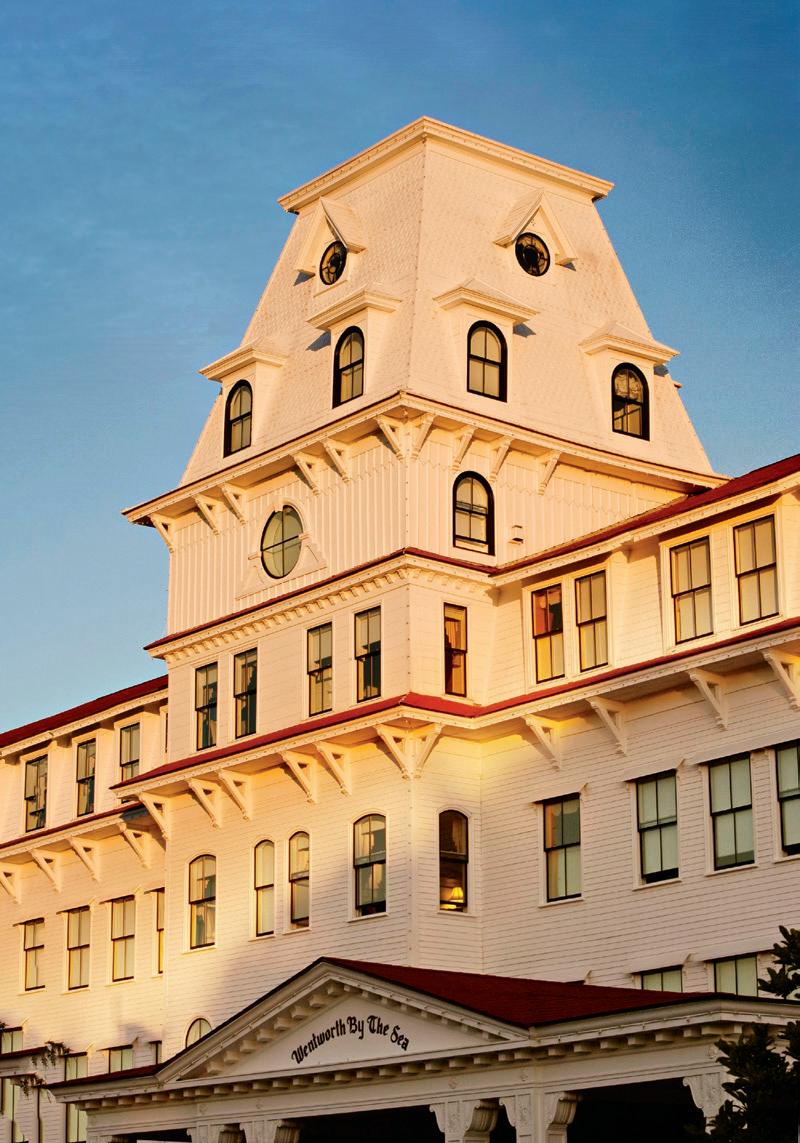
The Wentworth looks over the water in nearly every direction, and in winter it bathes in a Winslow Homer light.
scene. The painter I thought of now w as Bruegel, rather than Homer: Here at Strawbery Banke, a preserved neighborhood comprising three centuries of period homes, children and adults were ice skating. I’d been on skates all of twice in the past 30 years, but when I saw there were rentals available, I couldn’t resist joining the fun … and after three circuits round the rink, I even let go of the rail.
Relieved of the need to dutifully visit Portsmouth’s slew of historic houses (none of them stay open in winter), I poked around the city center using busy Market Square as my orientation point: Two upended cannons, captured by Commodore Oliver Hazard Perry at the Battle of Lake Erie, flank the entrance to the Portsmouth Athenaeum and make a sort of milepost zero. Around the corner I found a bookstore, RiverRun, that sells vintage typewriters. Down at the end of Deer Street, I was confronted by a stark black wall that turned out to be the massive flank of a freighter, the Orient Dispatch out of Limassol,
Cyprus, just nestled into its berth by a couple of the doughty tugs docked nearby—Portsmouth is a seafaring town still. A maritime feeling even pervades the town’s favorite music venue, the Dolphin Striker, a lowceilinged old cellar with its entrance on a dockside alley. It’s the kind of place where you could picture a knot of salty dogs off a windjammer tumbling in, thirsty for grog.
Passing some half dozen coffeeh ouses—only one of which bore the name of Ahab’s first mate—I decided on lunch at the Portsmouth Brewery, where I had a richly satisfying bowl of curried mussels and a winter-worthy pint of brown ale. Nothing more than mussels, though, because tonight I had a reservation for one of the signature events of the Wentworth’s winter season. Every year, for a month that straddles January and February, the hotel holds its Winter Wine Festival. The weekly highlight is the Grand Vintner’s Dinner, a four-course affair in
which each course is paired with a carefully chosen wine.

“Actually, the dishes are selected to go with the wines, rather than the other way around,” explained the evening’s host, winery ambassador Cathy Harrison. Her team had chosen well: A cabernet from Alexander Valley, California, matched not only a hanger steak but also its cedar-planked parsnip accompaniment.
After dessert—yes, paired with a wine—I toddled back up to my corner room, where the turndown maid had closed the blinds on the oversize windows. I opened them again. I wanted to see the first of that sea light, that Winslow Homer light, when I woke up at the Wentworth in the morning.
Mountain View Grand, 855-837-2100; mountainviewgrand.com. Omni Mount Washington, 603-278-1000; omnihotels.com/hotels/bretton-woodsmount-washington. Wentworth by the Sea, 603-422-7322; wentworth.com.
JOEL WOODS HAS SPENT TWO DECADES AT SEA. HIS EYE FOR THE MOMENT REVEALS A WORLD THAT FEW EVER SEE, AND NONE FORGET.
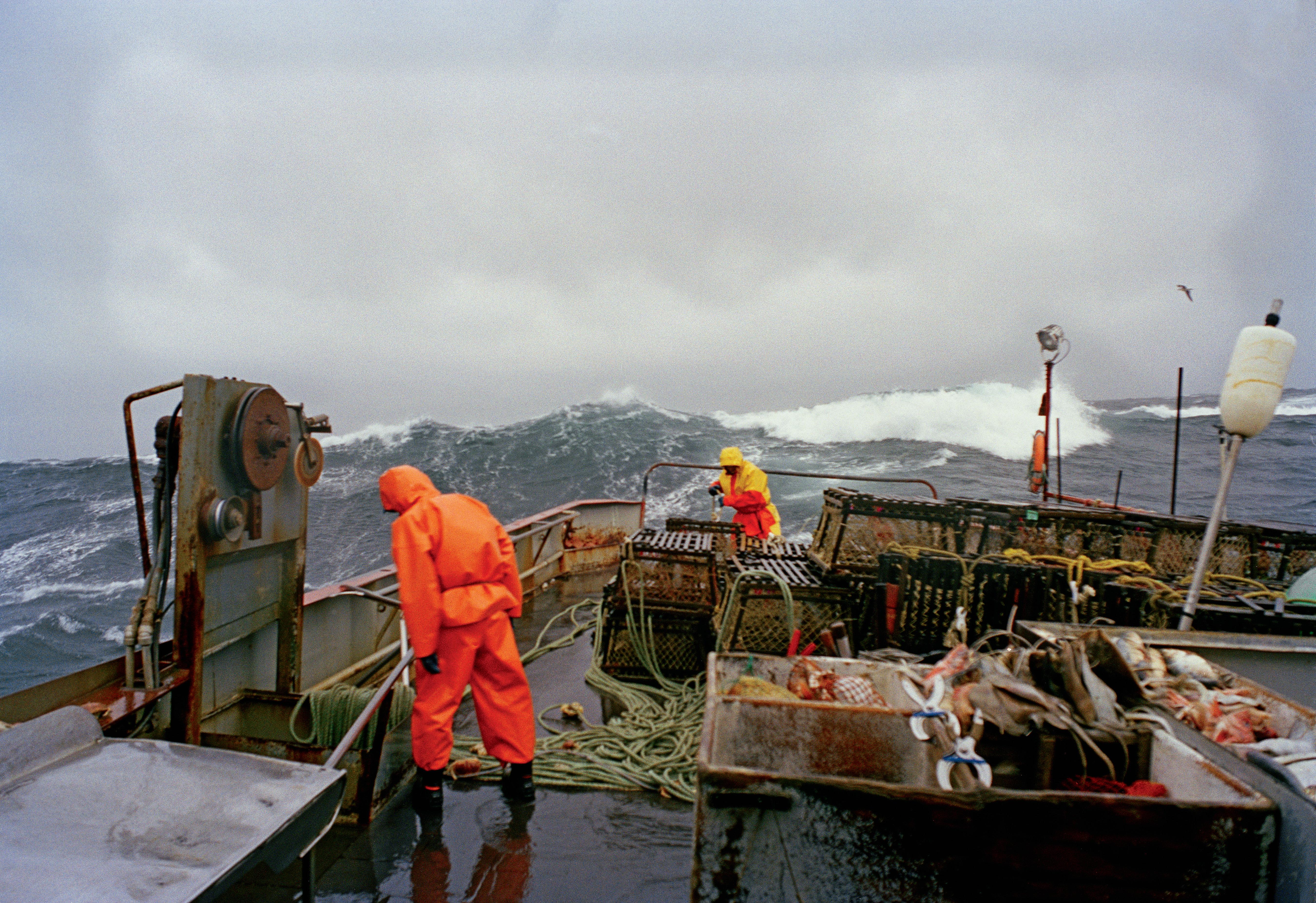
 Woods snapped this stormy scene of lobstermen out of Portsmouth, New Hampshire, more than 15 years ago. (Note the wooden lobster traps.)
Woods snapped this stormy scene of lobstermen out of Portsmouth, New Hampshire, more than 15 years ago. (Note the wooden lobster traps.)
aybe the photos you see on these pages began for Joel Woods when he first watched a lobsterman coil rope—an action performed so often, for so many years, that it was as natural as breathing. Woods saw the expertise that had been handed down through generations, and the raw beauty of boat, sea, and purpose merged in the act of coiling rope attached to a lobster trap. With a disposable camera, Woods snapped a photo. “I was seeing the fisherman’s world with brand-new eyes,” he says. “Work they have done for years—and they have stopped looking at it.” He saw the colors of fish, how nets dance on water, thousands of sunrises and sunsets, waves rising terrifyingly high 150 miles out to sea. With a camera, he found a way to remember it all.
Or maybe this melding of brutal work with fragile art began long before, when Woods was a teenager, one who knew the inside of detention centers and courtrooms, and the aftermath of bad decisions. What he sought was a life as unpolished as he felt. “Fishing was for me the biggest, baddest, the most hard-core thing I could do. That’s why I was drawn to it. I wanted to prove myself.”
left : The ocean seems to boil around a lobster trap as it’s dropped overboard. “I had to learn how to be quick,” Woods says. “The moments are only there for a few seconds.”
opposite : Woods used the setting sun and deck lights to capture this portrait of Sarah Waterman, daughter of a multigenerational Maine fishing family. She was on the Defender II , captained by a member of another fishing family dynasty, Troy Ames.
That was over 20 years ago. Woods has since worked out of every major New England fishing port—Gloucester, New Bedford, Portsmouth, Portland—and hauled lobster traps up and down the Maine coast. “I’ve been trawling and gillnetting and scalloping, slime eeling, sea urchining,” he says. “Practically anything you can do in New England, I’ve done it.”
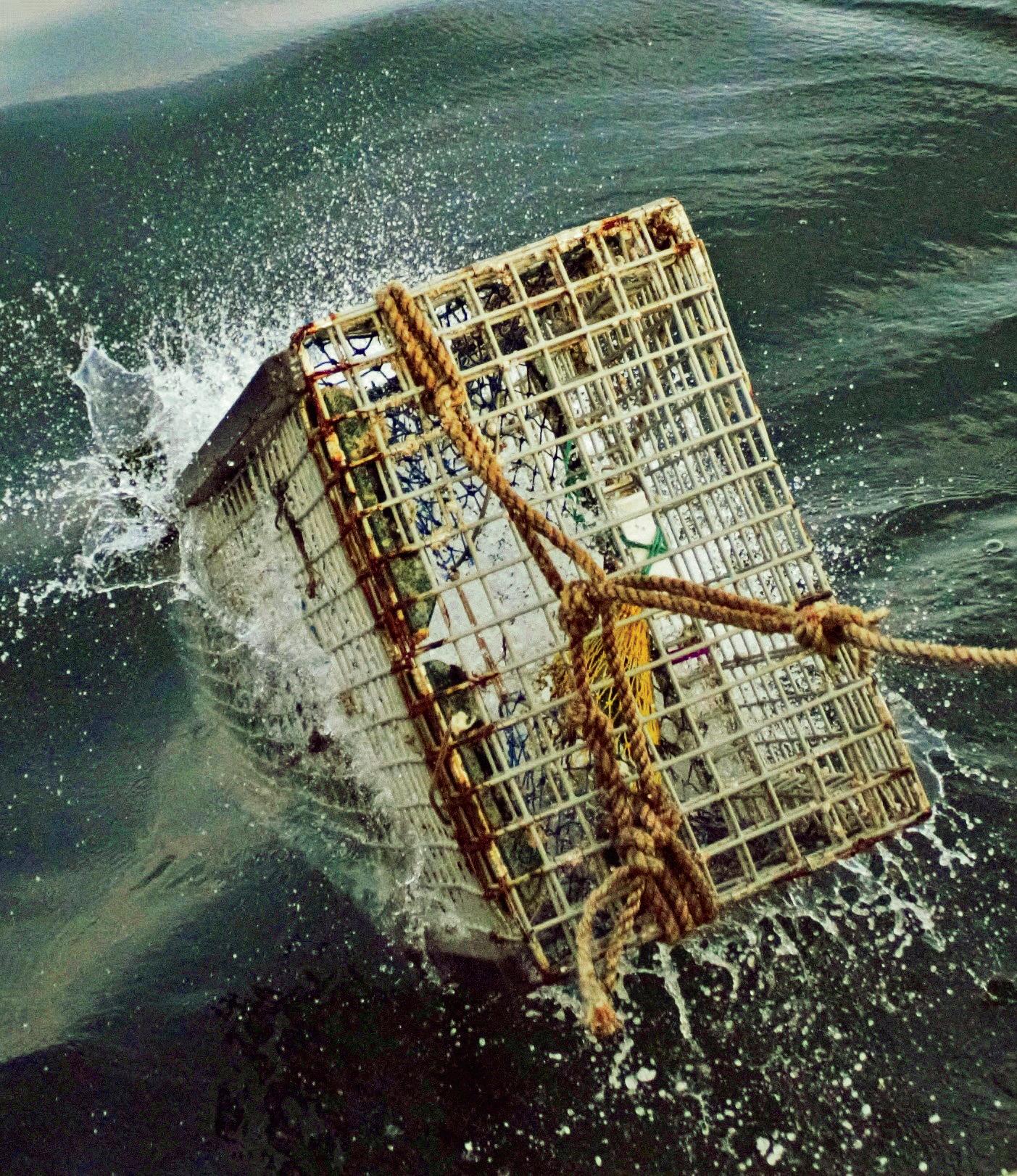
But with his photos, he also was catching moments of startling beauty in a world where storms pummeled seas and boats, and where the men and (few) women who made a living in that world had tough hides and tougher personalities. When he showed the pictures to his fellow fishermen, they too saw the wonder. Today his boatmates will shout, “Joel, look over here!” even as his hands are plunged into trays of fish, covered with slime and blood.
He goes through as many as 10 cameras a year. “The shortest time I had a camera before it was destroyed was one week. If I had a fear of destroying a camera, I wouldn’t get a shot.”
What you see on these pages are images that show not only what Joel Woods has witnessed, but also what he has come to know about himself: that he can be both fisherman and artist. “If it wasn’t for photography,” he says, “I wouldn’t be the human being I am.” —M.A.
“I had no idea that photography could teach me to see beauty in the smallest of things, how it could awaken in me something I didn’t even know existed.”

While working on the Western Venture, Woods anticipated the feeding frenzy of birds that began as the nearby herring trawler Endeavour brought fish on deck. “The most difficult thing for me is to get images that are new and fresh and vibrant from something I’ve done for thousands of days.”



 When the lobster boat No Worries broke down on Penobscot Bay, Adam Roberson raised a torch in hopes of bringing help.
When the lobster boat No Worries broke down on Penobscot Bay, Adam Roberson raised a torch in hopes of bringing help.
“I have taught myself to capture the world as I see it: in fleeting moments.”
top : These fishermen on the herring trawler Osprey, out of Gloucester, typify the wariness that some feel when Woods first takes their photo. But he says he’s never gotten a bad response. “I always show them the image, and they’ll go, ‘Great shot.’ It’s just normal to the fishermen now.”


bottom , from left : “It’s always good to have a gun on a boat,” Woods says of this photo; a sign posted on the remote Maine island of Matinicus, where residents keep close watch on who fishes its waters; a one-in-a-million shot of a mackerel snagged in the rope of a lobster trap buoy.


“When you’re 150-odd miles offshore, where 24 hours on deck is not uncommon, having the time to create a ham sandwich is difficult; having the time to create something expressive is nearly impossible.”

Woods’s memory of taking this portrait of Jennifer Fisk, a former girlfriend who used to work alongside him: “Jennifer was standing on the boat. It was windy and rough. I said, ‘Don’t move’—and I got the shot.”

above : Dawn was just breaking as Noah Ames rowed supplies and halibut fishing gear out to the No Worries, waiting at a mooring in Tenants Harbor, Maine.


right : Woods and Noah Ames still joke about the decision to go out from Matinicus the day this photo was shot, when the No Worries had to race ahead of a fierce southeast wind to keep from being swamped.
“We’ve had better ideas.”
I’ve been overboard twice in winter. I said to myself, ‘Just relax, they’ll turn around and get me.’”

“In 2014 alone, I personally knew three men who died....

opposite : On another day of rough weather aboard the No Worries, Woods loaned Stevie Ames the life jacket he wears in this picture, working steadily as water comes pouring over the wheelhouse.
right : “I couldn’t believe I got this,” Woods says of a gannet and a sea gull battling over a fish dinner.

“It’s a hard life I have chosen, but it is in fact one that has chosen me.”
While fishing on Georges Bank aboard the Dana Conant , Woods spotted once again a perfect combination of sunset and deck lighting. Just joking around with crew member Brian Neal, he ended up with this dramatic tableau.
To see more of Joel Woods’s work, check out our slide show at newengland.com/joelwoods or go to joelwoods.net.
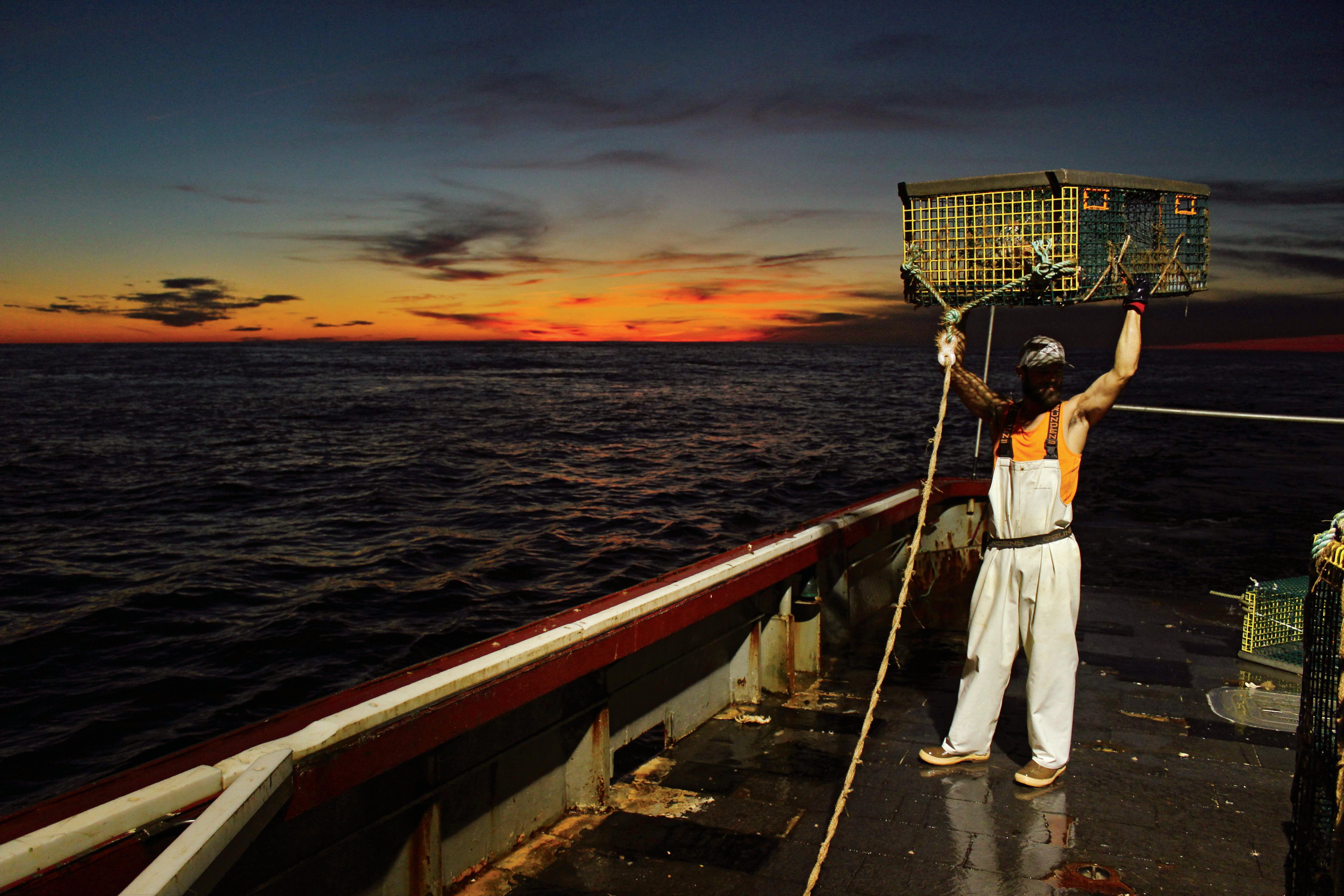
“I hope my body holds out. I suppose one day I could be a photographer, if that’s what I wanted— but what do I have if I’m not a fisherman?”

 BY JUSTIN SHATWELL
BY JUSTIN SHATWELL
eorge Washington is a terrible person to take a road trip with. The conversation is stale, to say the least, and when he does speak, he tends to be a little judgmental. It’s like driving cross-country with a particularly dour father figure, which is exactly the vibe he’s going for.
Washington may be dead and buried, but his words live on. His fourvolume diary is available at most public libraries. If you stack the whole thing on a desk, it resembles a foot-high tower of burnt toast and reads about the same. It’s mostly a day-to-day catalog of where he had dinner. But for history-loving Yankees, there’s one delectable bit near the end. Between October 15 and November 13, 1789, the same year he was first inaugurated, Washington embarked on a rambling tour of New England. His diary from this stretch forms an irresistible travelogue of a New England that has long since faded into history. I couldn’t help but wonder if there was something of it left, though. If I looked hard enough, could I find some trace of his footprints and walk in them? So, with his words as my guide, I hop into my car and head out to glimpse New England through the sage, hypercritical, and sometimes downright curmudgeonly eyes of George Washington.
“The Road between these two places is not on the whole bad (for this country)….”
—G.W., October 17, between Fairfield and Stratford, Connecticut
Washington did not sleep at the Brookfield Inn. Paul and Melissa Puliafico, the current owners, make that quite clear. If he had, though, he likely would have had something to say about it.
Washington took a southerly route through Connecticut, passing through Stratford and New Haven before hooking north and visiting Hartford and Springfield. Along the way, he sampled the industry of the countryside and recorded brief, blunt opinions of its quality. In Stamford, he found the apples to be “rather above mediocrity.” In Hartford, the wool was “not of the first quality, yet.” In Wallingford, he thought the corn “ but ordinary,” and in Rye, New York, the hogs were “large, but rather long legged,” whatever that means.
He gave the same treatment to the region’s accommodations. Fearing that if he stayed at
truth from legend proves tricky when you follow in George Washington’s New England footsteps.
private homes, his presence might be construed as an endorsement in some local political squabble, he opted to sleep only at public taverns (the Best Westerns of the day). And like everything else, he rated them. The Widow Coolidge’s in Watertown, Massachusetts, was “very indifferent.” At the Taft Tavern in Uxbridge, Massachusetts, “the entertainment was not very inviting.”
These critiques seem especially harsh given the circumstances. Washington didn’t plan his stops far in advance. Innkeepers were given little warning—so little, in fact, that when his party reached Brookfield, Massachusetts, on October 22, Mrs. Bannister, the proprietor, turned them away. As the legend goes, she had a migraine and refused to open the door. It was only later that she discovered who had been on the other side.
Today, the Brookfield Inn is a rambling affair, with additions built upon additions. Paul and Melissa have tied the place together with a colonial decor that is homey, if not entirely historic. They bought the property 30 years ago and quickly discovered they’d never be able to afford a full restoration. So they focused instead on returning to the building its dignity. “The room with the fireplace was neon green,” Paul sneers, gesturing to the lounge. “And it had a Formica bar!”
After striking out at the Brookfield Inn, Washington had pushed on to Spencer and stayed at Jenk’s Tavern (“a pretty good Tavern” ). Melissa hands me “a snarky little poem” that someone in Spencer had written on the trip’s centennial. “We thank old lady Bannister/and will prize her memory,” the poem reads. “For letting our first President/try Spencer’s hospitality.”
The joke was on them, though: Jenk’s Tavern burned down years ago, as have many of the establishments Washington visited. The rest have either passed into private hands or become museums. It seems ludicrous, but there’s not a single inn in New England still operating that can claim, “George Washington slept here.” The Brookfield Inn is the closest. It proudly advertises, “George Washington almost slept here.”
The inn had subsequent brushes with presidential history. “Calvin Coolidge stayed here a number of times,” Melissa says. “We have a picture of FDR coming out the front door.” But it’s the Washington story that puts them on the map. They say a surprising number of guests ask about it.
The pair lead me to the oldest part of the inn, just two rooms wide. This, they tell me, is where George Washington would have slept if he had, in fact, slept here. Running down the length of the space is an original chestnut beam, which Paul is visibly proud of. He removed two ceilings to expose it, he boasts. “It’s hand-hewn. There’s no saw marks on it anywhere.”
One sturdy piece of history holding everything up. It’s a perfect metaphor for Washington, or at least how we like to remember him. In truth, our country has built on a thousand more annexes than this inn. The structural weight of it is borne across the shoulders of countless Americans— some celebrated, others forgotten. But because Washington went first, because he allowed his back to be the original foundation, we cherish that sacrifice more. Enough so that, 228 years later, history-minded tourists still knock on the door to see the place where Washington briefly considered sleeping, but didn’t.
“Does anyone come to see where Calvin Coolidge slept?” I ask Paul and Melissa.
“No,” they answer in unison.
“Finding this ceremony was not to be avoided, though I had made every effort to do it, I named the hour ... for my entrance in Boston.”
—G.W., October 23, Worcester, Massachusetts
Katherine Chaison lifts the lid of the archival box and reveals her relic: a moth-eaten scrap of fabric dyed a particularly unpleasant shade of yellow. “If you just found this in a drawer, you’d probably toss it away,” she says.
Chaison is young, just seven years out of school, with long brown hair she
Brookfield Inn owners
Paul and Melissa Puliafico show off the room where Washington likely would have slept if he hadn’t, as the story goes, been turned away by an innkeeper with a migraine.
INSET : Among the Washington relics at the Ipswich Museum is this ancient bit of drapery from a bed he once slept in. Curator Katherine Chaison says the fact that it was once someone’s treasured keepsake is no different from “our obsession with celebrities today.”
There’s not a single inn in New England still operating that can claim, “George Washington slept here.” The Brookfield Inn is the closest. It proudly advertises, “George Washington almost slept here.”
wears over her shoulder. As curator of the Ipswich Museum in Ipswich, Massachusetts, she has inherited the question that has bedeviled generations of historians before her: What do you do with all these Washington mementos?


We think we know what fame is today, but we don’t. No American is likely to ever achieve the pinnacle of adoration Washington enjoyed during the first years of his presidency. On his tour, he was met by crowds at every stop. He couldn’t pass a village without the selectmen delivering an oration in his honor or firing off a 13-cannon salute. Judging from his diary, he didn’t enjoy it much. There are numerous references to his asking the local elders to tone down the hoopla a notch. They rarely complied.
The pomp and circumstance reached a head in Boston, where he was greeted with songs, poems, and a parade of the city’s workers. A decorative arch erected for the occasion bore the inscription, “To the Man who unites all hearts.” The weather was
cold and damp throughout the festivities, but no one minded. The epidemic of sniffles that gripped Boston the next day was lovingly named the Washington Influenza.
At the time, the idea of a king—one perfect man standing above it all— was still hardwired into the American psyche. Whether Washington wanted it or not, following his miraculous victory in the Revolution, he filled that role. For a time, he could do no wrong. His life became surreal. A gulf of enthusiasm opened up between him and the rest of the world. When he rode through a village, it was just another day for him. For those who saw him, it was the day they’d never forget. As a result, Washington developed an unintentional habit of dropping relics in his wake. Every cup that touched his lips
had the potential to be revered for generations as a holy grail. Museums are lousy with such relics. I decide to spend a day on the Seacoast digging a few out of storage.
At the John Paul Jones House in Portsmouth, the curators show me a white woolen bedspread that Washington is believed to have slept under. Passing my hand over the still-soft weave, I ask how sure they are of the story. Did he truly touch this? They say they can place it in the home where he stayed at the time, but whether he actually used it is a matter of faith and legend. No one is swabbing these things for DNA, after all.
Across town at St. Joseph’s Episcopal Church, the history is decidedly iffier. On the altar sit two regal red upholstered chairs. “One is a replica,”
Sarah Hamill, the church’s archivist, warns me. “The other is the chair we hope George Washington sat in.”
The identical chairs were the seats of honor, and George Washington is known to have sat in one of them when he attended Sunday service. The problem is, no one noted which. In 1806, the original church caught fire and the parishioners only had time to pull one chair from the inferno. Was it the one Washington blessed with his bottom? Flip a coin.
In Ipswich, the yellow scrap is a fragment of a drap ery from a bed Washington slept in. Years after the trip, the women of the town chopped it up and each took a piece. As with any other relic, it’s difficult to confirm the scrap’s authenticity—and even if it’s real, Chaison points out, there’s no guarantee he touched this part. “It could have been the canopy above everything. But there’s something about his presence

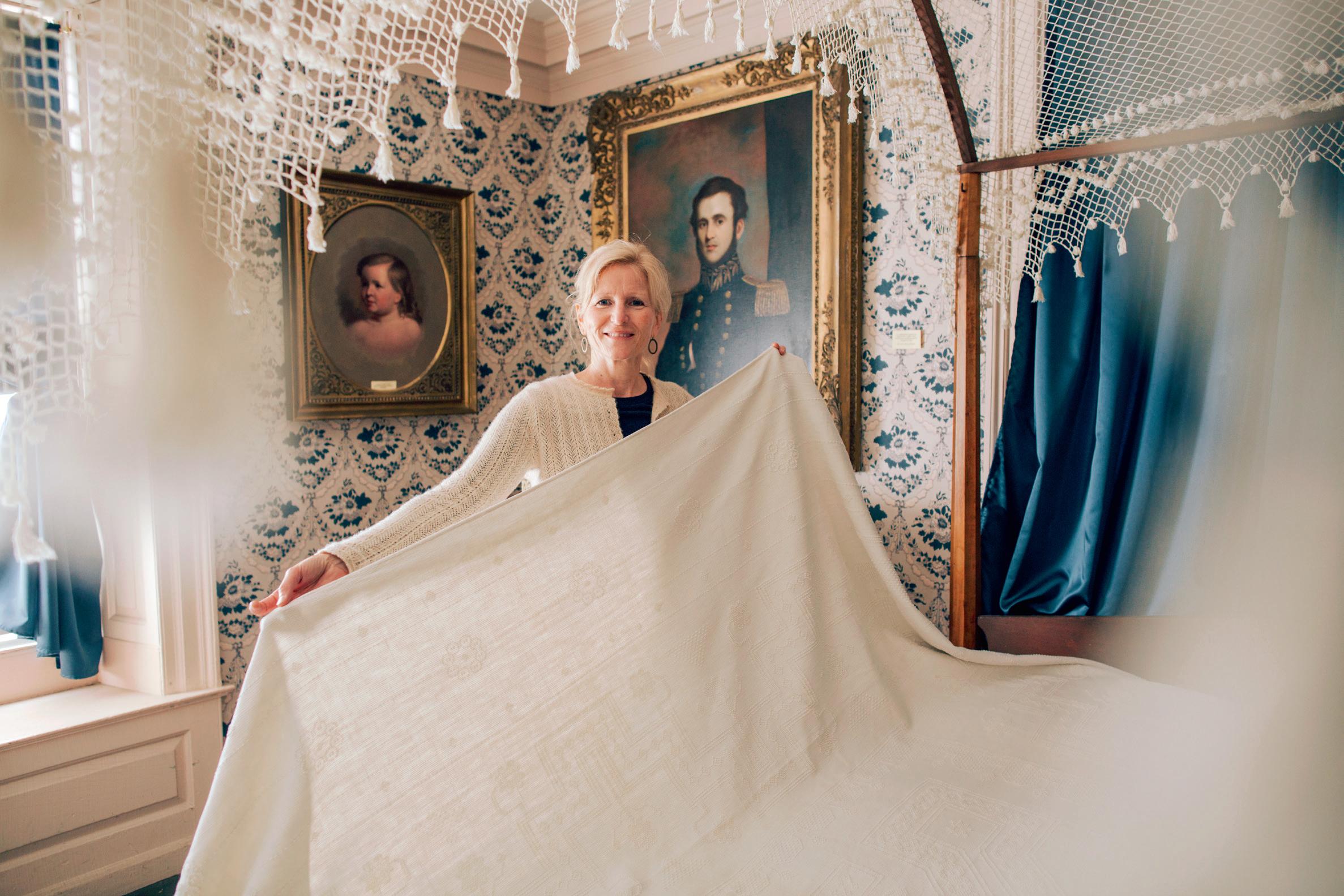
that was enough to make this piece worth saving.”
She says mementos like this can be hard to interpret. The scrap says nothing about Washington’s life—it didn’t even belong to him—but it says volumes about the women who saved it. “It’s no different than the paparazzi or our obsession with celebrities today,” she says. “I think we all try to make meaning of our place in the world, and that’s what they were doing.” George Washington was the most important man on the planet. Just being close to him gave their lives a deeper sense of purpose.
Historians like Joseph Ellis have argued that this is why the other founding fathers recruited Washington to be the first president (his preference was to stay retired). The newly ratified Constitution was unpopular and people were not yet sold on the idea of being one unified country
rather than 13 separate states. Washington’s advisers convinced him that if he lent his face and his fame to the government, he could harbor it through the fragile early years.
In that light, Washington’s laborious slog through New England makes more sense. It was a publicity tour for the nation itself. If he could turn a blanket into a golden fleece just by lying under it, perhaps he could get some of his star power to rub off on the idea of being American.
“The roads in every part of the State are amazingly crooked ... and the directions you receive from the people equally blind and ignorant.”
—G.W., November 6, Uxbridge, Massachusetts
After a few days in Portsmouth, George Washington was ready to go home. His 57-year-old body had endured three weeks of travel by horse
and carriage. He’d suffered enough for his country.
The strain of the trip is evident in his diary. His entries become shorter, his reviews more biting. He hits rock bottom after getting stuck in the hamlet of Ashford for a day because it was illegal to travel on Sunday in Connecticut.
“...my horses, after passing through such intolerable roads, wanting rest, I stayed at Perkins’ tavern (which, by the bye, is not a good one,) all day—and a meeting-house being within few rods of the door, I attended morning and evening service, and heard very lame discourses from a Mr. Pond.”
When we call Washington the father of the nation, it conjures an image of some unimpeachable giant, but at moments like this we catch a glimpse of a different kind of father figure. Here is the father who lovingly endures. Here is the dad who sits through his child’s middle-school band recital, loathing every screeching second of it, but who still smiles and says “Good job” at the end, because he wants to raise us right.
I, too, have been on the road too long. I head home, making one final
watching a soccer match on TV. Cindy Larson, the owner, meets me at the door and guides me through the dining room to a small sitting area at the far end. This, she says, is where he ate.
The rest of the building sports brand-new wood floors, but not here. During the renovations, Larson has been careful not to alter this room much, forbidding the builders to cut into any of the woodwork. “We’re trying to preserve as much as we can,” she says. “You should have seen them having to re-snake electrical wires without taking the wainscoting off.”
There isn’t a lot here, just two chairs facing a fireplace with a portrait of Washington above the mantel. On one wall hangs a shadowbox displaying all the different kinds of nails they found while removing the floors. There are modern staples and wire nails; triangular, machine-cut pieces from the 1800s; and a few handwrought nails that likely were here when Washington was. Seeing them all lined up, you can sense the long road of history separating him from now.

His legacy has taken some hits along that journey. He’s still revered, for sure, but historians today are just as apt to talk about his failures (his prodigious use of slave labor chief among them) as they are his successes. Even during his lifetime, he saw his star fade. By his second term, partisan newspaper editorials were depicting him as senile or, worse, a traitor to the Revolution.
Washington took it in stride. In truth, he may have been relieved to be humanized a bit; he never seemed comfortable sitting atop Olympus. If he were alive today to see how we remember him—the hallowed bedrooms, the sacred blankets, the mountain sculpted in his likeness—I’m sure he’d blush.
Washington never wanted as much as he was offered. Not taking it was his greatest gift to the country. At the end of the Revolution, some of his officers devised a coup to make him dictator; he suppressed it. At the end of his second term, reelection was assured; he walked away instead. Washington didn’t do the things he did because he wanted to be our first president. He just wanted to make sure he would be our last king.
We think we know what fame is today, but we don’t. No American is likely to ever achieve the pinnacle of adoration that Washington did.OPPOSITE , TOP : There’s no doubt that naval hero John Paul Jones stayed at his namesake house in Portsmouth. Less certain is whether his commander in chief ever slept under this coverlet, displayed by curatorial associate Lainey McCartney.


rowing up, I used to beg my grandmother— Mama Rose—for stories. This was in the 1960s and ’70s, when I was a mostly lonely kid living in a dilapidated mill town in Rhode Island. Truth be told, I was odd and didn’t know how to make friends, how to be a friend. Books— stories—kept me company until I figured out how to act socially. My parents and my older brother, Skip, and I had spent three glorious years living in Arlington, Virginia, beginning when I was 2 years old. For Skip and me, life in the Shirley Park Apartments was a whirlwind of playing outside in the woods that bordered the buildings, spying on our parents’ cocktail parties, and spending long weekend afternoons in the Smithsonian if the weather was poor, or picnicking in the Blue Ridge Mountains if it was good. Parents smoked cigarettes and wondered aloud about Jack and Jackie Kennedy; we kids spilled in and out of one another’s apartments clutching Barbie dolls and mud pies.
This idyllic life—and it truly was idyllic; on this we four always agreed—came to an end when my father, who worked for Admiral Rickover at the Pentagon, got transferred to Guantánamo Bay in Cuba, a post that did not allow families. So we packed up our apartment and moved in with Mama Rose, into the house her mother had bought when she emigrated from Italy at the end of the 19th century, where my mother and her nine siblings were born in what was still Mama Rose’s bedroom.
The house on Fiume Street looked like all of the other Italian immigrant houses in the neighborhood, which is to say there were saints everywhere, staring out at me with soulful or pained eyes. Saint Christopher
carrying a baby Jesus. Saint Anthony in his brown monk’s robes. The Virgin
ing Top Cat and Romper Room sitting in front of our TV eating sugary cereal.
Mornings, after Mama Rose called and placed her bets with her bookie,
I’m not sure at what point I realized that Mama Rose had her own stories to tell, but during those feverish days on the turquoise sofa, I began to pelt her with questions.
a fork. I couldn’t make sense of this world, of the way everyone lapsed into Italian, leaving me behind. Or the way they dropped to their knees in front of those statues and muttered prayers that included pounding their chests three times and kissing the saints’ feet.
With my father off in Cuba and my mother at a job in the candy factory, the one constant in my new world was television. A large Zenith dominated one corner of the living room. Back in Virginia, I’d spent happy mornings watch-

my 4-foot-11, red-haired grandmother. Worse than those nights, though, was daytime television. Of course, usually I was at school. But in second grade I began suffering from severe tonsillitis, which plagued me until the end of fourth grade, when I had finally had my tonsils removed. In those years I missed as many as 60 days of school per grade. Feverish and with my throat raw, I lay on the turquoise Danish couch my parents had brought with us from Virginia, and watched television.
As the World Turns and ended at 3 with Another World . Then she would heave herself up with loud groans and return to the kitchen to finish making supper, which we ate at 4:30 sharp. Until then, my swollen tonsils and I were prisoners to the hijinks of Lisa Hughes and an ever-changing roster of villains and— as Mama Rose used to shout at the television— putanas.
What neither Mama Rose nor I realized at the time—or ever in her lifetime—was that she and I shared a love
for stories, for plot twists and dramatic climaxes, for a large cast of characters faced with moral dilemmas. I satisfied my love of stories with books. But Mama Rose, who had come to this country when she was 2 years old and worked briefly in the textile mills until she was 8 or 9 (finally quitting because of her weak heart), never learned to read. She could sign her name, writing slowly and carefully, like a young child. But she could not write or read anything else.
Our town did not have a library during the years of my tonsillitis, or I would have been able to bury my head in a book as I lay captive to Mama Rose and her soap operas. At home, we didn’t have books. We had Reader’s Digest every month, and I would build my vocabulary taking the Word Power quizzes and practice jokes from Humor in Uniform. I’d get my fix for drama from Drama in Real Life, reading about kids trapped in wells, or capsized boats or fatal train wrecks. But when I finished I had nothing else to read (I dipped freely into our Golden Book Encyclopedia s and the dictionary, but these did not satisfy my love, my need for stories). And so soon enough I was left watching the vixen Lisa Hughes or the wise Tom Horton in Mama Rose’s soap operas.
I’m not sure at what point I realized that Mama Rose had her own stories to tell, but during those feverish days on the turquoise sofa, I began to pelt her with questions. Why did she have so many children? Had she loved her husband? Would she describe his death scene to me? Why did her parents leave Italy? Why didn’t we go back there? Why couldn’t she drive? I knew to ask these questions only during commercials so that she didn’t miss even one word of her stories. Sometimes she even indulged me, describing how her husband—a barber—had gone as always to Block Island during the summer to cut hair, and returned one August sick; how he quickly got sicker, delirious even, and was rushed by ambulance to a hospital in Boston, where they diagnosed triple E encephalitis and sent him home to die.
“He die right there,” she’d say, pointing one arthritic finger toward her
bedroom. “He scream crazy things, day and night.”
“Like what?” I’d ask her, sitting upright now.
But the sands were moving through the hourglass, and I was shushed.
Usually, she answered monosyllabically, waving her hand at me as if to shoo me away.
“I no like stories,” she’d say, turning her gaze onto the troubles in Oakdale or Bay City.
Depending how bored I was, I might persist.
But this never proved successful.
“Jesus Crest!” she’d yell at me. “Shut up your mouth.”
The same year I had my tonsils out, our town finally got a library. Every Tuesday night, my father took me there, and I would wander the shelves, touching the spines and breathing in the smell of new carpeting and books that permeated that beautiful place. Had I been home sick as much as I used to be, I would no doubt have read Les Misérables or A Stone for Danny Fisher or one of the other big thick books I toted around back then. But with my tonsils out, I resumed good health and no longer languished on the sofa during the afternoon, recovering.
As Mama Rose got older, she grew even fonder of and more connected to her stories. She talked about the scandals of the Bradys and Hortons at dinner. She relayed the plots to me if we found ourselves alone together. On the day she died, during my winter break from college in 1976, Mama Rose spent the morning—as she always did—making meatballs and gravy (red sauce). As she cooked, I tried again to get her to tell me her own stories. What she remembered about Italy. What her life was like, the mother of 10 children married to a man she’d never loved.
She told me the story of her arranged marriage, one I’d heard before but still counted among my favorites. Her parents had made an arranged marriage for her when she was 16 and my grand father was 32. He had been born here, in America, which was considered a good thing. And he owned two
barbershops, the one on Block Island and the one closer to home. Her parents believed she would be well taken care of by this older man with a trade and an American birth certificate. But the story ended badly: That summer on Block Island when he’d gotten the mosquito bite that infected him with triple E encephalitis, he’d gambled away the property on Block Island, assuming he’d be back by summer’s end to win it again.
“That idiot,” Mama Rose said, shaking her head. “We could have had a beach house! On Block Island!”
She handed me a hot, just-fried meatball on a fork and resumed her cooking.
I remember thinking how like a great novel her life had been: the unhappy marriage, the tragic deaths (for there were many, not just my grandfather but two of Mama Rose’s children as well), the lost fortunes. Like a Russian novel, I remember thinking. Like Shakespeare. Before I left to meet my father for lunch, she asked me turn on her stories. I did. There were Bob and Lisa Hughes, as if frozen in time, their world still turning.
As my father and I ate French dip sandwiches at a new restaurant in Providence, Mama Rose finished making her gravy and meatballs and, en route to the living room and her stories, sat down and died.
Since then I have understood why Mama Rose loved those soap operas. Another World used to open with an announcer intoning: “We do not live in this world alone, but in a thousand other worlds.” That, I realize now, was how Mama Rose found those other worlds. Unable to read, but with an imaginative and creative mind, she’d found stories the only place she could. How different her life might have been had she been able to read a book, as I do. How large it might have been, how far she might have traveled in her mind. Or maybe, with the help of Nancy Hughes, Liz Matthew, and Alice Horton, that’s exactly what she did.
Excerpted from the anthology Soap Opera Confidential (McFarland & Co., 2017).
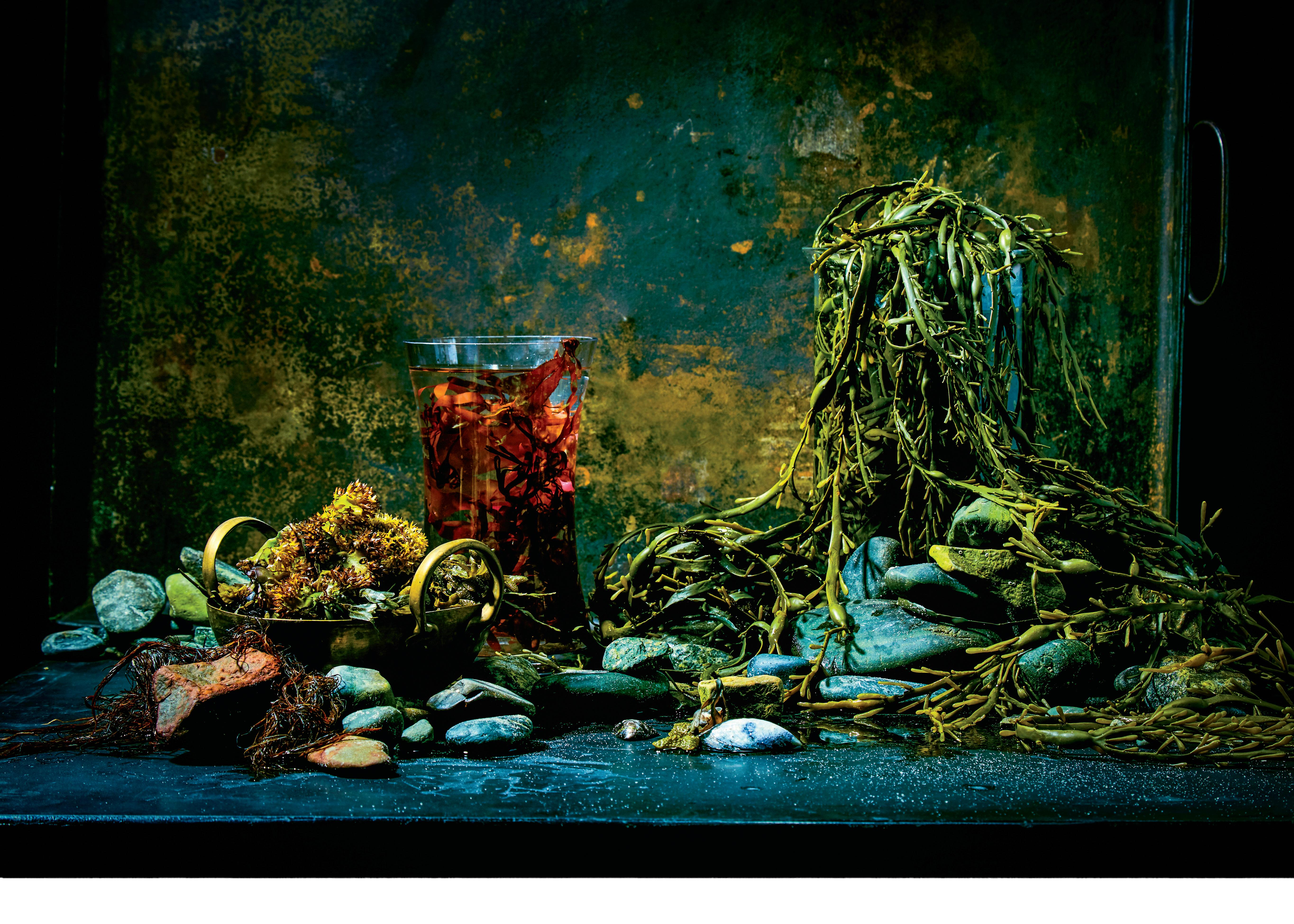

That, in fact, was how Micah had described his foraging strategy to me: “Look at a chart, look for trouble, go there.” All around us, the teeth of ledges rose in and out of the water with the swell. The water was the color of slate. The sky was spitting a 50-degree rain into a 50-degree sea. Micah expertly sidled the rowboat up to a ridge that breached the sea for a few hundred yards and said, “Get out.”
I stared at him in disbelief, teeth chattering. Here? Now?
“Get out fast,” he said. “I can’t get any closer.”
And so I and my wet suit flipped ourselves out of the boat and into the churning, neck-deep water. Micah tossed me an inner tube with a laundry basket jammed into the middle and handed me a fillet knife. “You should find lots of kelp along this ridge,” he told me. “Try to cut it cleanly. I’m going to work a little farther out.” As he rowed away, he glanced back at me. “Don’t drop the knife.”
Right. Iron grip on the knife, I scooched along the underwater shelf, the inner tube tethered to my wrist by a rope, hopping with each wave to keep from going under. Long, leathery things wrapped themselves around my ankles. They felt like eels, but I hoped they were kelp. Timing the trough between waves, I leaned down and grabbed one. Yep, kelp. I slashed at it with my knife, narrowly missing my leg, and tossed the slippery fettuccine into my basket. Then a wave picked up the basket and tossed it into my face. Don’t drop the knife.
I spotted Micah, who is very tall, very thin, and very 27, way out on a
submerged ledge, wearing snorkel gear and cutting kelp. He has the beard and wide eyes of a Byzantine saint, and he seemed to be walking on water. He brought up lovely, wide, 6-foot strands and quickly filled his basket. I, meanwhile, was fighting to wrestle my 4-foot kelp into the basket without spilling the basket, losing the knife, or getting smashed into the rocks. I was working so hard to stay on my feet that I barely noticed the rain and the icy sea.
Micah won’t go out in winter), he lives in a simple cabin on a tiny island off Maine’s midcoast. It’s one of the ledgiest sections of shoreline, which is doom for boats but heaven for seaweed, which needs to attach to rock near the surface, where the light is. Most days, he visits the surrounding ledges and islets at low tide, fills his boat with seaweed, returns to the island, and hangs his harvest on clotheslines to dry (wet seaweed quickly spoils). There, blowing in the wind like a load of dark stockings, it loses all its slime and 90 percent of its weight in a few hours and becomes as stiff as shoe leather. Once a week, he packages it, hauls it to the mainland in his lobster boat, and delivers it to customers by hand or by mail. “It’s an unbelievable amount of work,” he admitted. “I had no idea what I was getting into.”
The boulders behind me were draped in slippery brown seaweed and glowing pink lichen, the waves burst with white foam, and the spruce trees on Micah’s distant island were backlit by the dawn, and it occurred to me that of all the ways I’d ever imagined to make a living, this might be the hardest and the most beautiful. And I began to understand Micah Woodcock.
Micah is one of Maine’s handful of harvesters of wild seaweeds—or sea greens, as I’d taken to calling them, to differentiate from the piles of sea compost I’d always avoided on the beach. It’s an extraordinary lifestyle. During the eight-month harvest season (even

While there are no slackers in the seaweed guild, some harvesters prefer the species that can be picked on land at low tide. But Micah likes to live his life in the crashing interface of land and sea. “A lot of edible seaweeds only grow in places that are turbulent,” he said. “If sugar kelp is growing in a harbor or another place without much flow, you get much wider, weaker plants. But in a place like a reversing falls, where there’s a lot more current, you get stronger, longer, skinnier plants. I like them better. They’re more vital.” Digitata and alaria, two kelp species, grow at the lowest point of the low-tide line on ledges; to harvest them, Micah sometimes has to ride big breakers over the ledges to get his boat into the more protected spots.
(continues on p. 128)
On a gray dawn in October, a half mile off a small Maine island far from shore, Micah Woodcock and I found ourselves bobbing in a rowboat precisely where they tell you not to go in boats.
Micah Woodcock, harvesting kelp along the Maine coast. He was introduced to the profession by Larch Hanson, aka “the Seaweed Man,” one of a handful of back-tothe-landers who began working with seaweed in the early ’70s. opposite : The author joins Micah on his lobster boat.
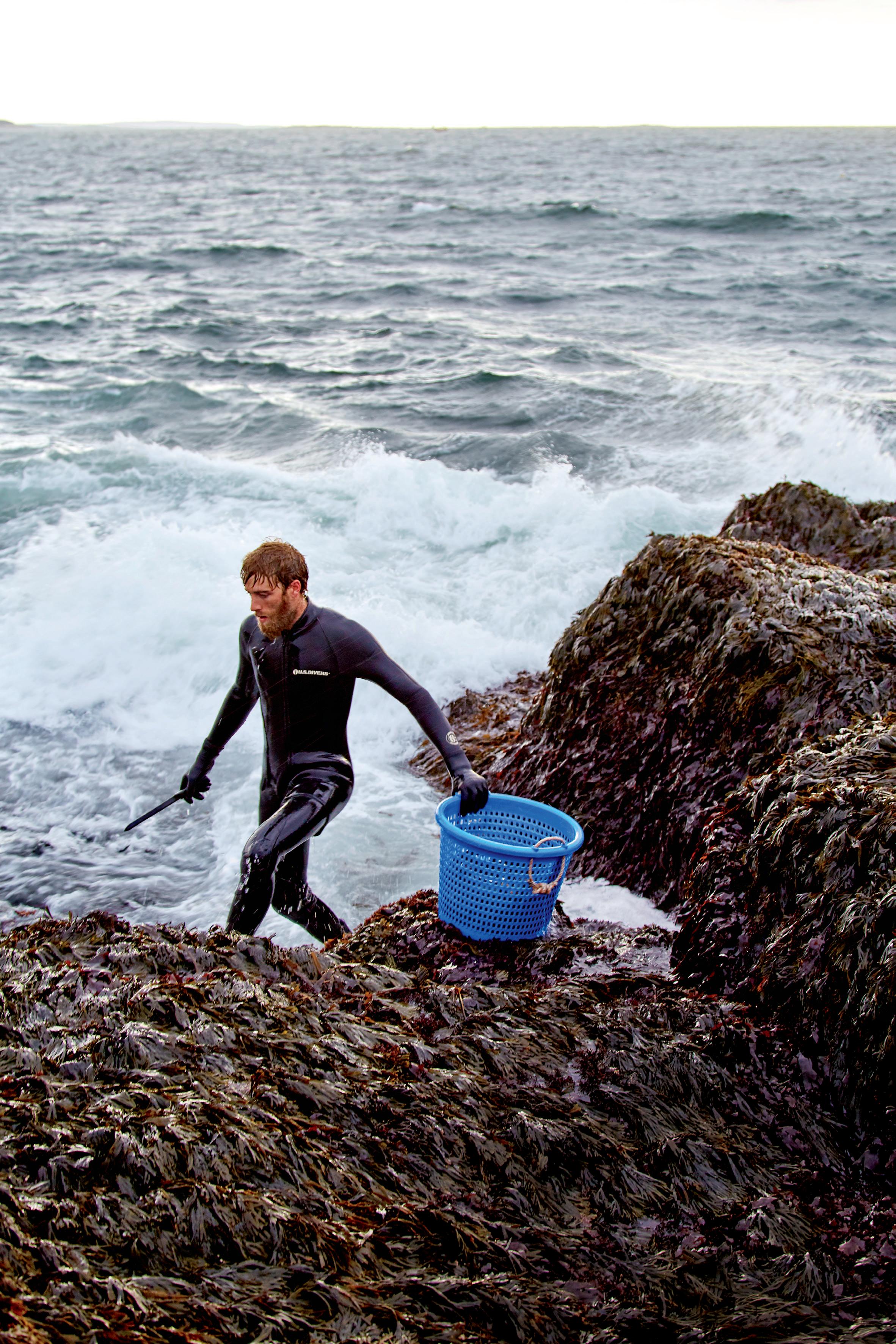
Randi Calderwood served his community all through his life. When that life was tragically cut short, his community gathered to honor him.
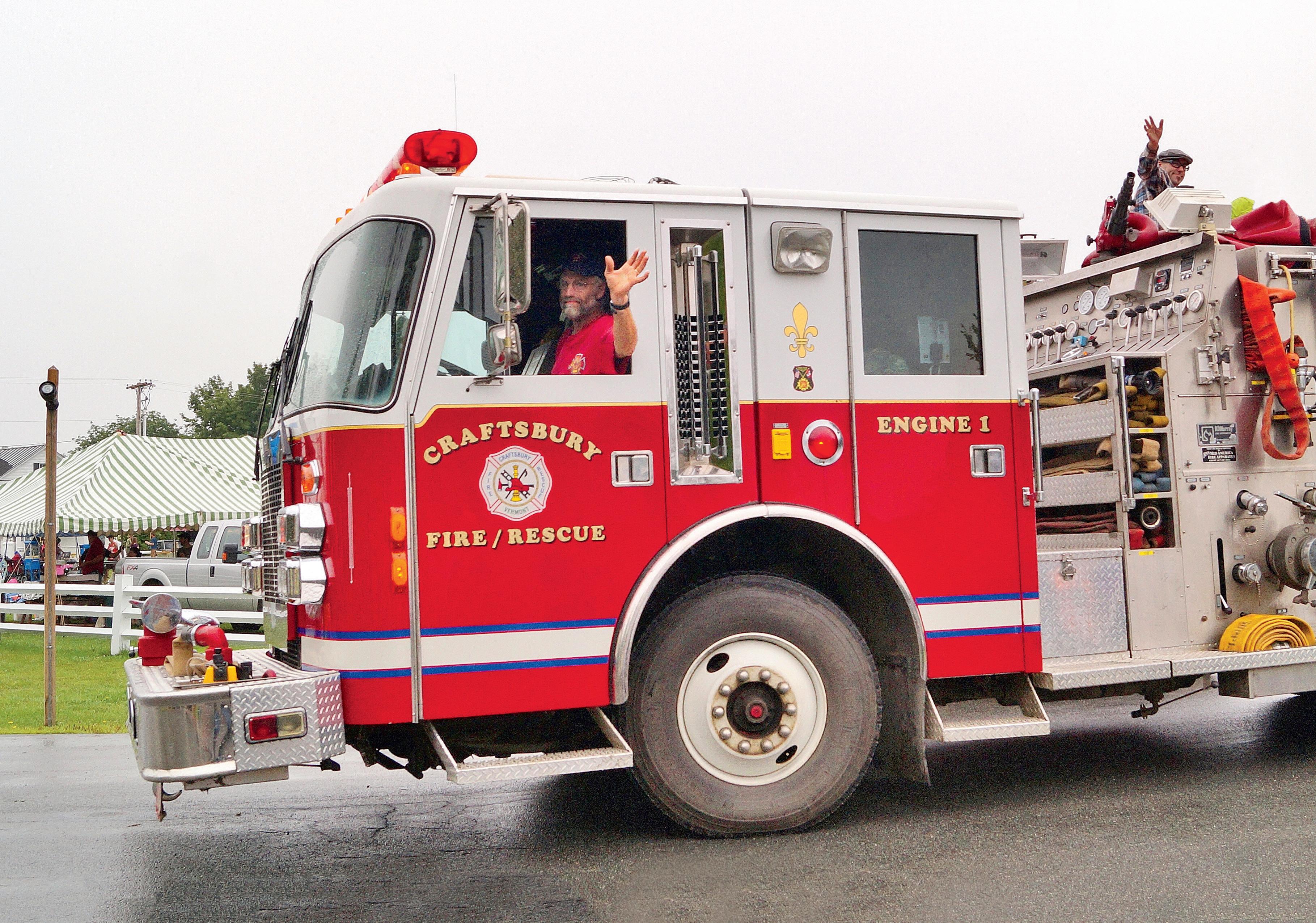
hortly after moving to Craftsbury, Vermont, I hired an excavator to dig a trench to run a water line between the house and the barn. As the excavator clawed a long hole and the work progressed, the driver’s buddy hopped into the new trench and began refining it with a shovel. Then, without warning, part of the trench wall collapsed. Dirt and gravel backfilled on the man till he was buried to the navel, immobilized, with more gravelly soil poised to cover him. The excavator driver blanched, and the man in the hole looked me in the eye and said, “I’d call 911 if I were you.”
When someone dials 911 in our remote county in the Northeast Kingdom, a dispatcher sitting in an office 60 miles away pages members of the appropriate department,
which in our case is the Craftsbury Fire Department or Hardwick Rescue or both. All 24 members of Craftsbury’s volunteer fire department—teachers, farmers, a tattoo artist, mechanics, loggers, carpenters—take their pagers wherever they go: clipped to a belt during the day and set on the bedside table at night.

The call, or “tone,” begins with a series of three electronic notes followed by the dispatcher’s voice requesting assistance at a physical address and giving a description of the emergency. For instance, it helps responders to know if someone just smells smoke or if a house is fully engulfed in flames. When a dispatcher issues a call, 24 pagers in our town sound out its message.
Within minutes of being called to “a man in a hole,” half a dozen members of the fire department sped over, parked their trucks, and began the extrication. Among them was the assistant fire chief, Randi Calderwood. Tall, bearded, and bright-eyed, Randi stood above the victim and grinned at him as if his predicament were no greater than that of a kitty lodged in a tree. Sure enough, the man was freed in the time it takes to smoke a cigarette.
The Craftsbury fire station sits by the Black River at the bottom of Calderwood Hill, where Randi grew up. The station, which shares a largely windowless building with the town garage, is a no-frills affair. Its bays are unmarked; members enter by a side door with a code lock. Inside, however, there are two gleaming engines and one rescue vehicle. In 2015, the department responded to 83 calls, roughly the equivalent of an emergency every four days (if only catastrophic events were that orderly).
Every member of the department knows what it’s like to be jolted out of sleep, interrupted at work, or summoned from dinner by a pager’s singsong tone signaling a neighbor in crisis—and that answering that call will mean being gone for one or two hours if it’s a car accident, more like six if it’s a fire. Why do our firefighters elect to give their time away to people besides their families? When I put the question to Thomasina Jacobs, an eight-year department veteran, she says it’s partly about giving back and wanting to offer much-needed help. But another reason, she says, is that a fire department, especially Craftsbury’s, is its own sort of family, with everyone caring for and looking after each other. Fire Chief Walt Gutzmann, who has been with the department since 1969, explains, “We come from diverse backgrounds, but maybe there’s a fraternity that develops, a commonality in the fire service”—perhaps a loyalty that intensifies with each call they answer. Walt says of the department, “You’ll find all the help you need here.”
Once, years ago, Randi Calderwood called on that help when his heifer fell into a manure pit. The department rushed over and looked down at the young cow, who was exhausted from flailing in the lagoon. So they rigged a sling out of fire hose and lifted her free. Walt admits that if it’d been his farm, he might have thought to shoot it instead, but Randi’s priority was family, which included animals.
So, at 5:30 p.m. on August 13, 2016, when dispatch toned out a call for a 58-year-old male on Echo Hill Road
trapped under a tractor, Walt’s stomach took a turn. He knew—everyone in the department knew—by the age of the man, by the address, that it was Randi.
August 13 had been Craftsbury’s Old Home Day, the community’s once-a-year party. Featuring a pet show, horseshoes, a bounce house, a water slide, and a parade, it’s like Town Meeting Day without the acrimony. And the fire department cooks everybody burgers. Walt and Randi and Thomasina and other members of the department spent the whole day up on the common. As usual, Walt manned the grill and Randi was “the assembler,” in charge of dressing up the burgers with all the fixings— onions, lettuce, ketchup—and then wrapping them. As they prepared for a frenzy of hungry customers, Randi took his heel and scuffed a line through the turf, and with a gleam in his eye he teased the grill crew, “Don’t you cross that line.”
After the parade, the crew returned to the firehouse. By then it was midafternoon. They unloaded the remaining food, stashing it away in coolers and storage bins. A few firefighters lingered, relaxing on aluminum chairs around a folding table in the makeshift common area set up between the fire engines and the rescue clothes— helmets, heavy gray coats, and yellow boots, each set hanging in a doorless locker beneath a member’s name: Urie, Britton, Gutzmann, Calderwood, Jacobs, McCann, Perkins, Marckres, Masse….

Eventually the members began going home, until it was just Walt and Randi. Noticing that one of the hoses that work the brakes on the rescue vehicle was leaking air, Randi grabbed a stepladder and tinkered with it till it was working again. Finally the two men left their firehouse by the side door. As they walked to their trucks, Randi said, “Well, I gotta go home now and get hay for Louise’s horse.”
Fifty minutes later Walt heard his pager tone out the call.
Randi had gone with his 23-yearold son, Andrew, to unload a round bale on a steep hillside. As Andrew watched, Randi maneuvered, using a piece of equipment called a telehandler to deliver the bale. Looking something like the offspring of a tractor and a dune buggy, a telehandler functions as both forklift and crane, enabling the farmer to reach out and clamp a round bale of hay, much as a hand grabs and lifts a coffee mug. Randi had been operating it all summer, using it to put up 5,000 round bales.
It was perhaps 30 minutes till dusk. Randi had just gotten a grip on a bale when the machine began to tip over. Feeling it go, he leaped clear, but it rolled again. And it landed on him.
Walt lives next to the fire station, so he was the first to open the codelocked door. Eric Britton came next and jumped into the rescue truck—the truck Randi had just fixed not more than an hour before. Walt took his own truck. They met Steve Perkins by the bridge. The three drove through
the village, then turned left and surged up the long hill past the fields Randi had been haying all summer, past the drying barn where Randi had stored all those bales. The road plateaued in East Craftsbury, and the group skirted the Presbyterian church—the one place Randi never wore his ball cap—and went past the assisted-living facility where Randi had served on the board of directors. The responders barreled straight down South Albany Road, passing Randi’s sugarhouse and his sugar woods, the broad maples shading the road, and then, just at the verge of reaching the dairy barn where that heifer had fallen into a lagoon of manure, they turned right onto Echo Hill Road.
Other members of the department were already there. Randi’s wife, Louise, came up from the field where the telehandler had been lifted off her husband with a bucket loader. “I don’t think you should go down there,” she told Walt. But Walt went. And until the coroner came at 10 p.m., the members of the Craftsbury Fire Department never left Randi alone. When the rain started, they covered his body, even though the drops falling on him would have been the gentlest of his afflictions.
Four days later, 100 fire and rescue squad members from throughout northern Vermont lined up in their uniforms and formed a human corridor for mourners as they entered the high school gymnasium for Randi’s service.
During the 29 years that Randi Calderwood served on the Craftsbury Fire Department—half his life—as well as a few concurrent years spent serving Hardwick Rescue as a medical first responder, he answered roughly 1,500 emergency calls on his pager.
This story, “Last Call,” also appeared in December’s digital edition of Yankee. It originated as one of Julia Shipley’s The Farmer’s Life columns, a regular highlight of the digital magazine. However, each of us who read the piece here at Yankee was immediately, deeply moved by the story of Randi Calderwood and his beloved town, and we felt it should be shared with all our subscribers, as well as with everyone who picked up Yankee on the newsstand.
The rest of Julia’s columns can be found in our digital editions, along with a wealth of stories—heartfelt, engaging, funny, and thought-provoking by turns—that you won’t find anywhere else. To learn how to read Yankee’s digital edition on your tablet or phone, or to become a subscriber, go to NewEngland.com/subscribe


As the service concluded, there would be one more: a singsong tone sputtered out of the pagers worn by every member of the department standing inside the gymnasium, so that the thousand people gathered heard the dispatcher 60 miles away issue his final summons:
Attention, Craftsbury Fire Department, this is Williston with final tone for K-2, Assistant Fire Chief Randi Calderwood: Rest in peace
Our patented Microsun™ lamps produce a quality of illumination almost as natural feeling as the sun itself. Whether you’re reading a book, working on a laptop or doing needlework, you can enjoy vibrant and natural light all day long, all year long.

The impact of a Microsun lamp will simply transcend any expectation you’ve ever had for home lighting. Instead of settling for weak light to save energy, you can now choose an efficient lamp that delivers a vibrant quality of natural light that people crave.
Why is Microsun the world’s best reading lamp? Just look under the shade. The Microsun light source is an electronically controlled Halide-LED system that uses a mere 90 watts of power. There is no other lamp like this.
Patented* Halide/LED lighting system



























Proprietary Microsun bulb








Uniquely brilliant lighting
Two SunStyle™ LED bulbs








Warm, ambient lighting



Three light levels
Choose Halide, LED or both









Why do such a thing? I wondered that more than once as the waves swept me and my basket off the ledge. I wondered it some more as we filled Micah’s rowboat with hundreds of pounds of kelp and alaria and returned to the island in the rain. I wondered it again as we hauled baskets of seaweed from the landing up to a little barn and hung it inside to dry. And I was still wondering as we peeled off our wet suits and stoked the fire in the cabin and set the coffeepot to perk and my shivers slowly subsided, until I realized I was having a really good time. What could be better than a morning of hard work in a world primeval? Micah agreed: “I love how ancient these species are. How resilient they are. How they grow in places where nothing else can survive. It’s such a beautiful, rarely seen world.”
At the moment, the modern world’s attention is fully on sea greens. Kelp is the new kale. Dulse is the new bacon. Which makes Maine the new California, because the great sea greens flourish on the Atlantic coast north of Cape Cod. “All the commercial seaweeds are cold water–loving seaweeds,” Shep Erhart, founder of the country’s largest sea greens company, Maine Coast Sea Vegetables, told me. “We’ve got a lock on it.” Indeed, as we toured his brandnew plant in Hancock, about 20 miles northeast of Micah’s island, we were in the Fort Knox of American seaweed. Women with band saws were cutting 10-foot-long pieces of dried kelp into bag-sized strips as a fine salt mist filled the air. Pallets of applewood-smoked dulse and Kelp Krunch energy bars sat on loading docks. There were bags, capsules, and shakers of nori, alaria, dulse, Irish moss, bladderwrack, and sea lettuce, all from the Gulf of Maine and the Bay of Fundy. Shep kept letting me smell things, coaching me through the differences. “Nori’s mild but nutty. Digitata tastes the sweetest. Alaria has an almost Soave quality to it.”
The plant was so new you could smell the paint. You could also smell
the skunky funk of dried seaweed infiltrating every corner. For decades, Shep ran everything out of an everexpanding “rabbit warren” of lofts, barns, and temporary buildings. Now a balding and bushy-browed gnome nearing retirement and slowly handing over the reins to his daughter Seraphina, he finally has his dream facility.
With 20 full-time employees, Maine Coast Sea Vegetables is the primary buyer of American sea greens. In 1971 Shep and his wife, Linnette, began harvesting alaria, which they’d realized was a local version of the expensive Japanese wakame they were buying for
mouthwatering hit. “It’s a great snack. It’s not for sissies, but once you get into it, you get hooked.”
Most of the world’s dulse comes from Grand Manan Island, a 21-milelong island in the Bay of Fundy seemingly designed for dulse. Its 300-foot cliffs shade the intertidal plant, which can bleach and toughen in the sun, and the Bay of Fundy’s famed 30-foot tides create a vast amount of intertidal real estate where it can grow. Locals on Grand Manan eat dulse like popcorn. For decades it’s been sold in small paper bags on the ferry, in gas stations, at roadside stands, and even as bar snacks.
their macrobiotic cooking, and started selling it to their friends, then to a few stores, then to national distributors. Pretty quickly they learned it made far more sense to process and distribute the stuff than to plunge into the waves after it, and today they buy from 50 wild harvesters and process 100,000 pounds of seaweed each year. Now that seaweed has broken out of the hippie aisle and gone mainstream, they hope to sell a lot more than that. Seaweed’s rising popularity stems in part from its new “superfood” status—it is astoundingly rich in vitamins, minerals, fiber, and omega3s—and in part from its having gourmet cachet in a culture obsessed with exotic, wild, and regional ingredients.
If there’s an “it” seaweed, it’s dulse. “It’s getting very, very popular,” Shep said, popping open a bag so that the rich applewood smoke smell filled the room. “You can eat it right out of the bag.” We did. It resembled wrinkled red cabbage leaves and chewed like salty salmon skin—definitely not bacon— but after a few seconds it dissolved like taffy, leaving me craving another
Now that the rest of us have discovered dulse (or “Columbused” it, as Micah puts it), not even Grand Manan can produce enough to keep up with demand. “Supply is a big issue right now,” Shep admitted. “We’re not going to get enough dulse for the fourth year in a row. And I’m going to have a hard time getting enough kelp this year.” Even in Maine, there are only so many places with the right combination of rock, current, and accessibility, and everyone involved is worried about overharvesting seaweeds that serve as prime habitat for many other species.
“Sustainability is a key issue,” said Shep. “This is one of the few fisheries that still has a chance at sustainability. All the other ones have pretty much shot themselves in the foot.”
Up to now, the grassroots nature of the seaweed industry in Maine has kept it in check, according to Micah: “With seaweed, the harvesters have a big stake in the long-term sustainability of it. It’s all very obvious. We all know who’s harvesting where, and we give each other area to work. It’s culture and tradition, like with lobstering. And that’s a huge part of sustainability. You need to have strong communities and people who are invested in the long-term health of the places where they live.”
Yet no amount of rules or community self-monitoring can solve the new imbalance between supply and demand. If Maine sea greens are to feed the nutrient-starved children of America, we need a lot more than the wild can provide. That’s why virtually all fingers in the industry point toward
“I love how ancient these species are. How they grow in places where nothing else can survive. It’s such a beautiful, rarely seen world.”

MANUFACTURER’S COUPON EXPIRES 12/31/17
MANUFACTURER’S COUPON EXPIRES 12/31/17





DO NOT DOUBLE
DO NOT DOUBLE
Save $1.00 on 12 oz. Absorbine® Veterinary Liniment Gel













and other equestrian




RETAILER: W. F. Young, Inc., will redeem this coupon for face value plus 8¢ handling, provided it is redeemed by a consumer at the time of purchase of one 12 oz. Absorbine® Veterinary Liniment Gel. Coupons not properly redeemed will be void and held. Reproduction of this coupon is expressly prohibited. Any other use constitutes fraud. Consumer must pay sales tax. Offer good only in USA and Military APOs/FPOs. Mail to: CMS 11444, 1 Fawcett Dr., Del Rio, TX 78840. Cash value .001¢. Void where taxed or restricted. Offer limited to one coupon per item purchased per transaction. Not to be used in conjunction with other coupons.
RETAILER: W. F. Young, Inc., will redeem this coupon for face value plus 8¢ handling, provided it is redeemed by a consumer at the time of purchase of one 12 oz. Absorbine® Veterinary Liniment Gel. Coupons not properly redeemed will be void and held. Reproduction of this coupon is expressly prohibited. Any other use constitutes fraud. Consumer must pay sales tax. Offer good only in USA and Military APOs/FPOs. Mail to: CMS 11444, 1 Fawcett Dr., Del Rio, TX 78840. Cash value .001¢. Void where taxed or restricted. Offer limited to one coupon per item purchased per transaction. Not to be used in conjunction with other coupons.
RETAILER: W. F. Young, Inc., will redeem this coupon for face value plus 8¢ handling, provided it is redeemed by a consumer at the time of purchase of one 12 oz. Absorbine® Veterinary Liniment Gel. Coupons not properly redeemed will be void and held. Reproduction of this coupon is expressly prohibited. Any other use constitutes fraud. Consumer must pay sales tax. Offer good only in USA and Military APOs/FPOs. Mail to: CMS 11444, 1 Fawcett Dr., Del Rio, TX 78840. Cash value .001¢. Void where taxed or restricted. Offer limited to one coupon per item purchased per transaction. Not to be used in conjunction with other coupons.
RETAILER: W. F. Young, Inc., will redeem this coupon for face value plus handling, provided it is redeemed by a consumer at the time of purchase 12 oz. Absorbine® Veterinary Liniment Gel. Coupons not properly redeemed be void and held. Reproduction of this coupon is expressly prohibited. other use constitutes fraud. Consumer must pay sales tax. Offer good USA and Military APOs/FPOs. Mail to: CMS 11444, 1 Fawcett Dr., Del Rio, 78840. Cash value .001¢. Void where taxed or restricted. Offer limited coupon per item purchased per transaction. Not to be used in conjunction other coupons.

aquaculture as the future of sea greens. And in Maine, if you follow those fingers, they lead to Sarah Redmond.
On a January morning that made my fall dip with Micah feel like a day at Club Med, I hopped into a skiff with Sarah and sped out to a square of sea in Frenchman Bay marked by four orange buoys. Nothing else was moving on the bay. We were just a few miles up U.S. 1 from Maine Coast Sea Vegetables, which was not entirely coincidental: Shep was once Sarah’s partner in this farm. The snowy bulk of Cadillac
Mountain loomed above Bar Harbor and the breeze froze our cheeks until we could barely speak, but it felt clean and bracing on the water. I could see lines running between the buoys about 5 feet beneath the surface. Sarah hooked one and pulled it up. A curtain of footlong baby kelp plants hung from it, dripping diamonds in the winter light.
“Aren’t they beautiful!” said Sarah, who when I met her was the seaweed aquaculture extension agent for the University of Maine; today she’s a fulltime seaweed farmer. A brown-eyed bundle of seaweed fervor, Sarah could
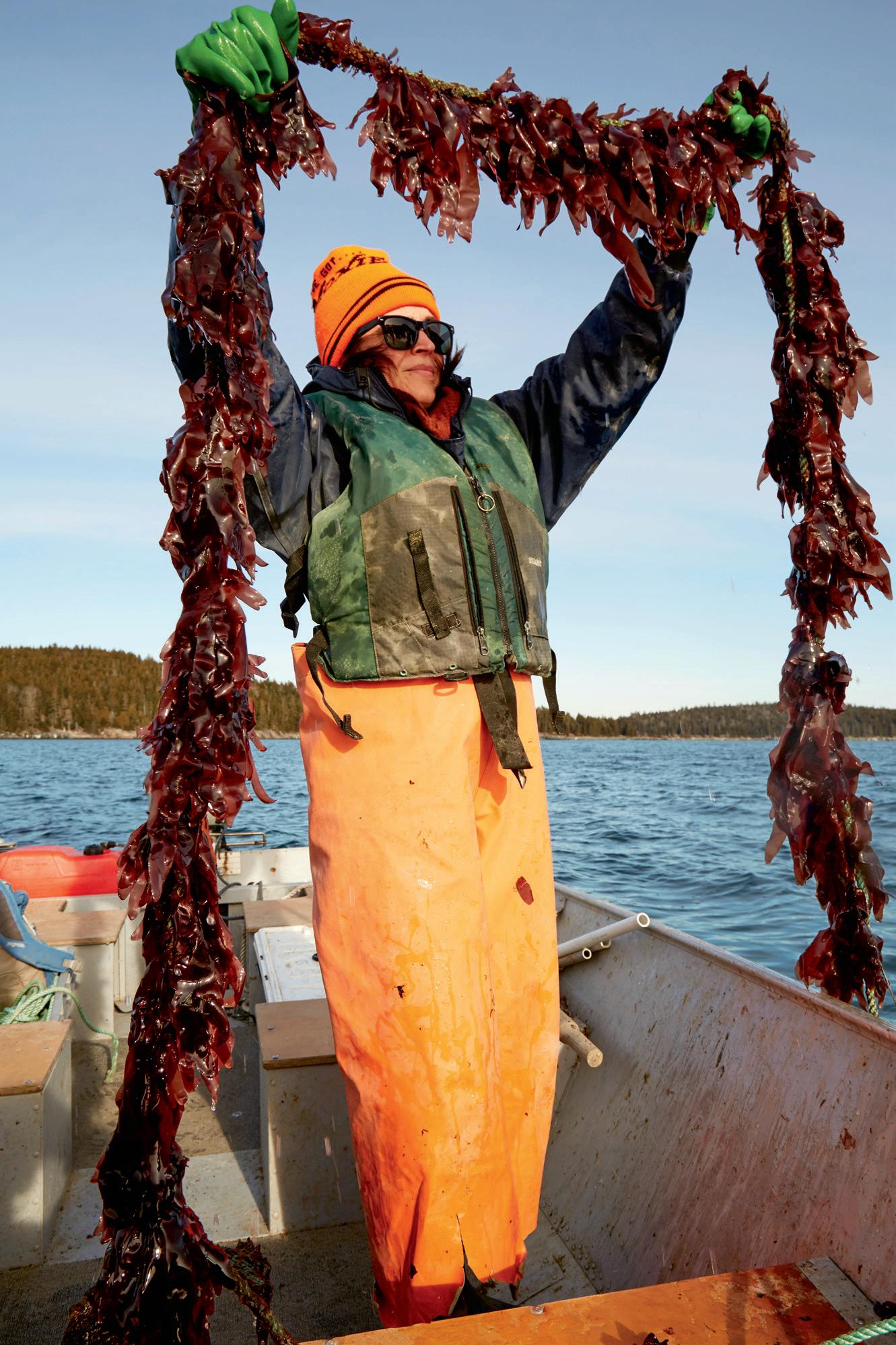
make a sea greens fan out of a polar bear, but she was right: They were beautiful. And they were beautiful because they were supple, and shiny, and alive. The winter landscape was barren, but this kelp was burgeoning. Sarah had planted it in the fall, and it was just getting started. As the daylight increased in February and March, it would take off, growing several centimeters a day. By the time it was harvested in spring, each strand would be about 10 to 15 feet long and weigh about 10 pounds per foot. Unburdened by gravity or root systems, seaweed grows at a rate no terrestrial crop can touch, even in winter, and that has a lot of people very, very excited about farming it.
To say that seaweed aquaculture is the greenest form of farming on earth does not do it justice. It is so much greener than anything else that it needs to have some new color invented for it. It makes something from nothing, pulling excess carbon, nitrogen, and phosphorus from the water and assembling it into nutrient-rich organic vegetables. That gives it a negative carbon footprint. More seaweed, healthier planet. A seaweed farm can produce twice the protein per acre of a soybean farm and 17 times that of a livestock farm. And it does it all without any inputs of energy, fertilizer, or water.
Many experts believe seaweed farms could feed the world using a fraction of the resources used by agriculture. The industry in the U.S. is growing, but it lags far behind that of other countries. Most of the seaweed consumed here comes from Asia, where seaweed aquaculture is a $5 billion industry.
At UMaine, it had been Sarah’s job to change that. “Stuff is happening so fast it’s hard to keep track,” she said. “There are farms up and down the coast. Tons of people are excited about doing this in Maine.” Surprisingly, she’d been deluged with requests from fishermen who had either given up on cod or were looking to do something in the off-season. “Fishermen already have boats, they already have knowledge of the water, and they’re into it.”
What they don’t have, yet, is a system. No one is waiting on shore to buy, dry, or distribute the seaweed they
The Pelatiah Leete House is one of the earliest surviving dwellings built in Guilford, CT in the early 18th century, by Pelatiah Leete, the grandson of Guilford founder, and Connecticut governor, William Leete. It is one of only a handful of properties in Guilford that is included on the National Register of Historic Places. In 1781, during the American Revolution, the Battle of Leetes Island was fought across the road from the house and its surviving 1705 barn, and Simeon Leete, who lived in the house at that time with his wife and three small children, was mortally wounded near the conclusion of the battle. He was brought back to the house, where he died, at age 28, the following day. His gravestone is around the corner from the house, on land owned by the Leete family since 1661, and an annual celebration of his life is held every June on the Sunday nearest June 19, the anniversary of his death date. The Sixth Connecticut Regiment of the Continental Line performs musket drills and live firing at the event, which draws numerous neighbors and townspeople.



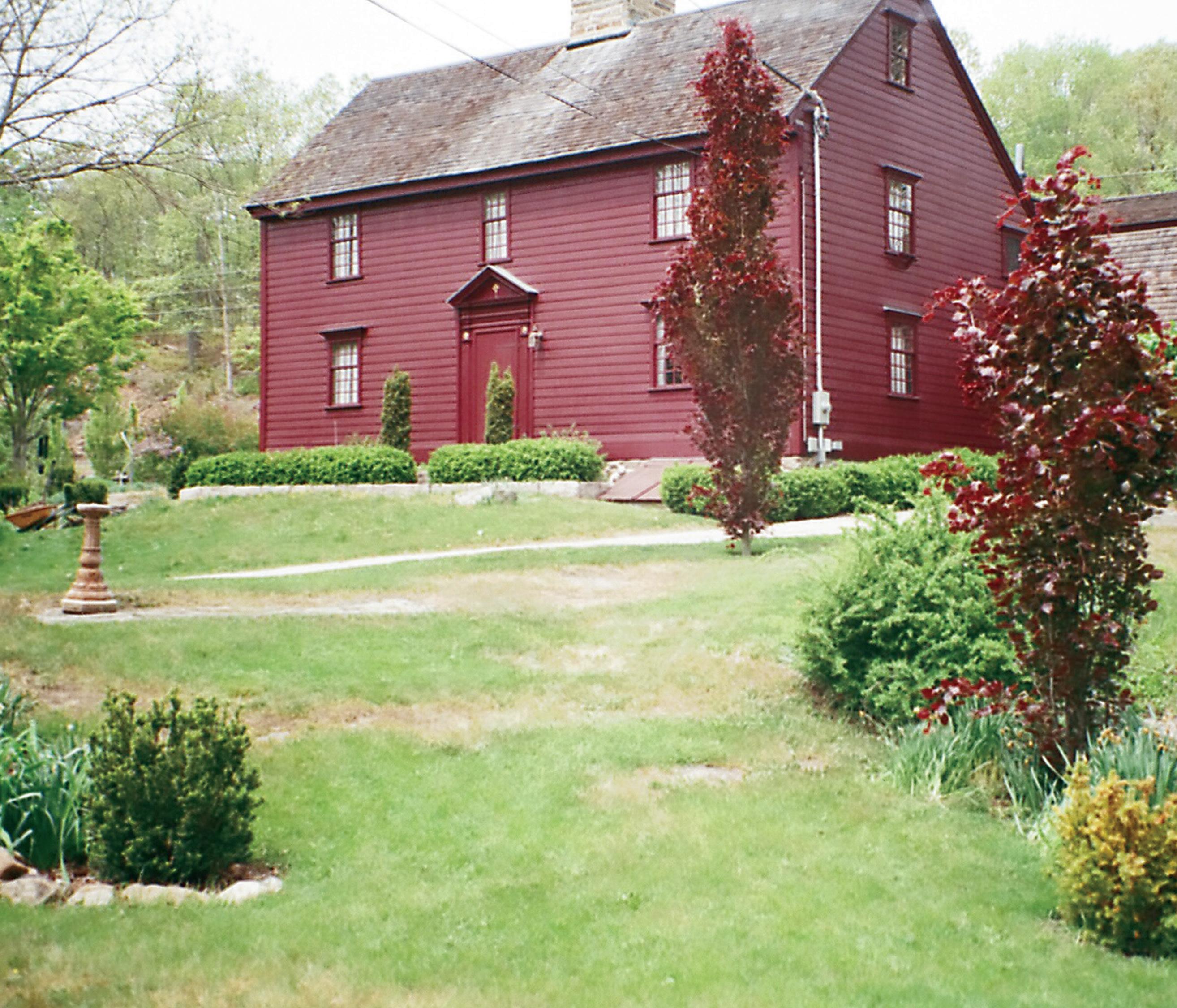
P.O. Box 130
•

Perkiomenville PA 18074



Email: info@old-village.com



Tel: 215-256-0077 • Fax: 215-256-0022
Toll Free: 800-498-7687 | www.old-village.com




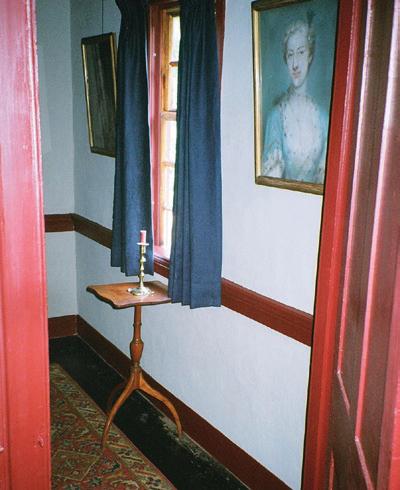
grow. Shep is looking into it, but for now his customers are attached to the robust flavors and perceived mojo of wild product. And even if the system were in place to get it to market, farmed Maine seaweed would still have to compete with cheap Asian seaweed.
Sarah was quick to point out the mismatch: “We have some of the best seaweed in the world! Asian seaweed can’t compete with ours. There’s a huge flavor difference. I didn’t like seaweed at first, because my only experience was with Asian seaweed, which tastes fishy. Ours always tastes fresh and clean.”
The difference, Sarah said, is that a lot of Asian seaweed is being grown in some grim industrial waters. But the market has not learned to differentiate.
Perhaps Maine seaweed needs a makeover, I suggested. And then I proposed the term “sea greens,” which was exactly the wrong thing to say to Sarah Redmond, seaweed evangelist. “I’m not on board with that,” she said as she glared at me and chewed on fresh kelp, her nose and cheeks frosty pink. “It’s seaweed! Be proud of it! It’s amazing!”
Sarah might be the only person in the country who grew up wanting to be a seaweed farmer. “I’m a plant person,” she shrugged. “I like growing things. I spent a lot of time at the shore as a kid. Seaweed attracted me.” She enrolled as a graduate student under Charles Yarish, the University of Connecticut professor who is America’s leading expert on seaweed aquaculture. At UConn, she designed the seaweed seeding system used by the entire New England industry. Its simplicity is hugely appealing: When a kelp plant is ready to produce spores, in summer, you put it in a tank of water with some thin line. The spores attach to that line; when they’ve matured into juvenile plants, you wind this “seed” line around a rope and suspend it from the ocean surface. The plants do the rest.
Sarah graduated from UConn in 2012 and was immediately hired by the University of Maine to develop seaweed aquaculture in the state. In her labs at UMaine’s Center for Cooperative Aquaculture Research on Taunton Bay, she produced spools of seed line and gave them away to new kelp farmers.
Sarah dropped the kelp line back into the water and we moved on to a line draped in alaria, the fernlike cousin to wakame. We nibbled on it as I stuffed a mesh bag to take home, freezing my hand in the process. It was tender, slender, and spunky, the Audrey Hepburn of salad greens. It had an addictive crackle and a lively green-tea flavor.
If these were the wimpy plants Micah disdained, well, I guess that made me a wimp too. I realized that in my seaweed travels I had accidentally recapitulated the Fall of Man, from Micah’s prelapsarian wild forests to Sarah’s convenient kelp plots. And as profound as dreamtime with Micah had been, it was Sarah who would be feeding The Future.
If The Future was willing to eat it. Of that I still wasn’t sure.
Two days later, The Future came stomping into our mudroom after school, ravenous, and regarded the bowl of seaweed I set before him with suspicion. The Future is 17, his name is Eric, and after school he’s in no mood to be trifled with until copious carbohydrates have been consumed.
“Dulse,” I said, before he could ask. Then I gave him the spiel about the Grand Manan islanders and popcorn.
He flicked a piece into his mouth, chewed, swallowed. “Good,” he said. Then he polished off the bowl.
OK, I’d figured dulse might be easy. The real test would be dinner, a full-on seaweed smorgasbord. When I consulted my new seafriends about recipes, I heard a lot of the same suggestions.
“Kelp is really good in heavy, hearty, pot-roasty dishes,” Micah said. “I cut it up dry with scissors and add the pieces to any savory liquid dish and cook it for 30 minutes or five hours. You want to have either nice tender pieces, or you want it to dissolve. In the middle you get sea-monster gooeyness.”
“We love seaweed!” said Andrew Taylor, the chef at Portland’s wildly popular Eventide Oyster Co. “Kelp makes its way into almost all of our stocks, soups, and sauces. It provides a wonderful depth of flavor to everything you put it in.”
A flavoring, in other words, which is the same thing Shep told me. “It’s just a no-brainer. Anything you’re cooking in water, you put some kelp in that broth. It has that umami taste, plus all this rich mineral content, plus polysaccharides that give a little body to your soup.”
Honestly, if every hockey mom in America started making her soup broth out of Maine seaweed, it would use everything the farms can grow and we could all declare victory. But I wanted seaweed to be more than the bouillon cube of the 21st century. I wanted it to be ... food.
So I fried some nori in oil until wicked crisp. If dried dulse was the popcorn of the future, this was clearly the potato chip.
I tossed the alaria in sesame oil and rice vinegar and made a superb, if not terribly creative, seaweed salad.
I concocted a soba noodle soup flecked with bright green bits of alaria and enriched with a kelp broth. Who would object to such a thing? Certainly not The Future, who cleaned two bowls.
And for my pièce de résistance, I boiled a tangle of kelp noodles, drenched them in olive oil and garlic ... and quickly threw them out. I felt like Captain Nemo battling the giant squid. A lot of people would like kelp to be the new linguine, but for now it just isn’t.
Still, I thought my success rate was pretty high, and I felt confident that seaweed was more than a trend. I asked Eric how he felt about it.
He shrugged. “Just like any other ... land weed.”
“Shouldn’t we call it sea greens?” I tried, ever hopeful.
He grimaced as though I’d asked him if he wanted to go to a James Taylor concert with me. “It shouldn’t have to masquerade as spinach.”
Right. “So, to you, it’s just food.”
“Yup.”
“And it’s good?”
“Yup.”
“Would you say really good?”
Another shrug. “Good enough.” And then The Future grabbed the bag of dulse and went up to his room to check his Tumblr feed.















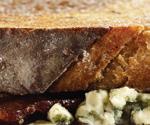












































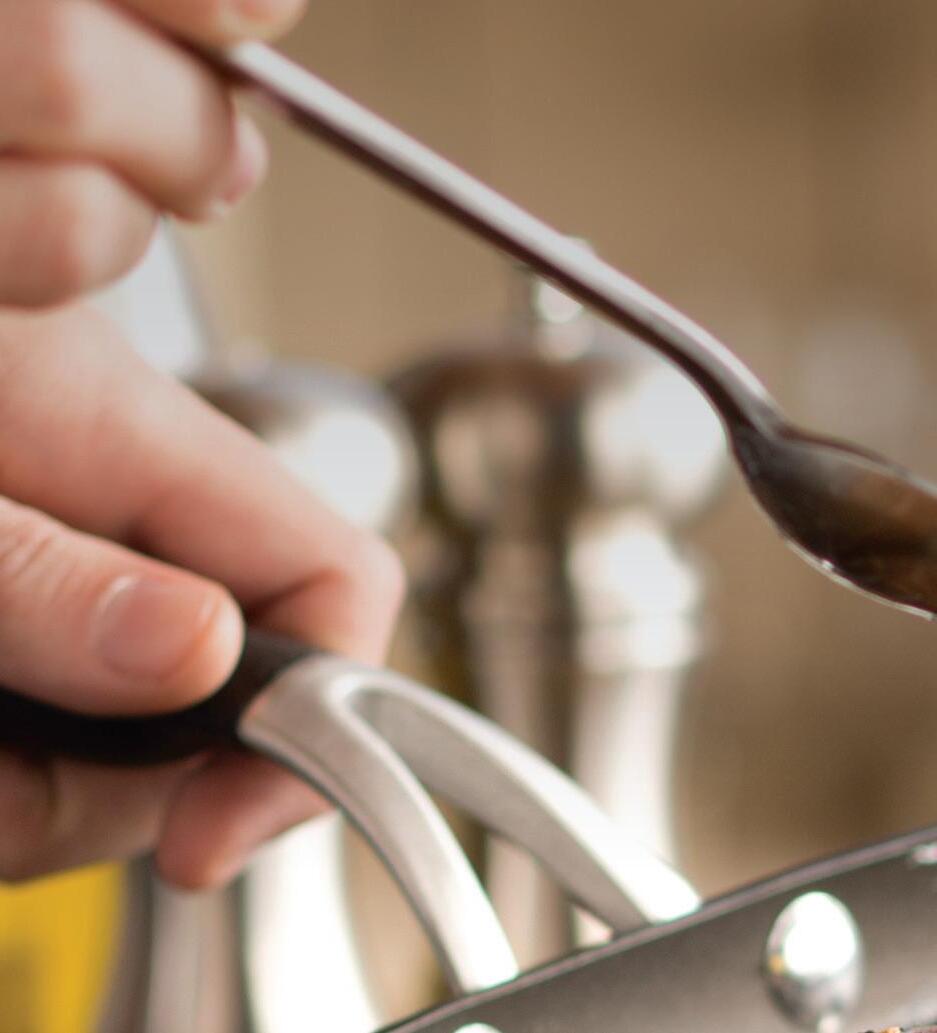


site at the flagship food, wine and drink festival of Martha’s





rooted in the island’s some of the region’s best local culinary talent, including the island’s farmers, fishermen, oyster producers, and artisans in collaboration with some of New England’s best chefs and vintners from around the world for a unique to the island celebration.
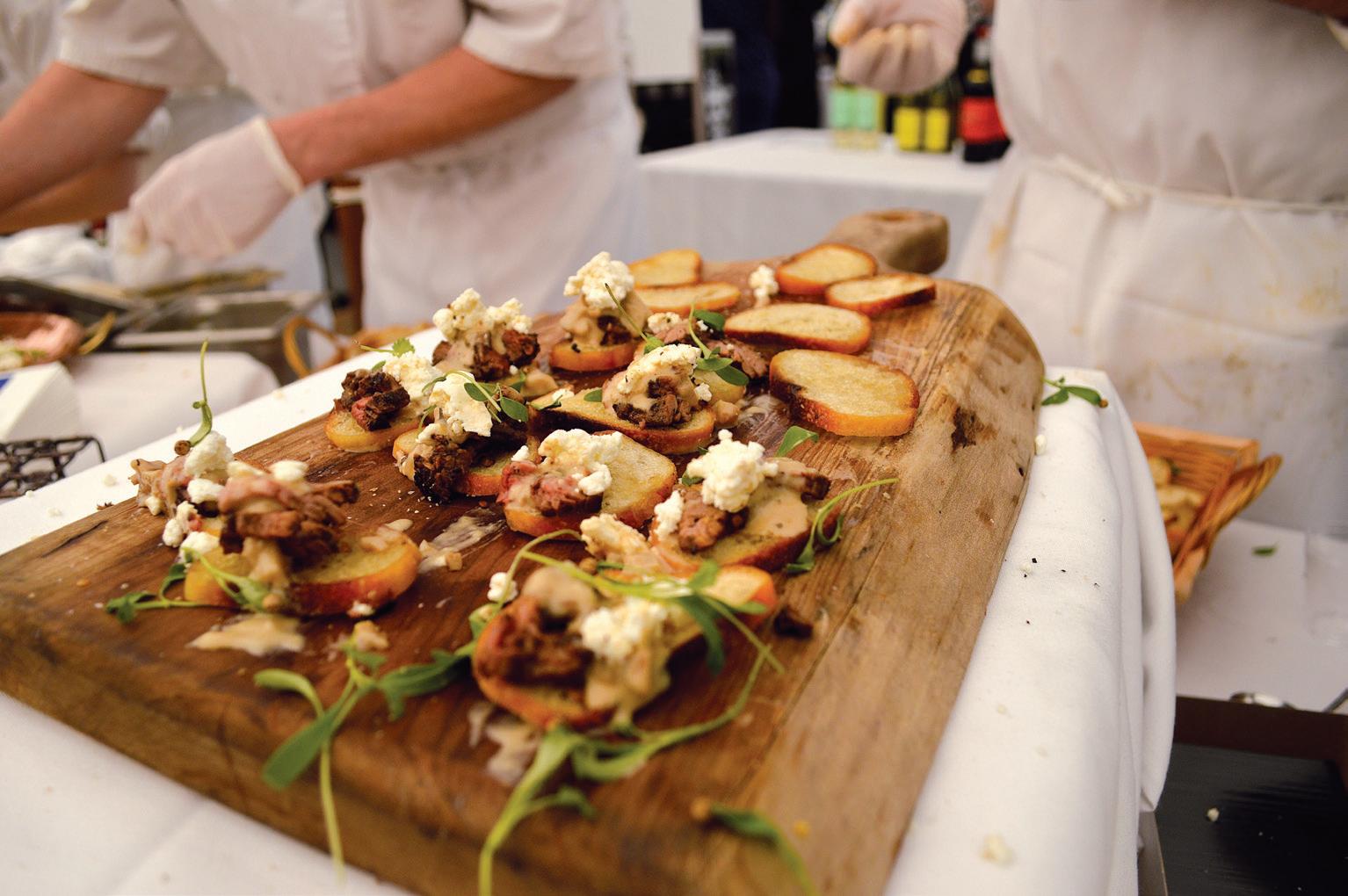
Look for us at next year’s event Oct. 19-22, 2017











Caravan makes it so easy—and so affordable—for you to visit Costa Rica.
Your Costa Rica vacation is all-inclusive with all meals, all hotels, a great itinerary, all activities, all airport transfers, and all transportation and excursions in Costa Rica with a professional Tour Director from start to finish.

You see more on a Caravan Tour with more actual visits and more included features. Hike in jungle rainforests, view volcanoes, soak in hot springs, cruise through biological reserves and relax on tropical ocean beaches.

“ All hotels were excellent! There is no way I would have stayed in such superior and sophisticated hotels for the price I paid. ”

—Client, Salinas, CA

Trust Caravan’s 65 years of experience with bus tours of quality and value. Caravan's strong buying power gives you great vacations at prices much lower than you can find anywhere.
Join the smart shoppers and experienced travelers who rely on Caravan to handle all the details while you and your family enjoy a well-earned, worry-free vacation. ¡Hasta la vista!
To advertise please call Steve Hall at 603-933-0426







EnergAire continuously purifies up to 4,000 cubic feet (a large room) of air and makes it breathable and invigorating. Restores natural ion balance to unhealthy environments caused by industrial pollution, automobile exhaust, central airconditioning, and heating, smoke, dust, pollen, animal fur. . . removes microscopic pollution particles not removed by any other method of air purification. EnergAire was rated Number One for speed of removal of cigarette smoke by the leading U.S. consumer protection magazine. It has no noisy fan, no costly filter, and requires no maintenance. Uses less than 2 watts. 9" high. 3" diameter. Weighs less than 1 pound. $59.95


RODAR is the super-powerful professional ultrasonic pest repeller with up to 60 or more times the power of other devices — and power is what makes RODAR so effective. RODAR ultrasound equals a jet engine — noise unbearable to pests but at frequencies humans and pets cannot hear. RODAR units are completely safe. RODAR drives pests out and keeps them from getting in. Handsome simulated walnut cabinet 5-5/8 high. Weight 1-1/2 pounds. Uses less than 5 watts. $89.95


90-day money-back guarantee — 12-month warranty.To order: Send cost for unit(s) plus $10.00 each for shipping and handling (in Mass. add 6.25% tax) by check, money order, MasterCard, Visa, or Discover number and expiration date to Micron Corp. Call Toll-Free















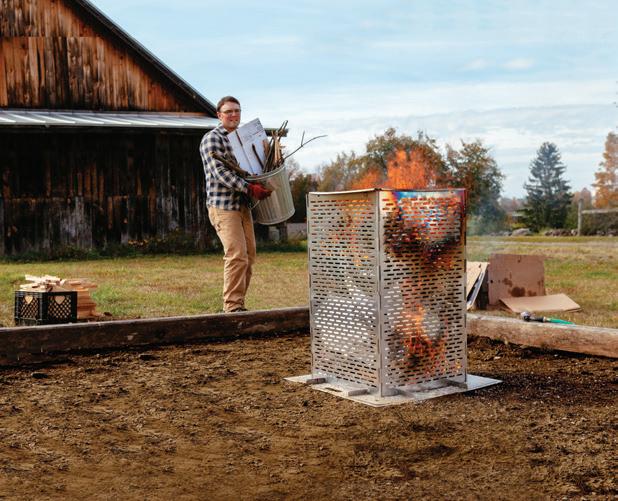
































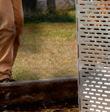










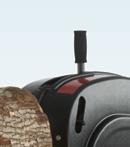



















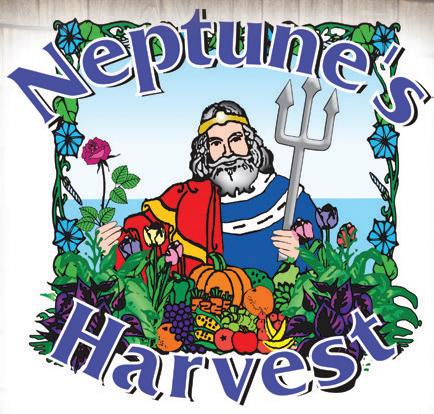

ONION LIGHTS ANCHOR LIGHTS
CHANDELIERS • SCONCES


Available in: SOLID COPPER or SOLID BRASS 17 Jan Sebastian Dr., Unit #1, Sandwich, MA 02563 508-833-0515 sandwichlantern.com








Issue:

August 2013
REMEMBER WOOL? Nature’s solution to the comfort zone for any environment. Woven on antique looms, we make them like they used to, only better!
REMEMBER WOOL? Nature’s solution comfort for environment. looms, make only




LIMITED EDITION ! Bioregional and Sustainable, soft grades of local wool woven in three sizes with limited edition stripes of SEACOLORS yarns.
LIMITED EDITION Bioregional Sustainable, of woven in three sizes with limited edition stripes of yarns.


AN HEIRLOOM FOR TODAY, CONSERVING MAINE FARMS AND MILLS FOR TOMORROW. Grown, dyed, spun, woven and properly fulled and napped within a local radius, The Maine Blanket is committed to bioregional production and processing that helps our soils, our people and our New England economy continue a tradition of excellence in craftsmanship. Our farms are under easement where sheep are raised on grass, maintaining soil


Issue:_________________________


carefully. Approval must be returned by _______________________ for errors once proof has been signed— or if not returned by the above date. color proof/pdf is to show color break only. Colors do not accurately actual printed advertisement as it will appear in the publication.

mark them clearly.________________________________________________________ ________________________________________________________ Date










proof necessary) Signature: _________________________________________________
(send new proof) Signature: ______________________________________________

ONE AT A TIME… BY HAND
Y A N K E E
1


The Original All Wool Dry Mop For Over 107 Years
Handmade in Vermont, this pure Wool Dust Mop is the ecological alternative to disposable chemically-laced pads. The swivel head provides maneuverability for easy cleaning. The new durable Velcro backing allows for quick & easy removal of the dust head from the 12" frame for laundering. With 48" wooden handle. Dusting area measures 11"x18". $32 (plus $7.95 S&H)

Shop online: sladust.com
Sladust - PO Box 624 - Woodstock, VT 05091
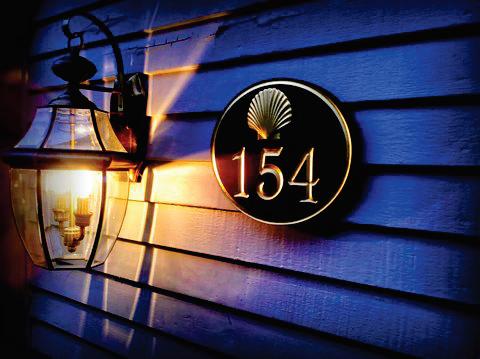
802-779-2541
Online Coupon: YM16 (exp. 12/31/17) #100 Big Wooly

1-800-477-1856 www.dallaspridgenjewelry.com





Unconditionally Guaranteed • Call for Free Catalog
CHINA CRYSTAL SILVER replacements.com · TABLEWARE EXPERTS. More than 11 million pieces in vintage and current patterns. Call 800-737-5223, visit our retail store, or browse online.
REAL ESTATE
VACATION RENTALS

Allow us to ship a gift box of live lobsters, crabmeat, scallops, and other items of your choice to someone special. Your customized order will be hand-selected from only the finest seafood Maine has to offer. Shipping year-round. Gift Cards available too!
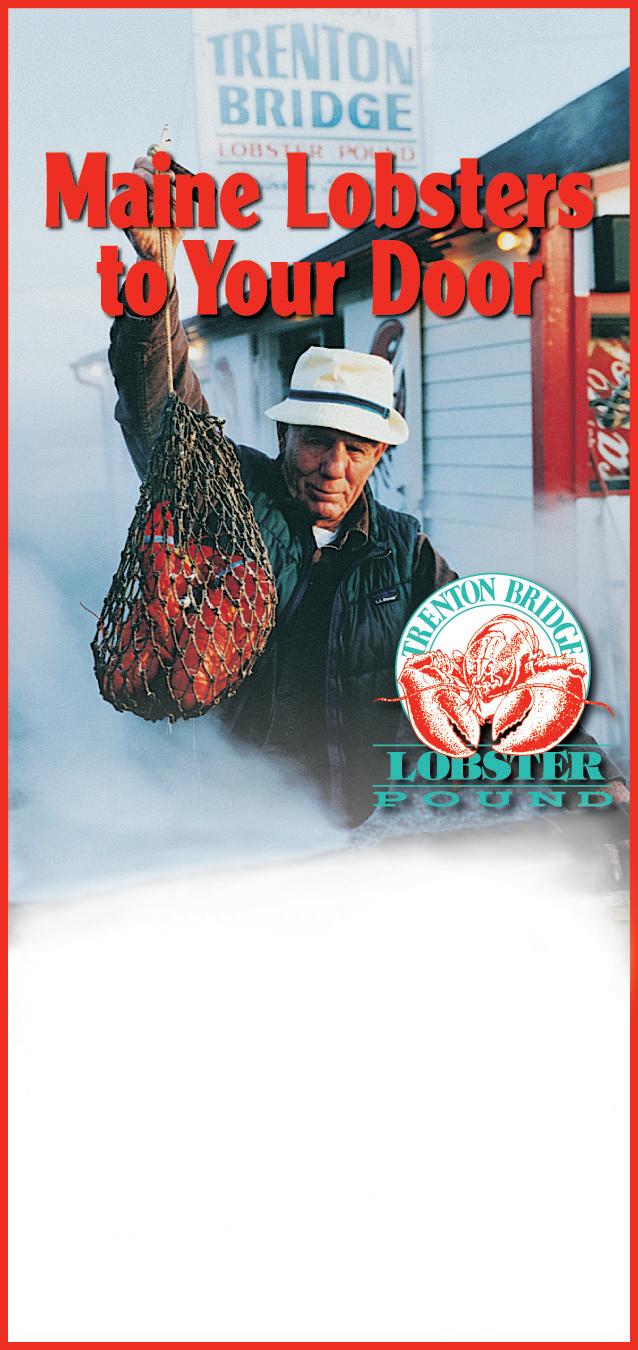
Visit our Web site trentonbridgelobster.com
Trenton Bridge Lobster Pound® 1237 Bar Harbor Road, Trenton, ME 04605 207-667-2977 Fax 207-667-3412
Choose from 5 self-catered southern Vermont historic homes, including Rudyard Kipling’s Naulakha, all authentically restored, fully equipped, comfortably furnished, available year-round. www.landmarktrustusa. org or call 802 254 6868
WANTED TO BUY
There may be OLD POSTCARD TREASURES in that dusty shoe box. Phone Dick @ 508-875-3697, 2-9pm. LET’S TURN OLD POSTCARD TREASURES TO CASH!





Dozens of photographs by Burt Vernon Brooks, including Billings Sisters with Milk Pails, have been collected and preserved by the University of Massachusetts Amherst. Included in the collection are images of people and places in the four Massachusetts towns that would be flooded in the 1930s to create the Quabbin Reservoir: Enfield, Dana, Prescott, and Greenwich.
Burt Vernon Brooks found inspiration in the rural villages along the Swift River in Massachusetts. He didn’t know his work would outlive the places he saw through his camera.
t first glance, this photograph of the Billings sisters, Emma and Margaret, collecting milk pails on a winter day sometime between 1905 and 1910 in Greenwich, a village in western Massachusetts, seems to be just an ordinary farm chore frozen in time. The photographer was Burt Vernon Brooks. Born in 1849 in Brimfield, Massachusetts, Brooks grew up in the hardscrabble farm life, but in middle age he discovered his calling as a photographer. Finding his eye drawn to the simple tasks of country people going about their lives, he spent his days in the rural villages of the Swift River Valley, where he was “hardly ever seen without

a camera strapped to his back,” writes Donald Howe in Quabbin: The Lost Valley. Brooks died in 1934, five years before the Swift River was dammed and the villages he had known were lost to history. Of the four villages that were drowned, Greenwich was the oldest. What Brooks did not know when he took this photo of the Billings sisters, and so many others, was that he was creating a visual epitaph for the valley. Today, his images remind us not only that people once lived where there is now only water, but also that a photograph sometimes preserves more than memory. Sometimes, it also becomes a memorial.
—Mel Allen
